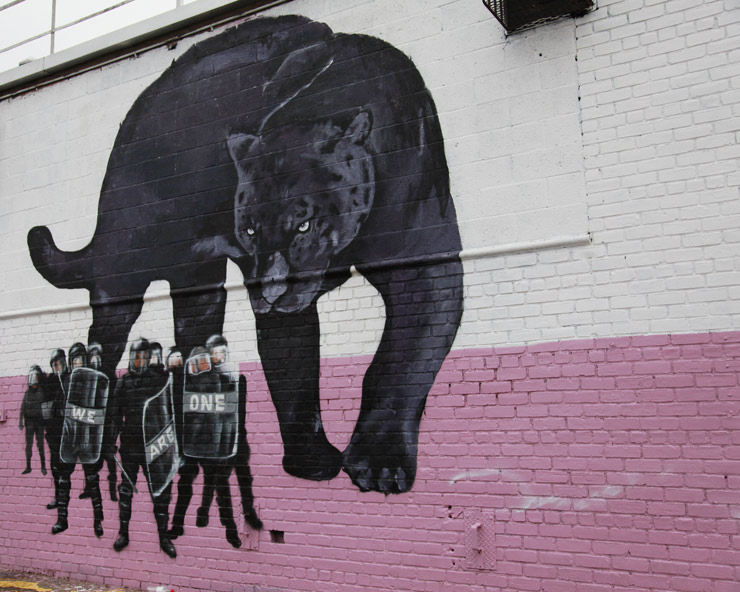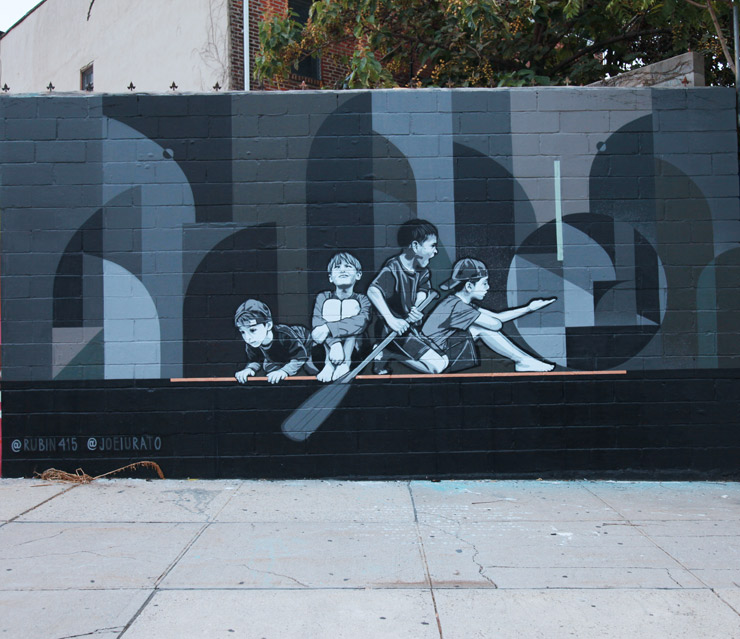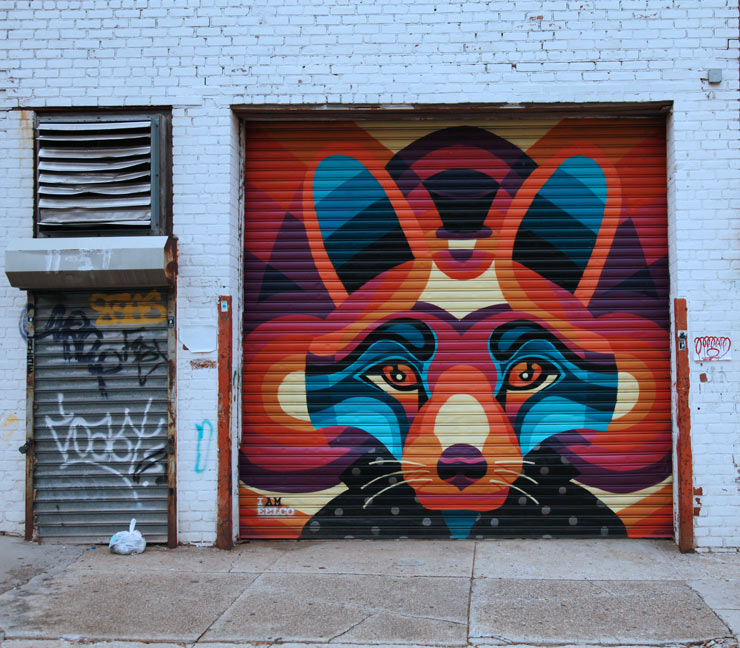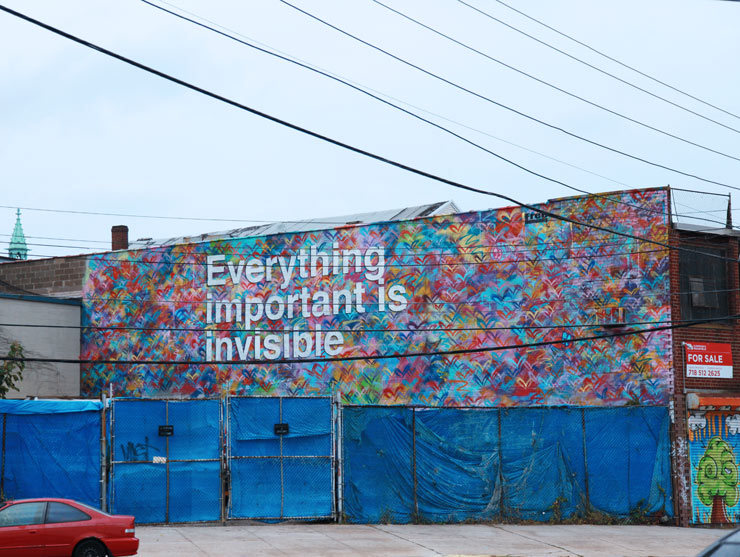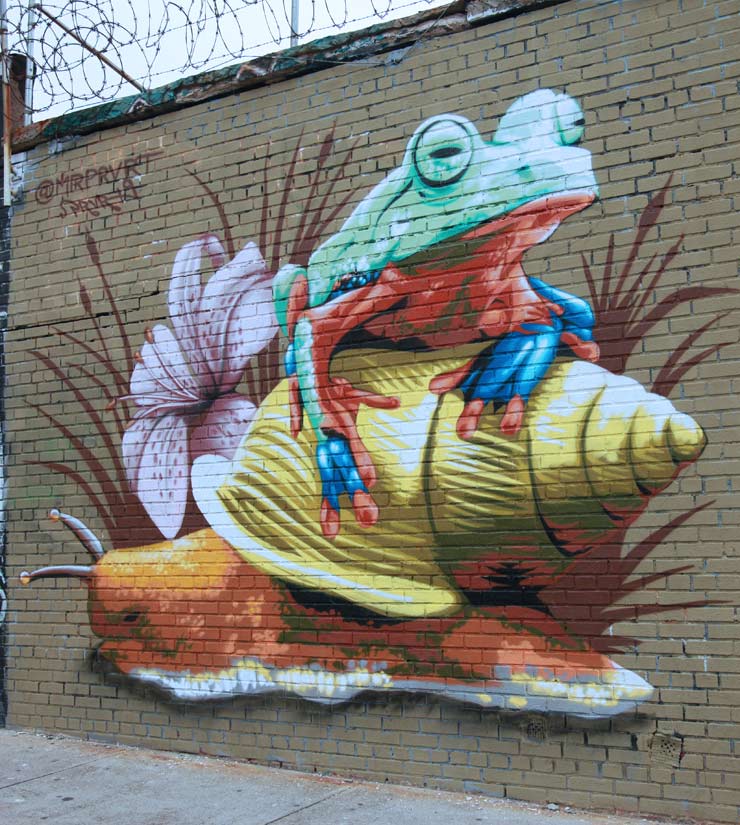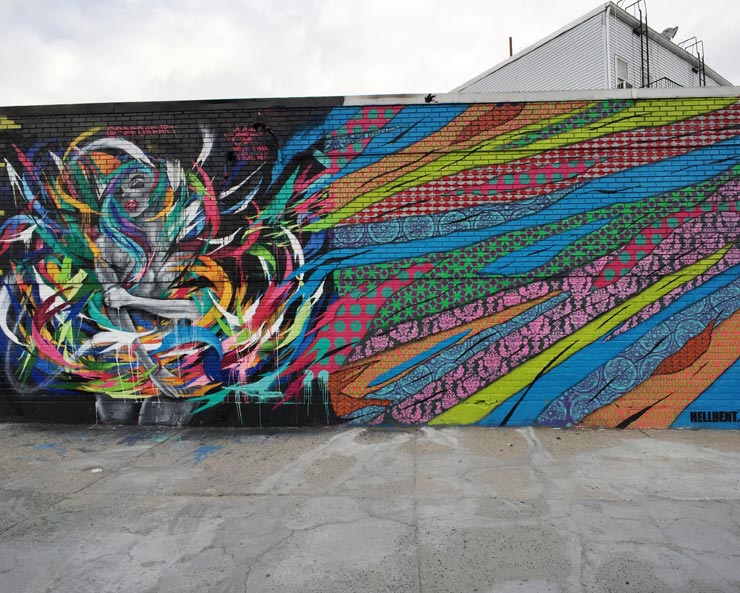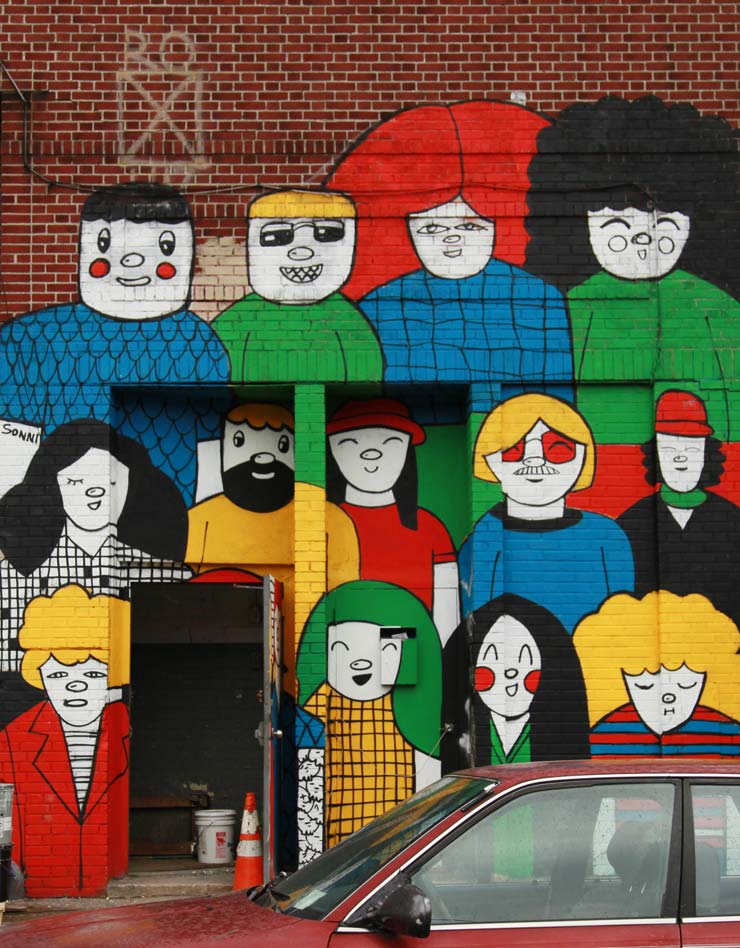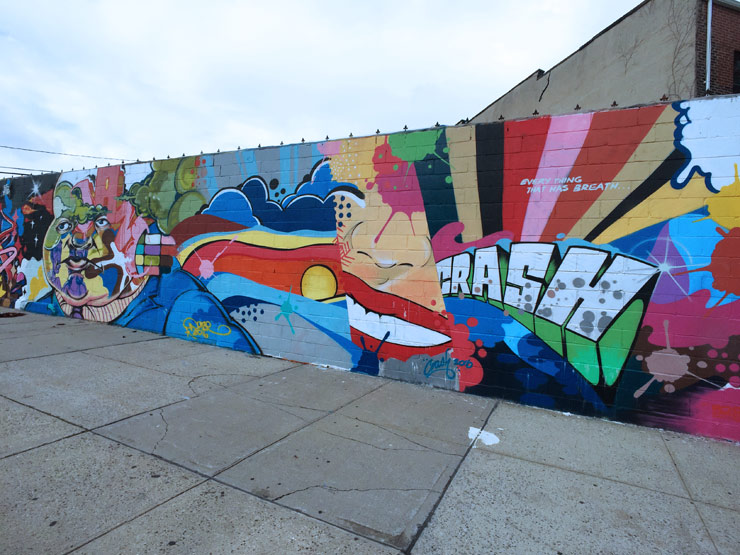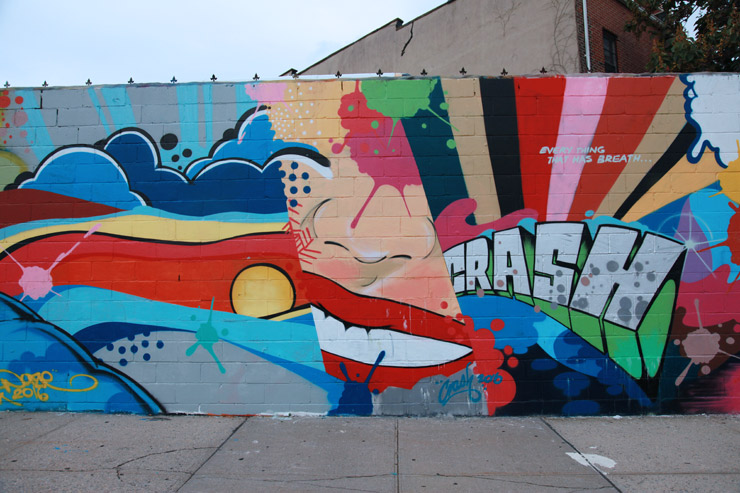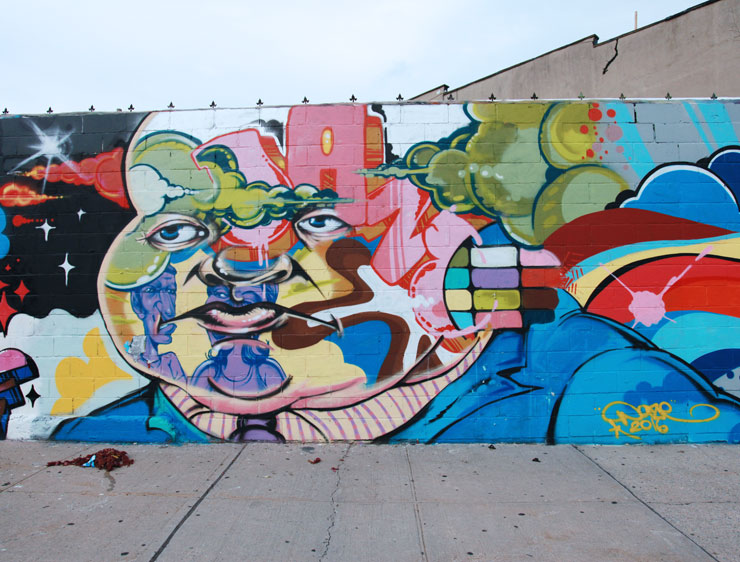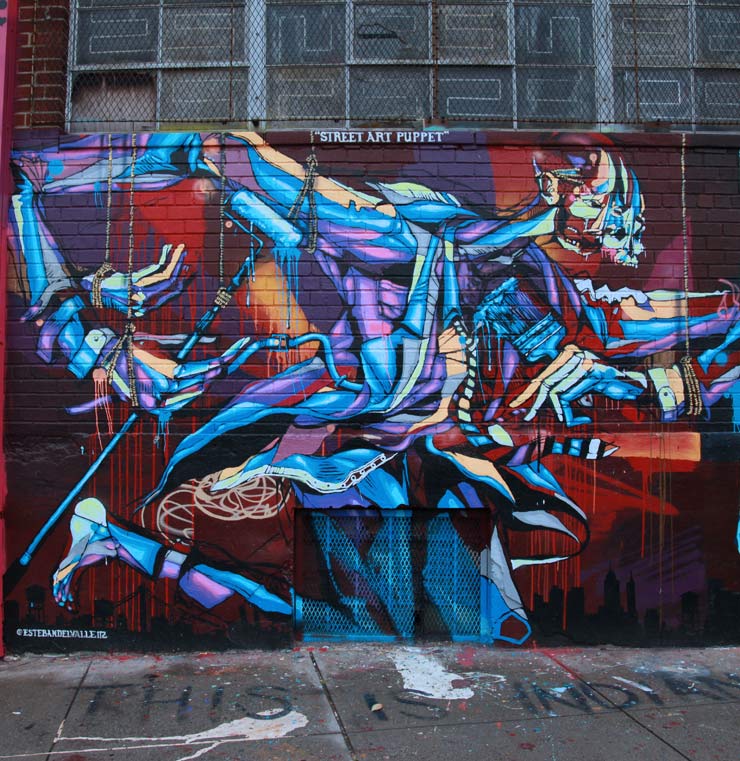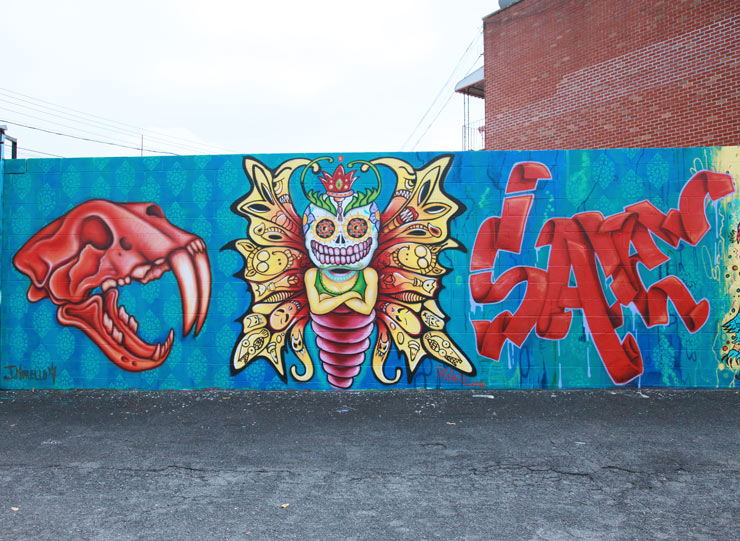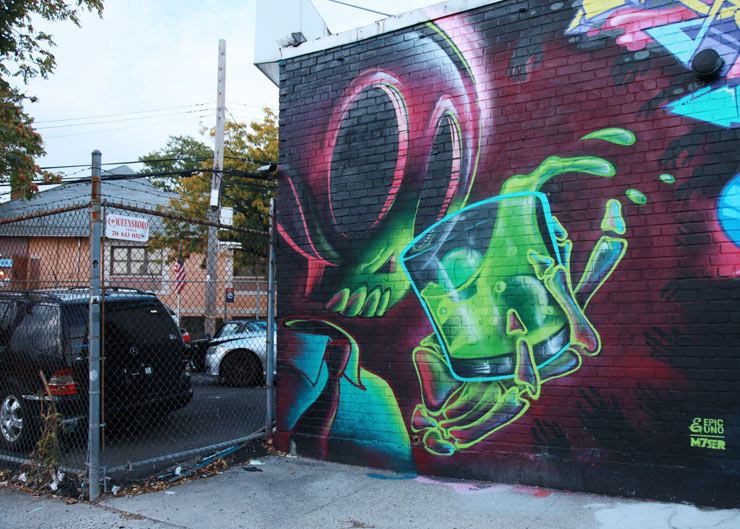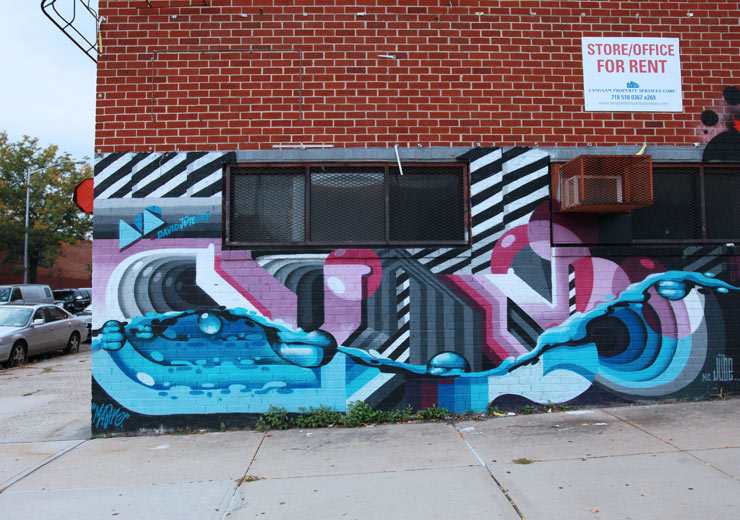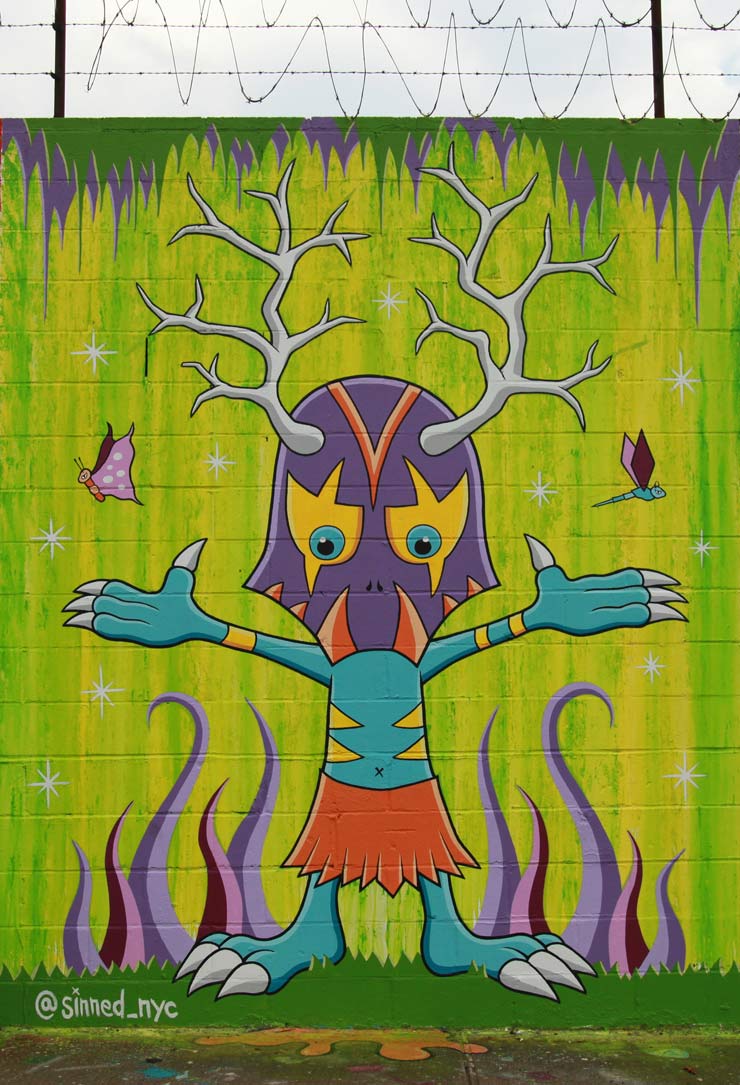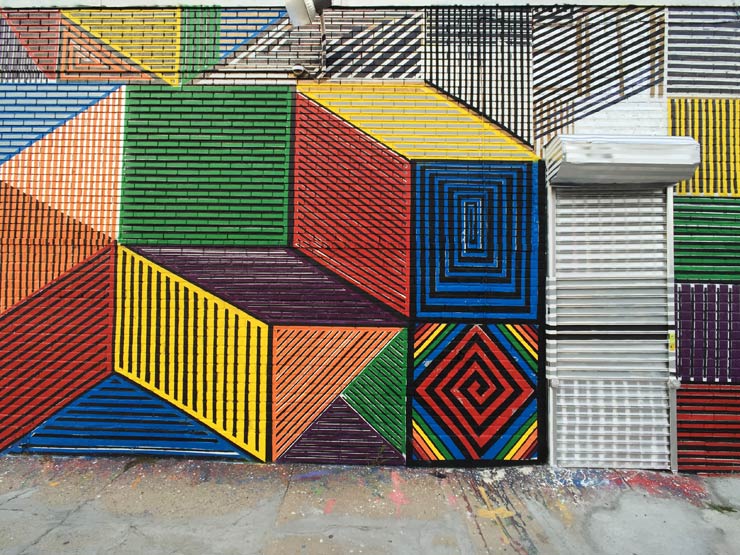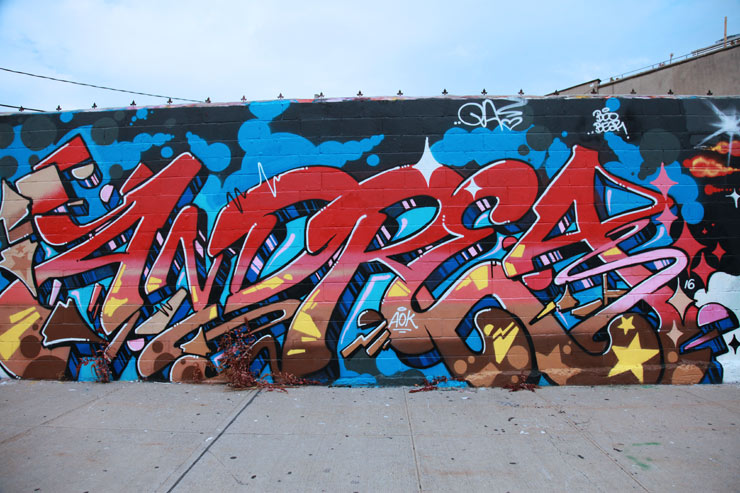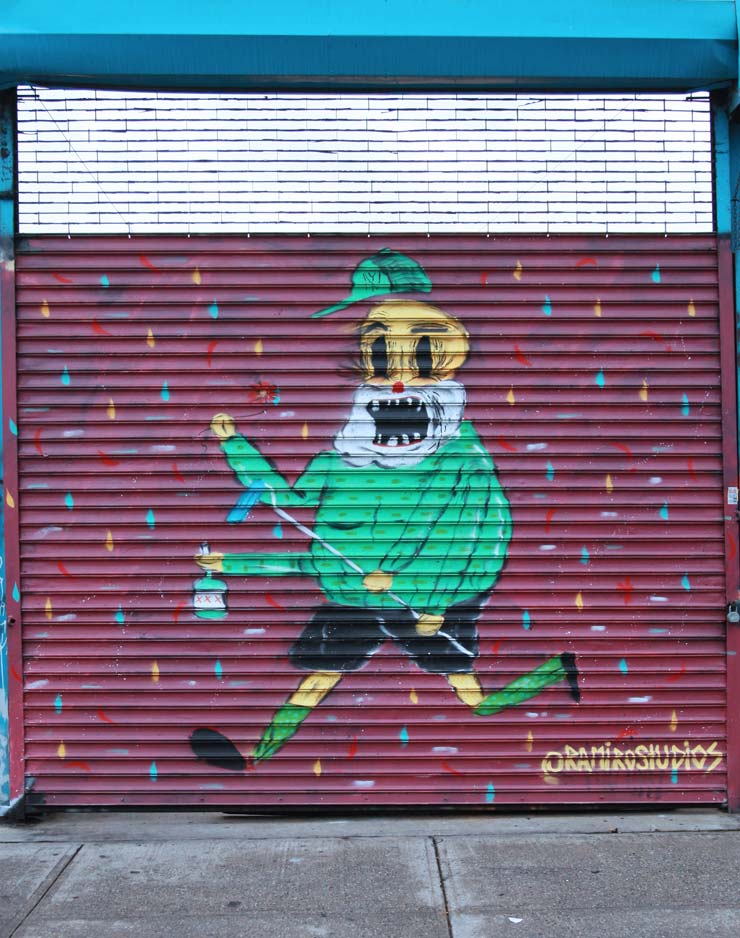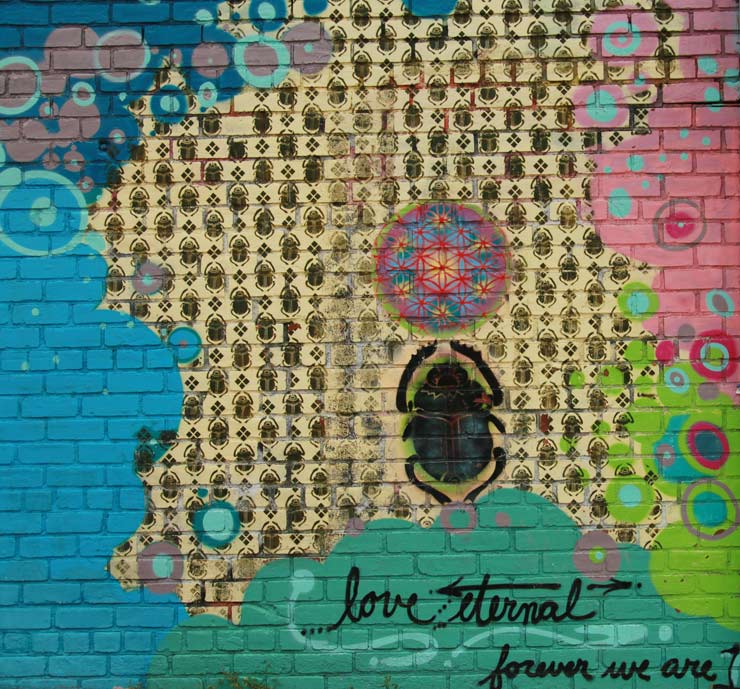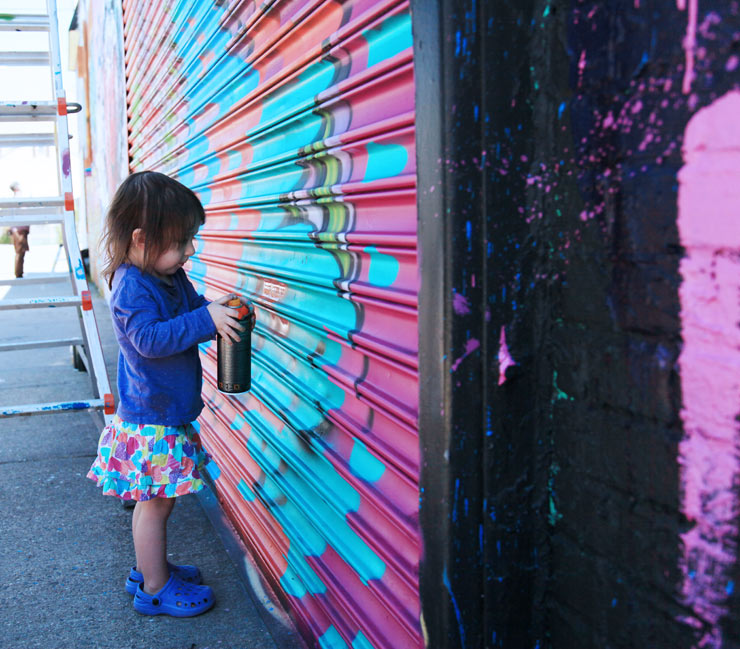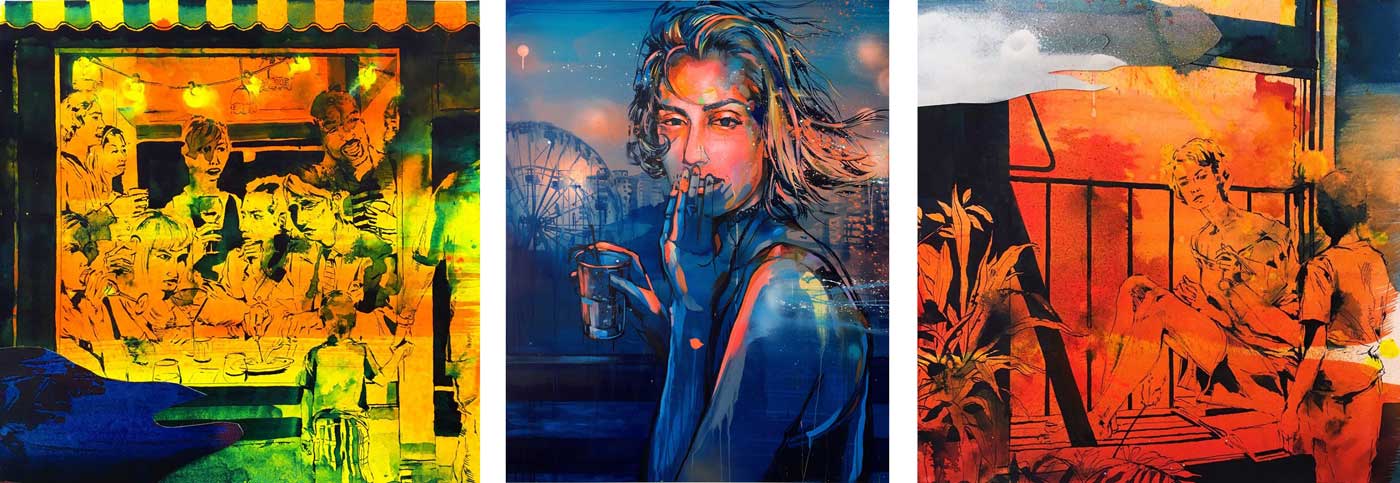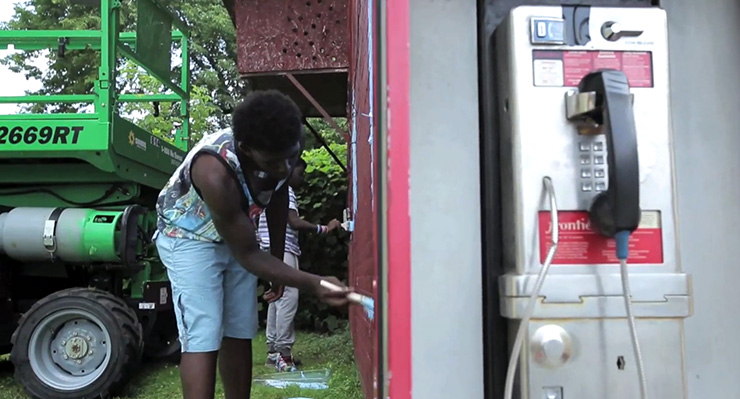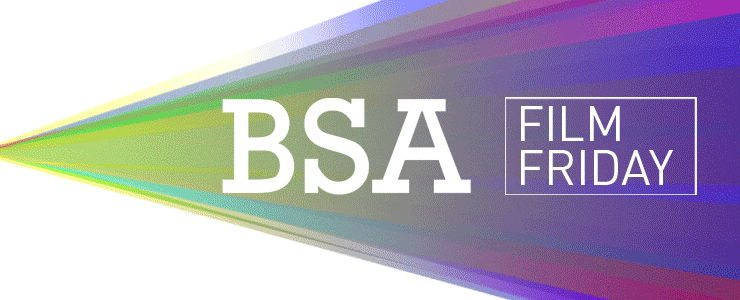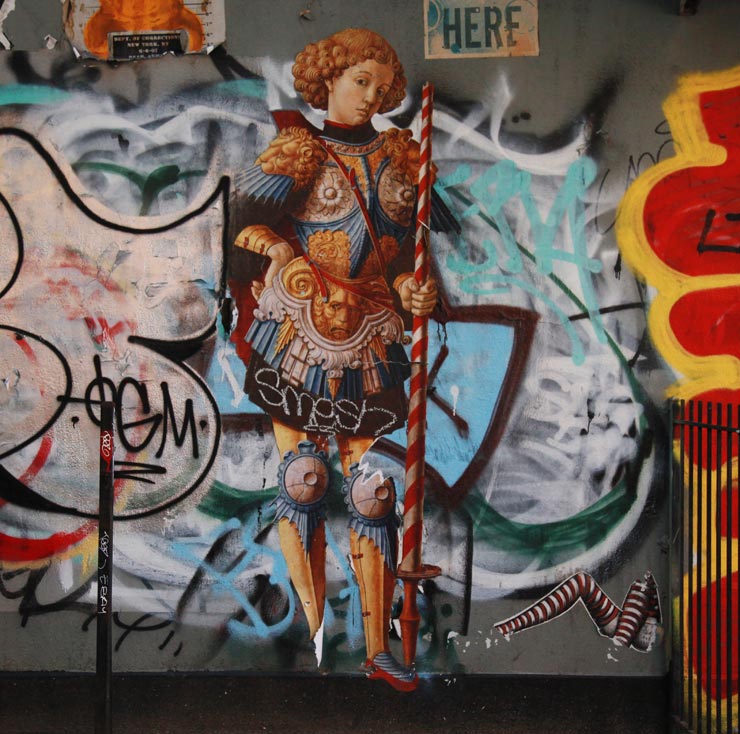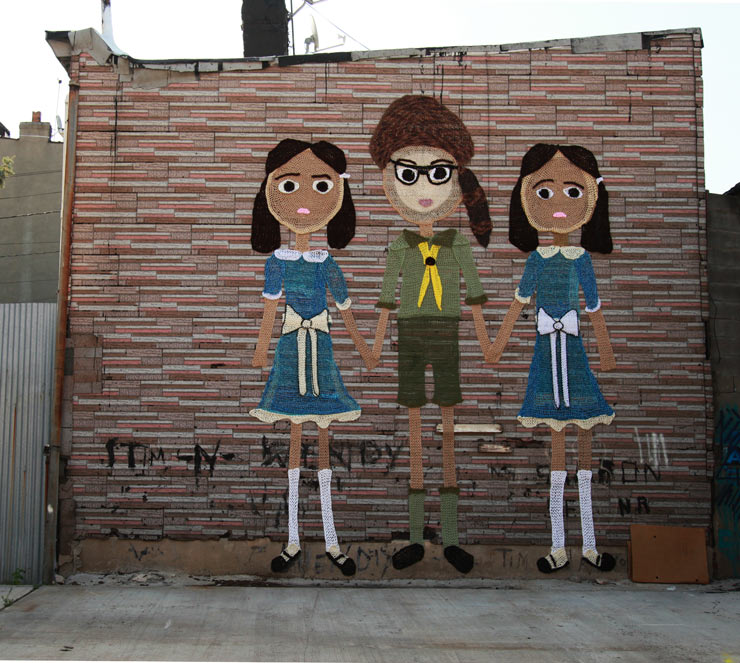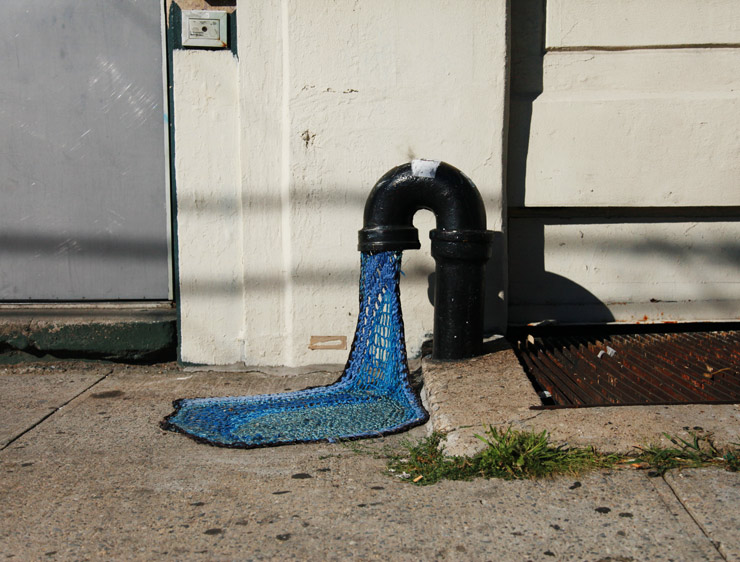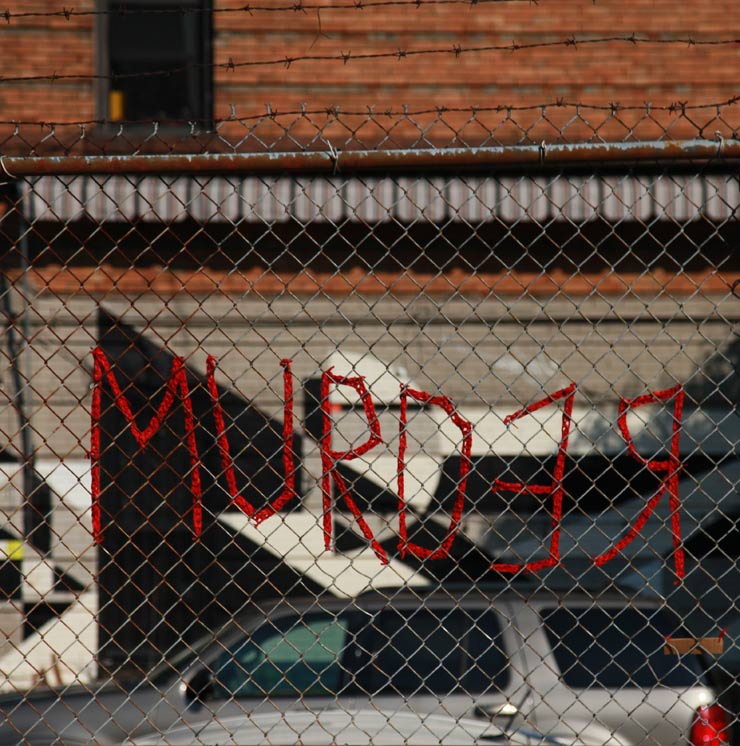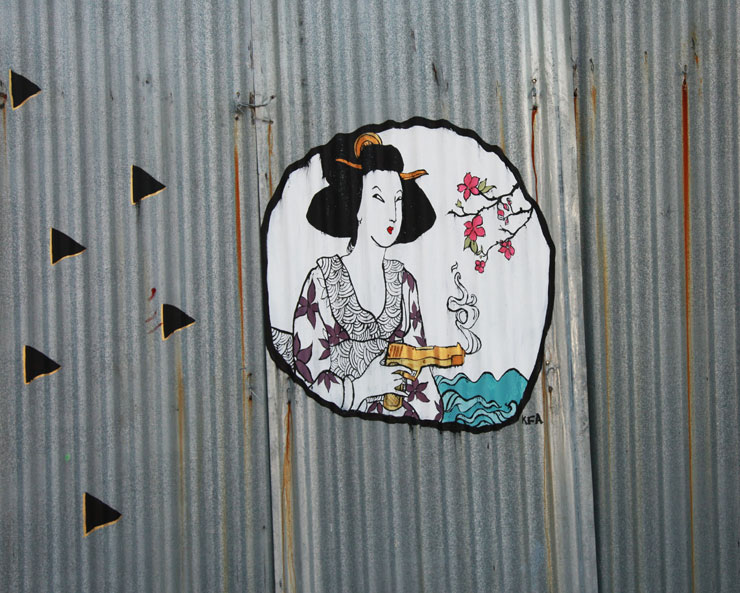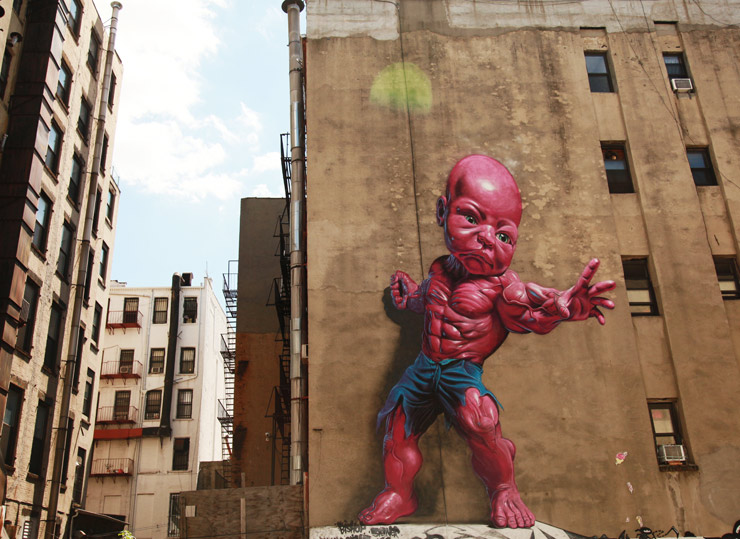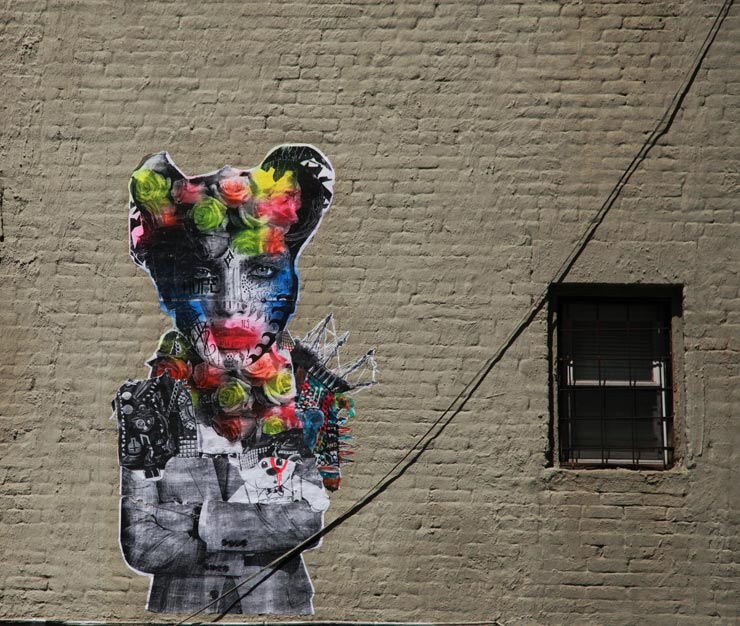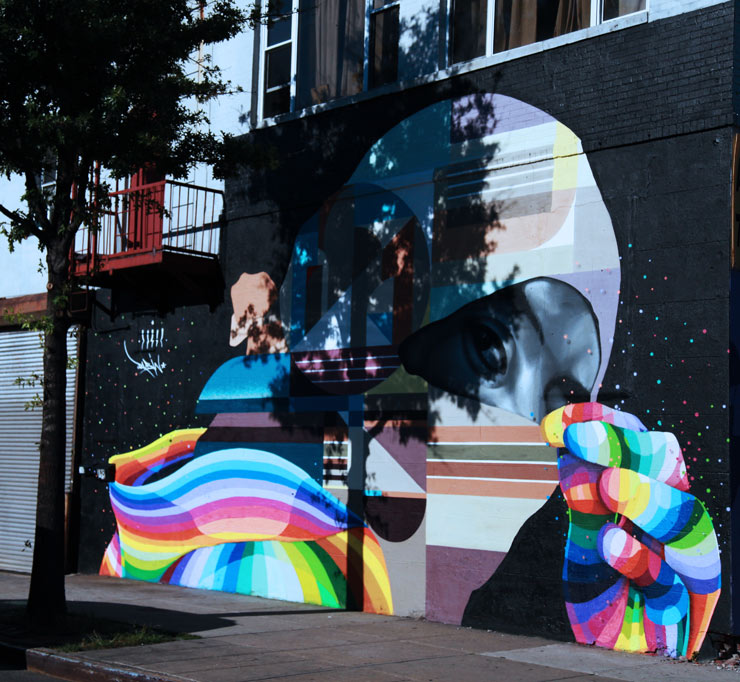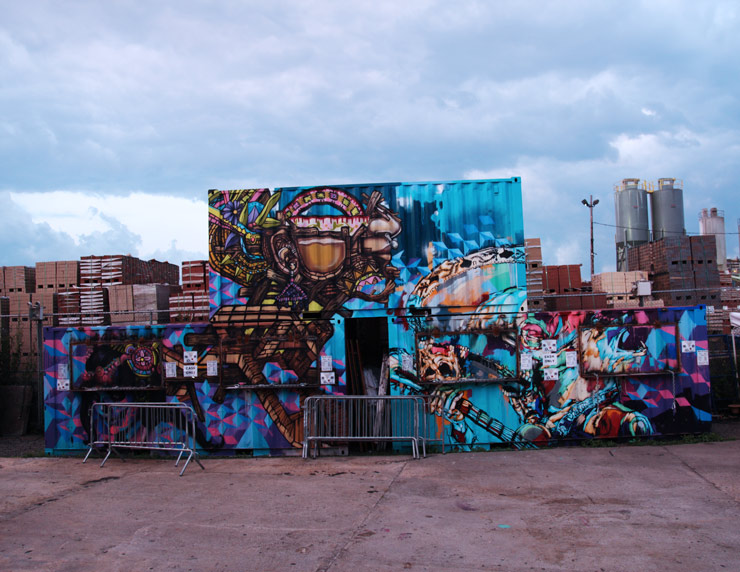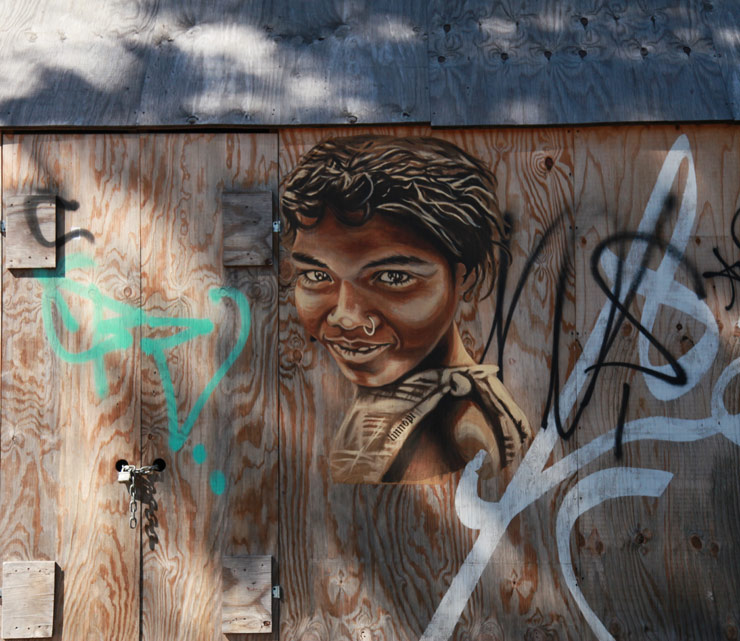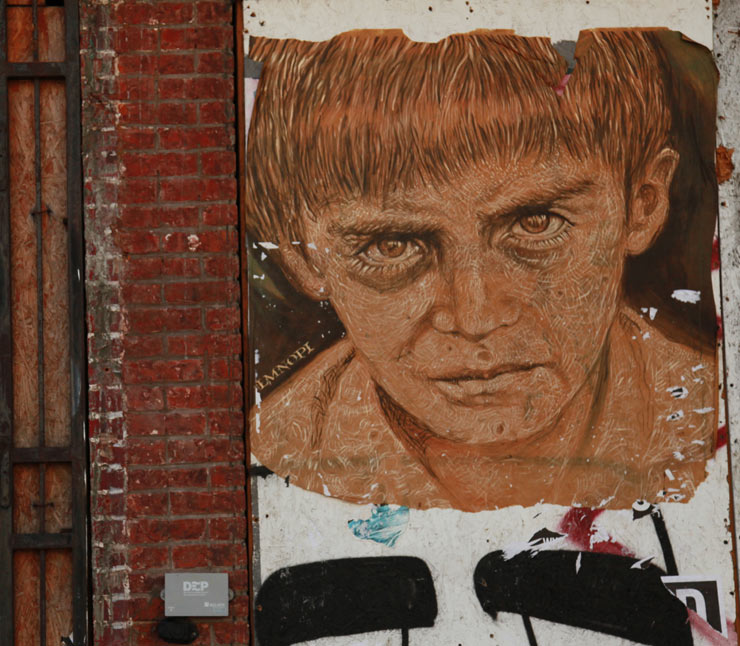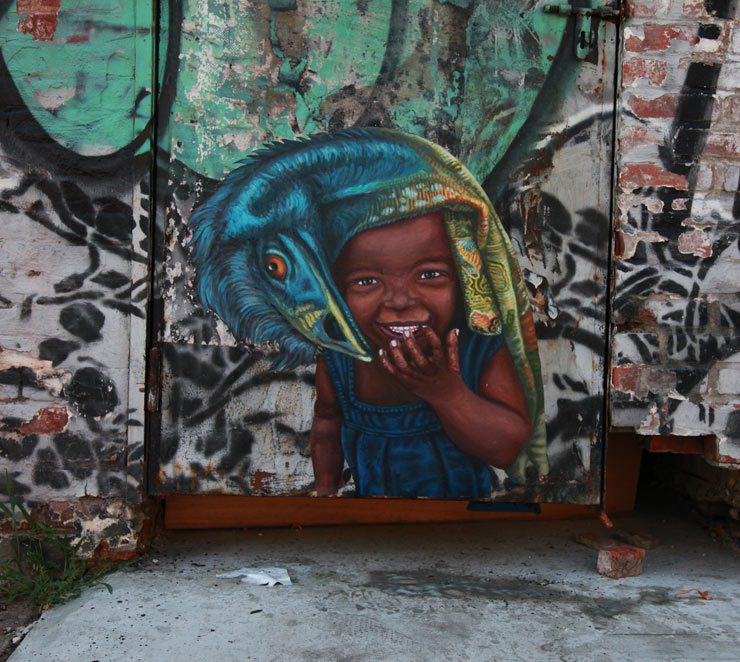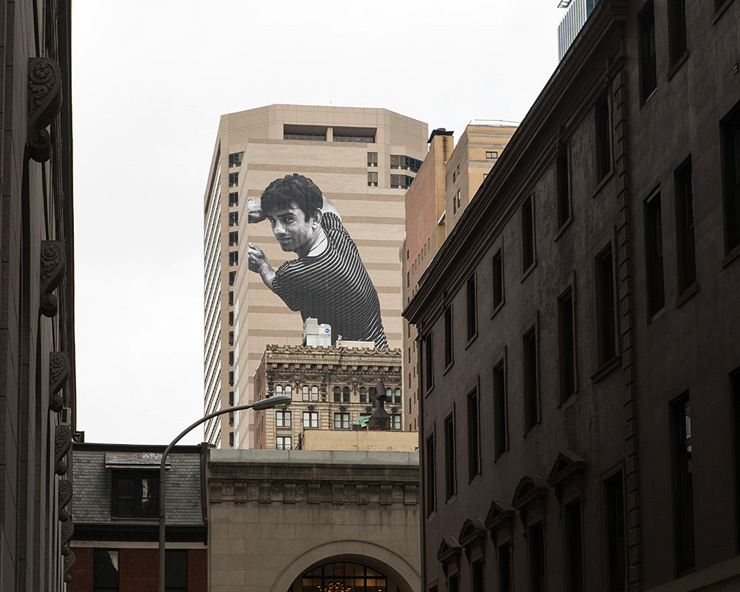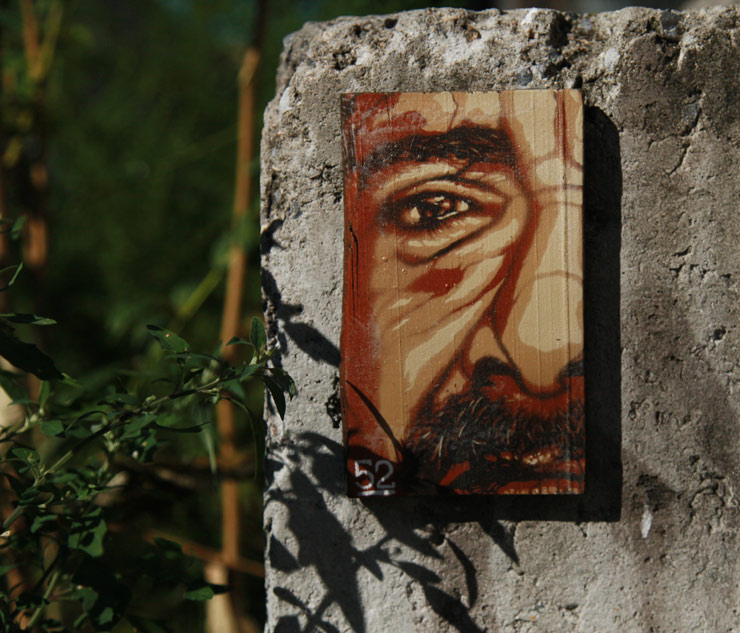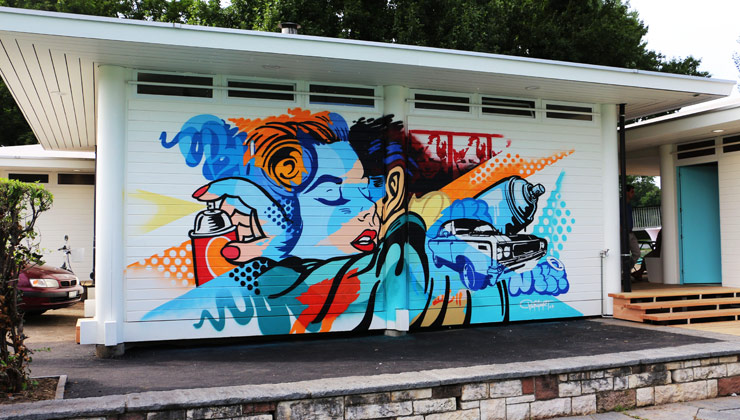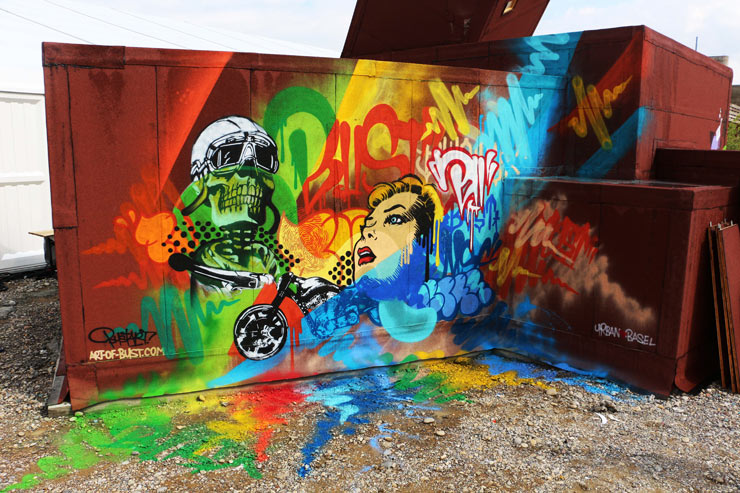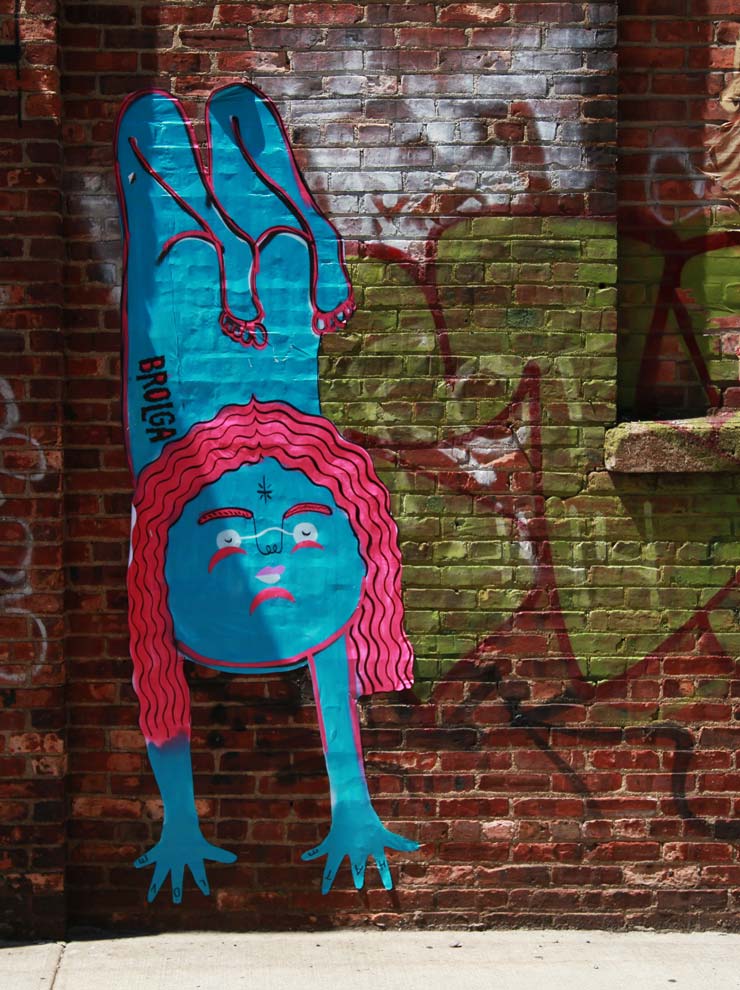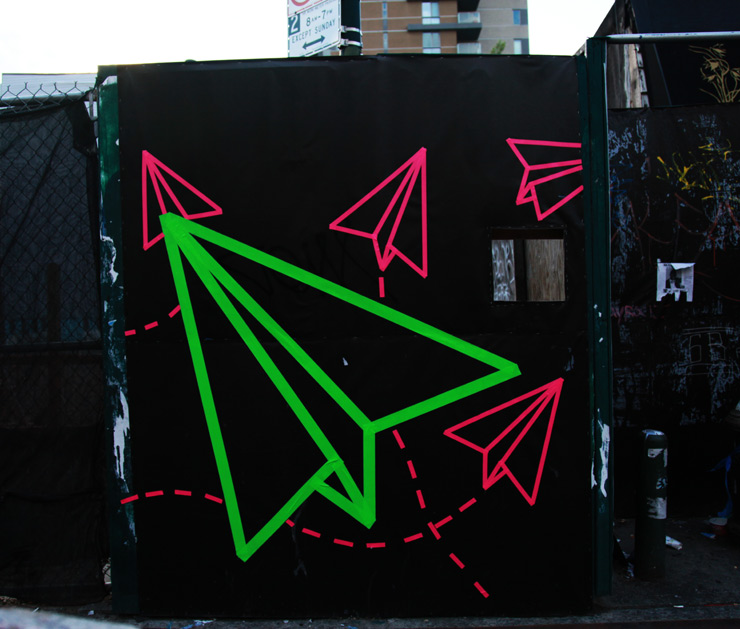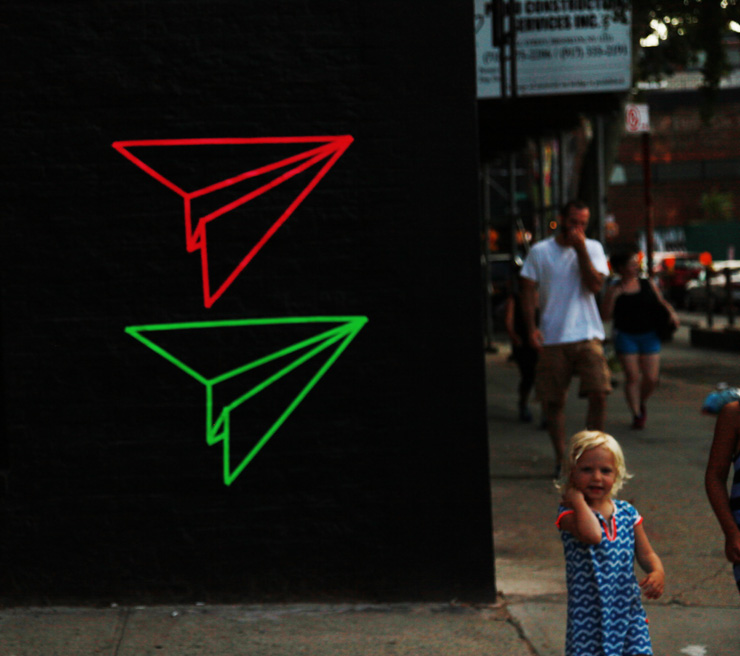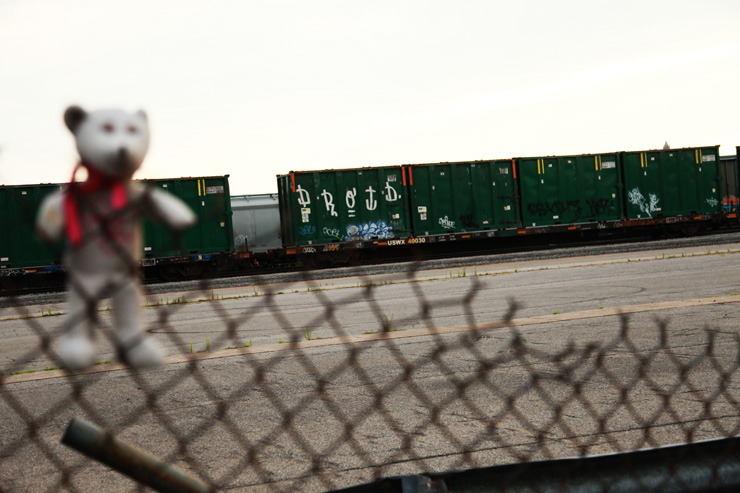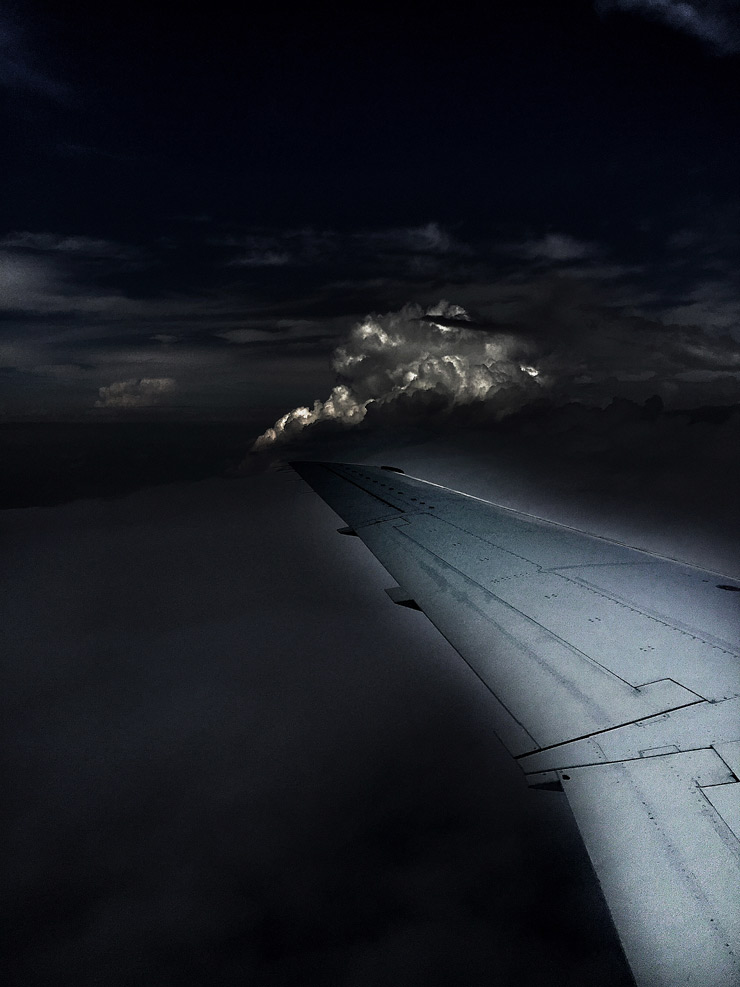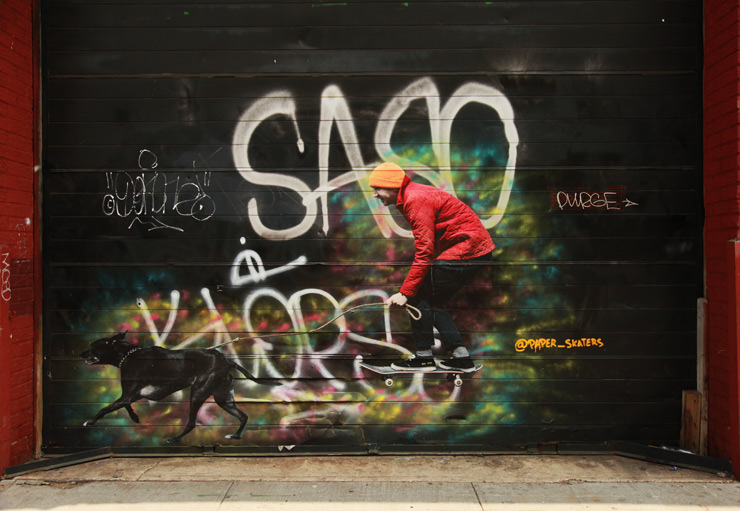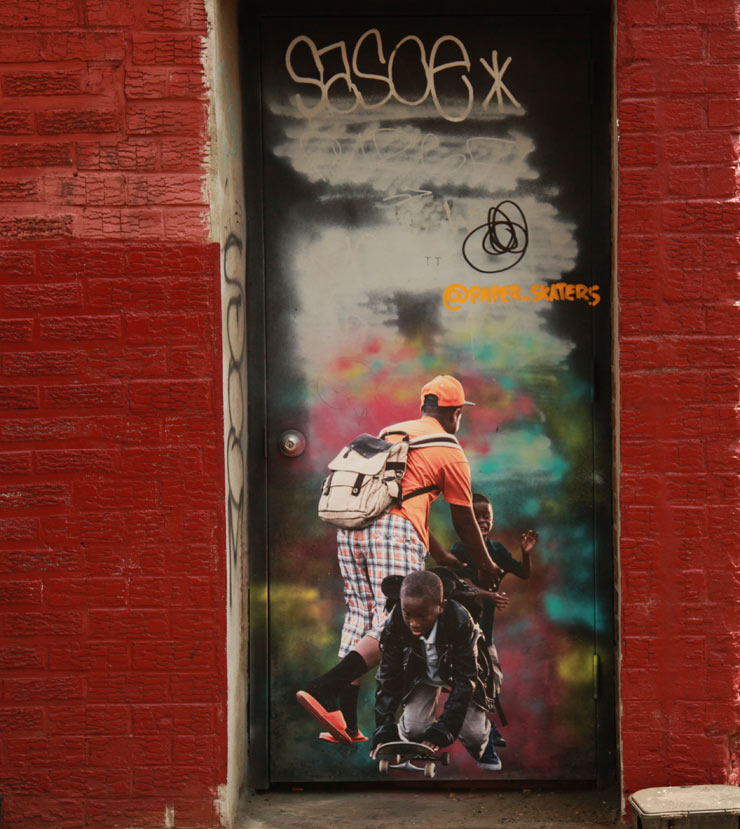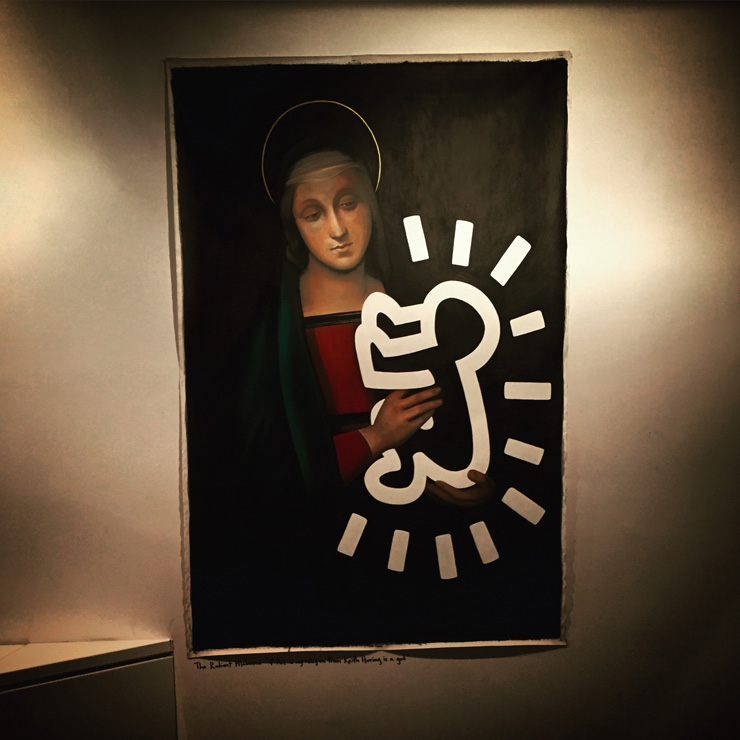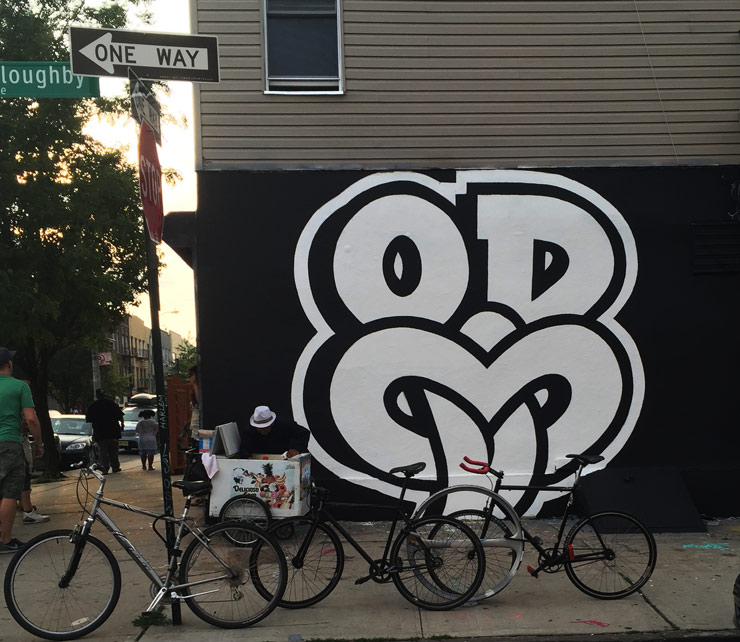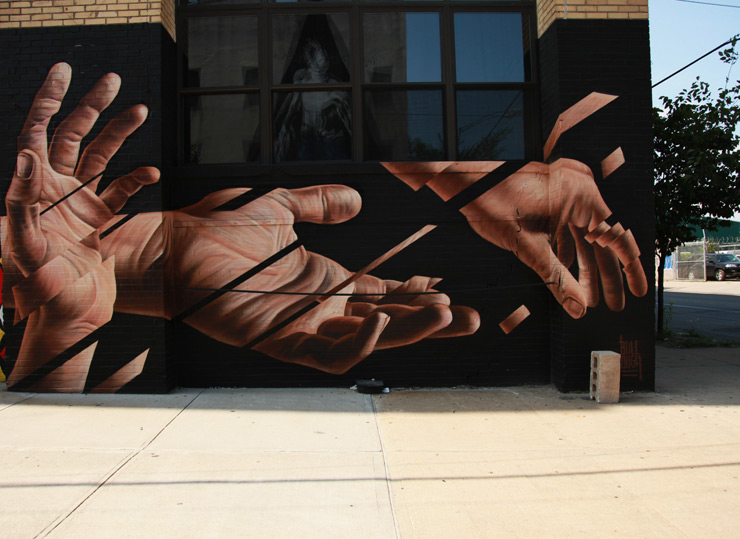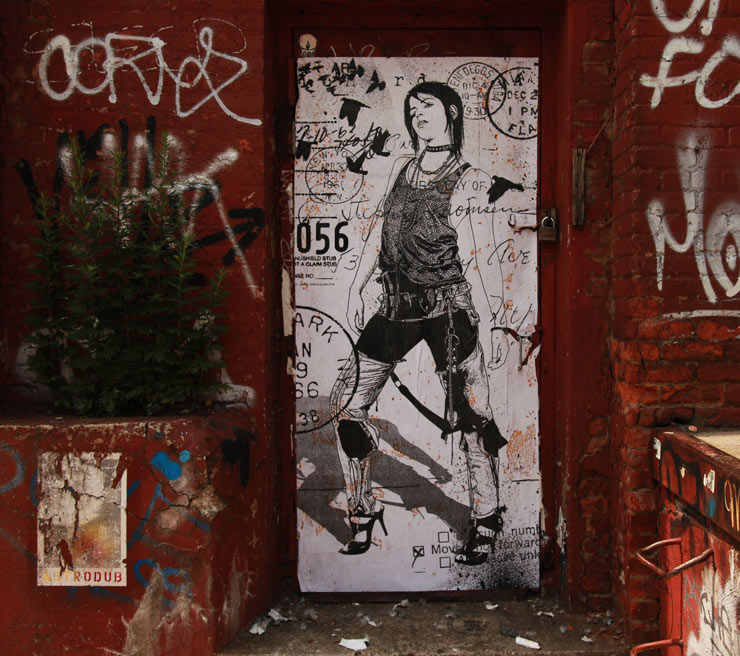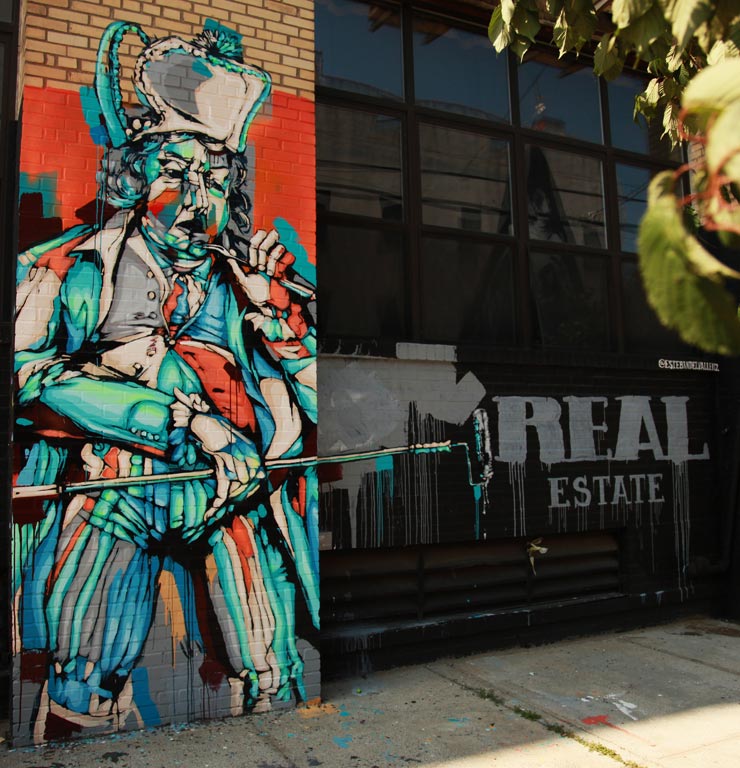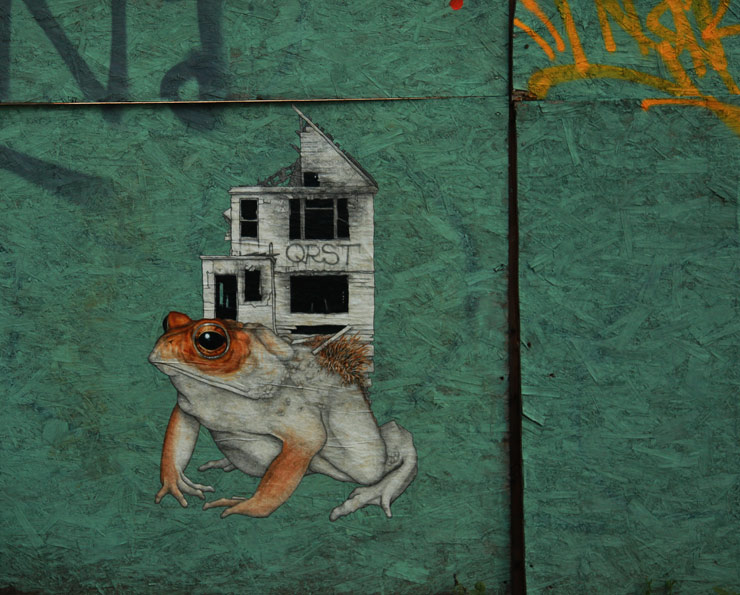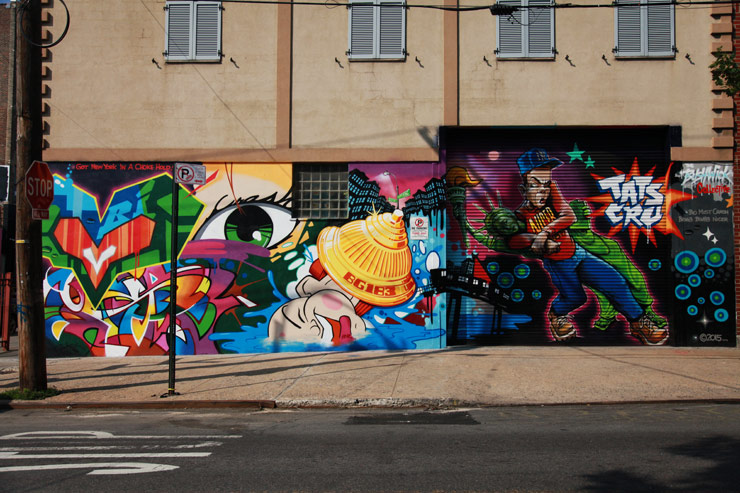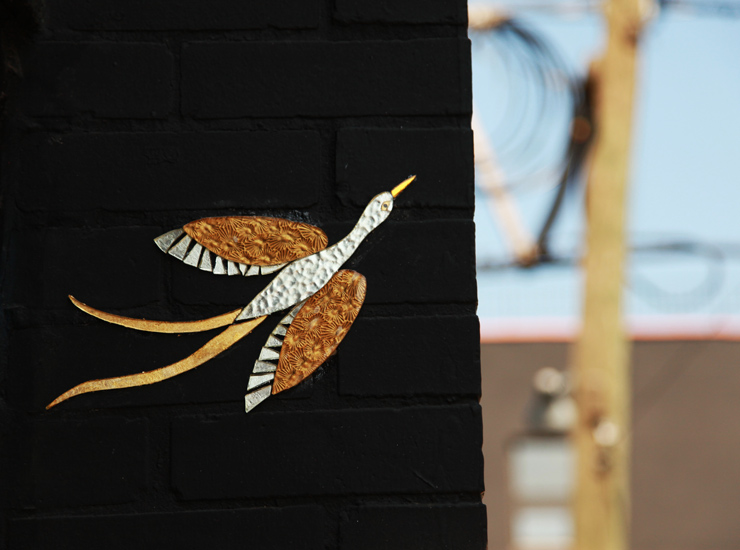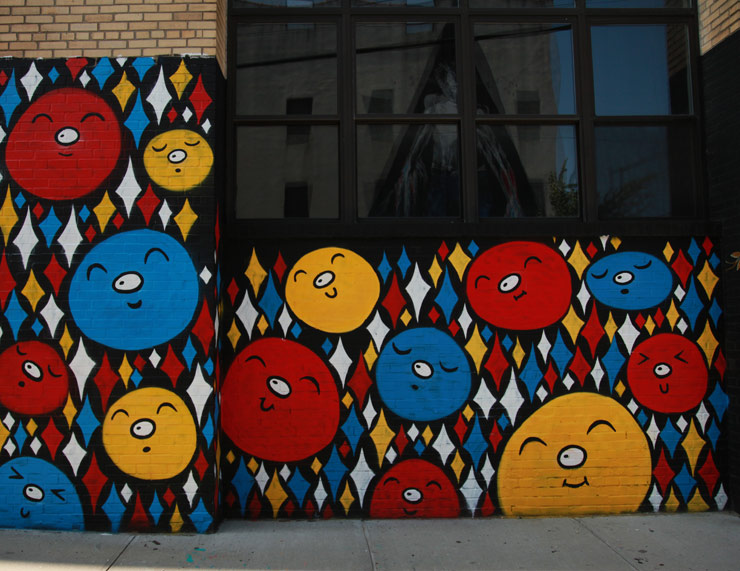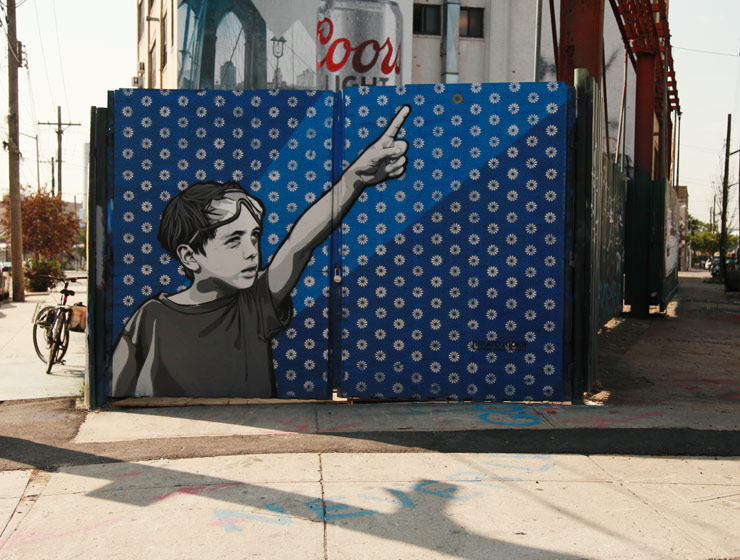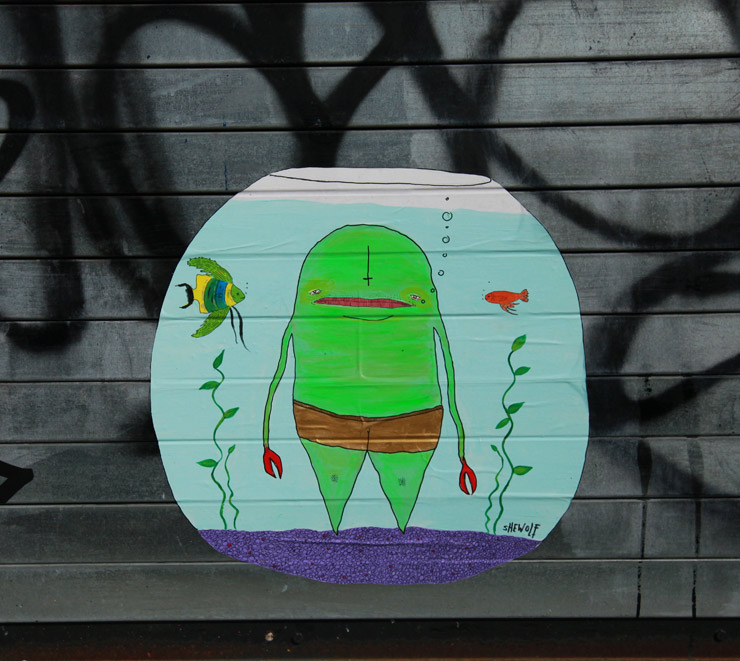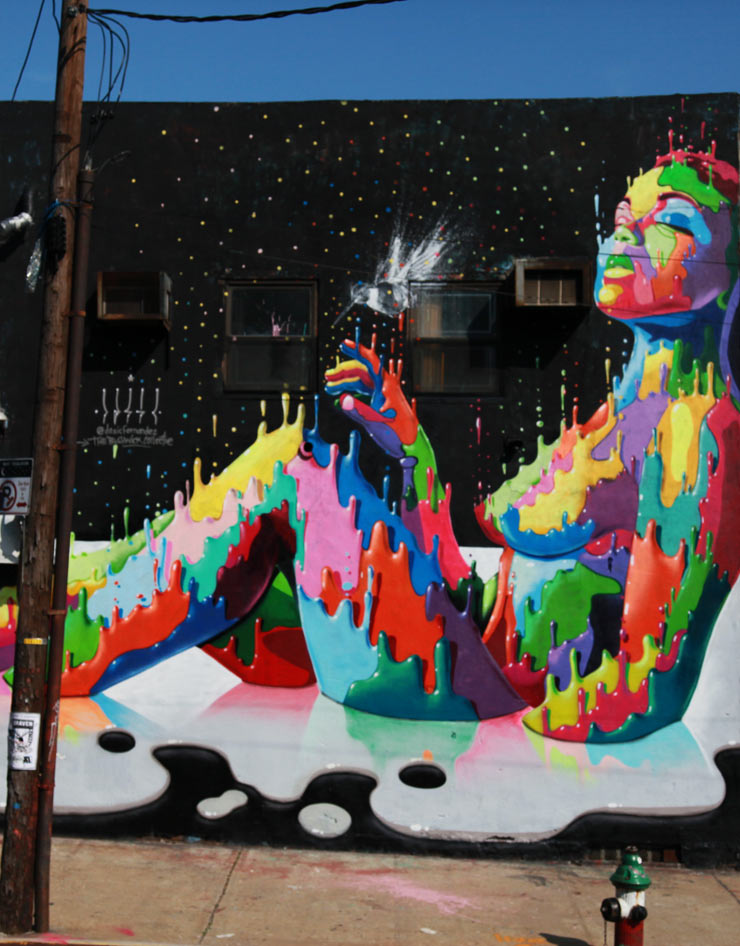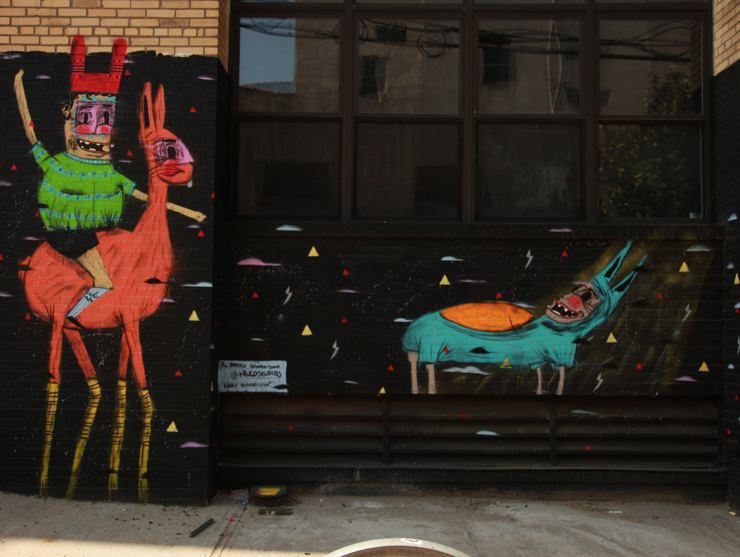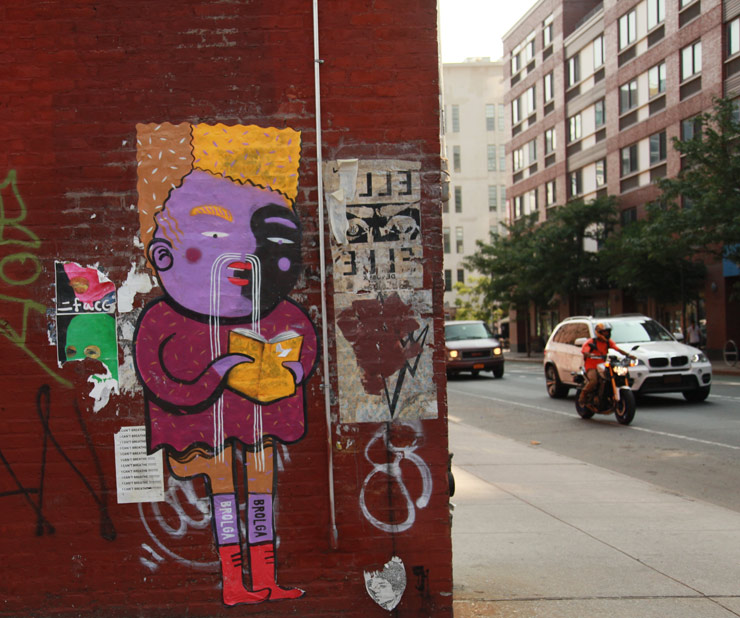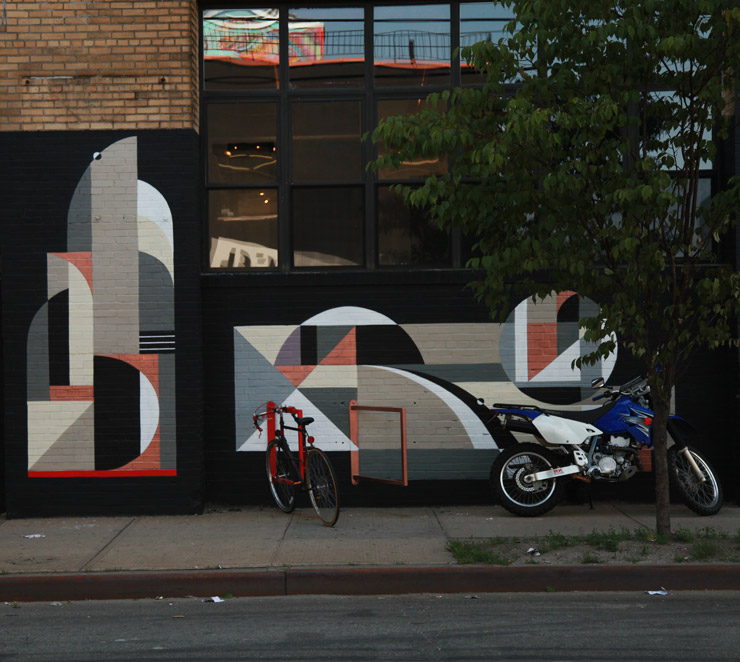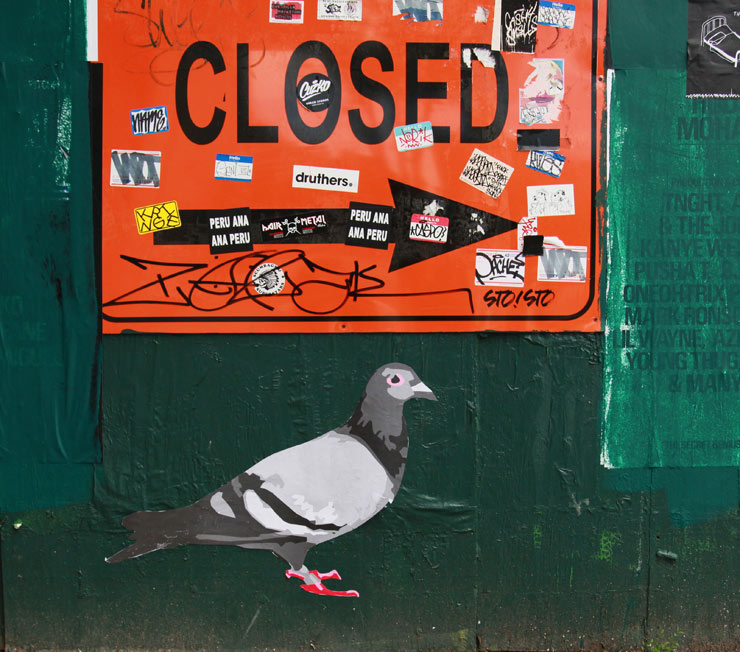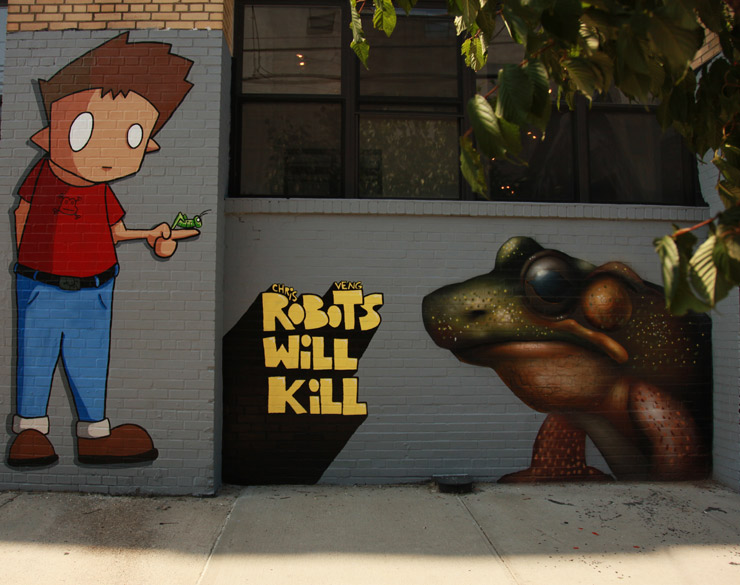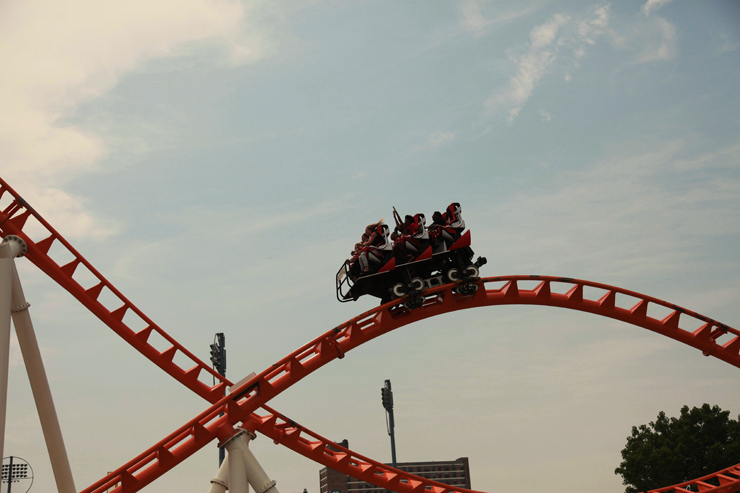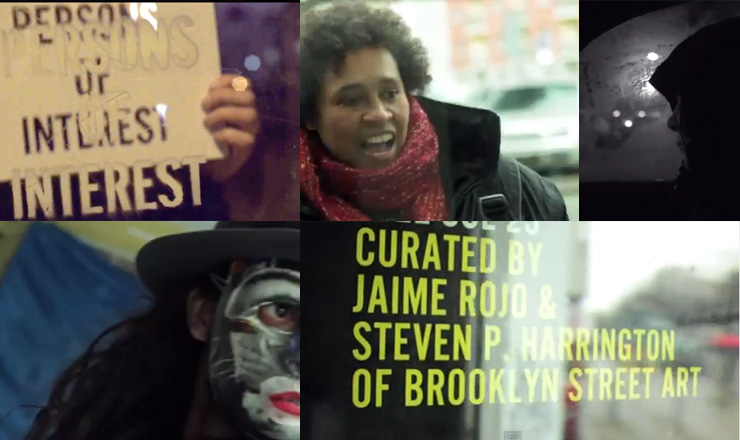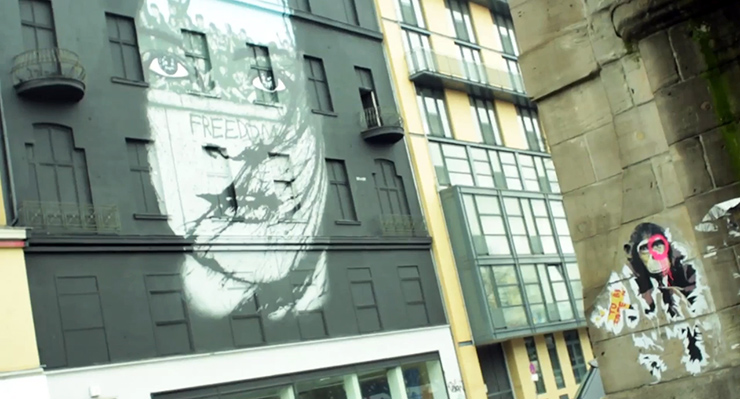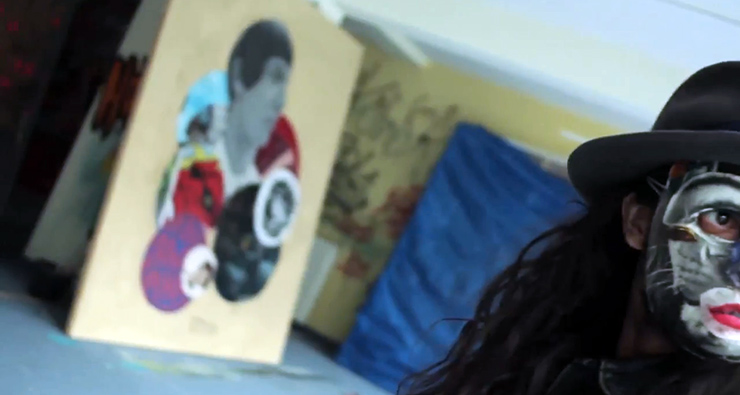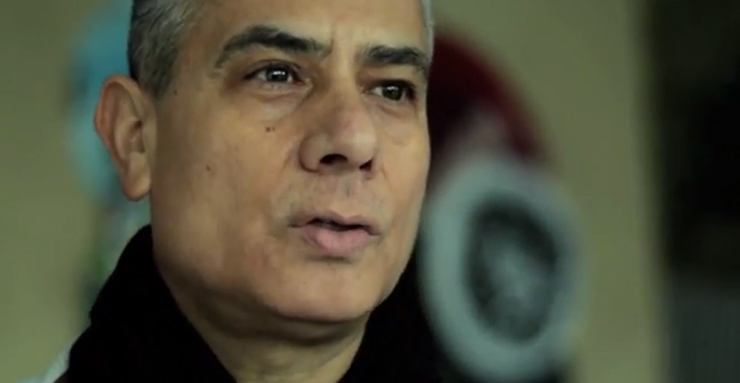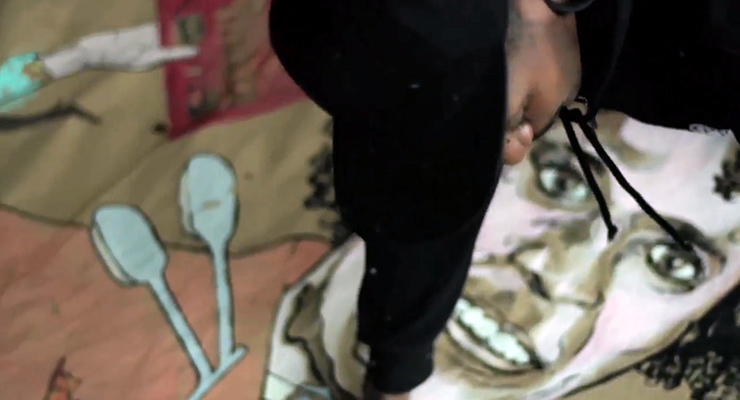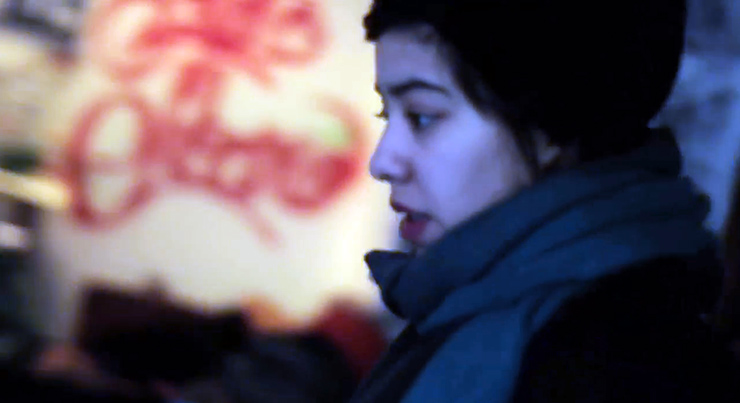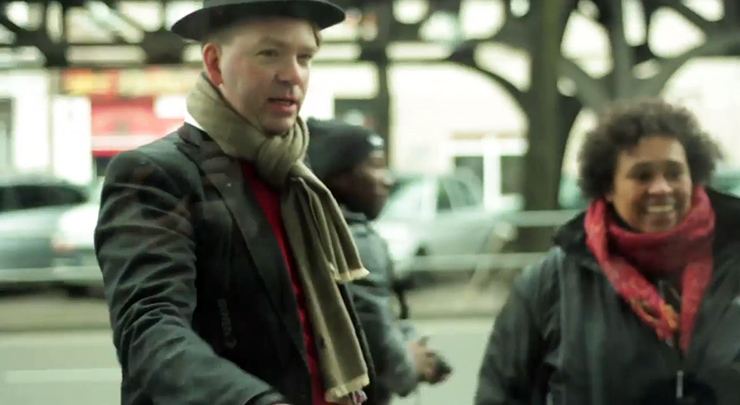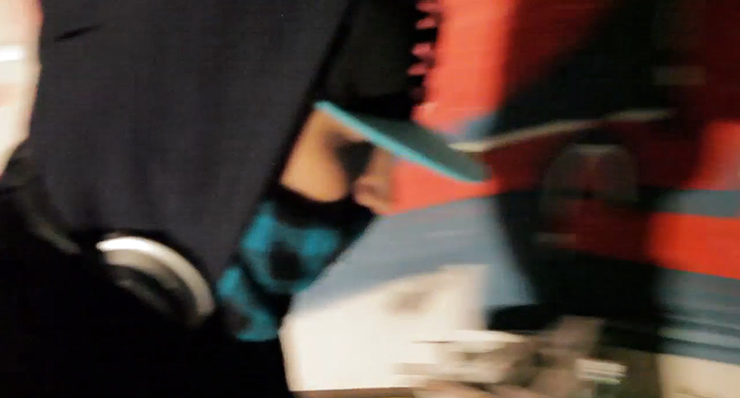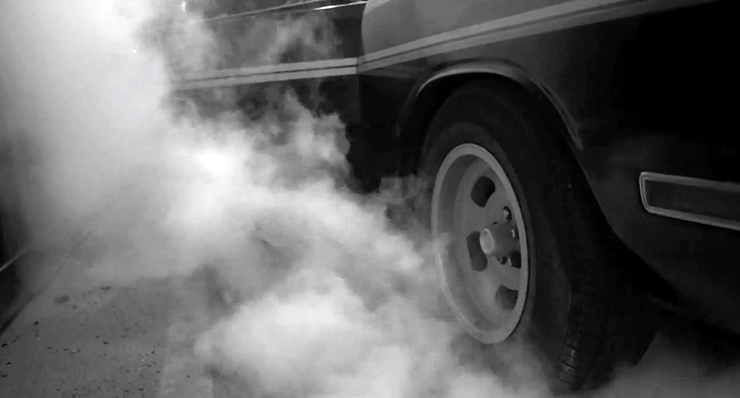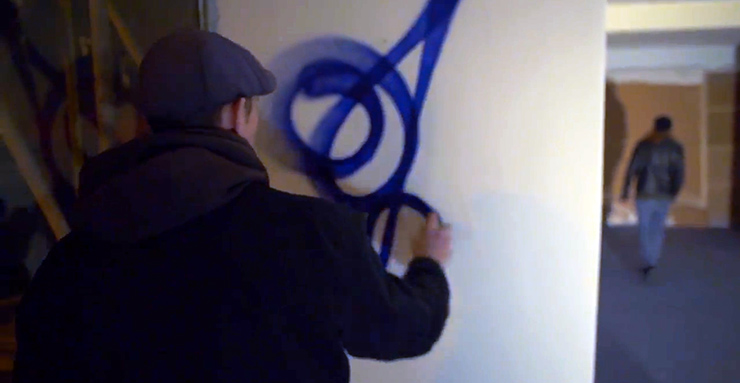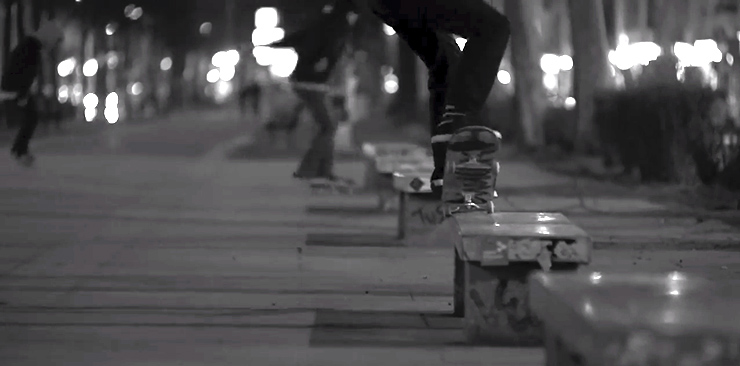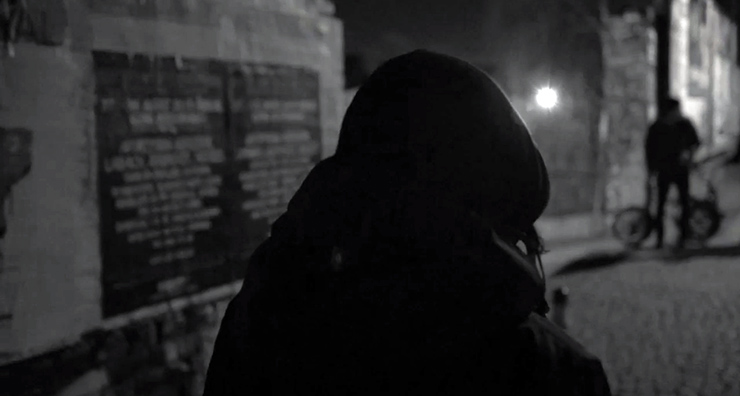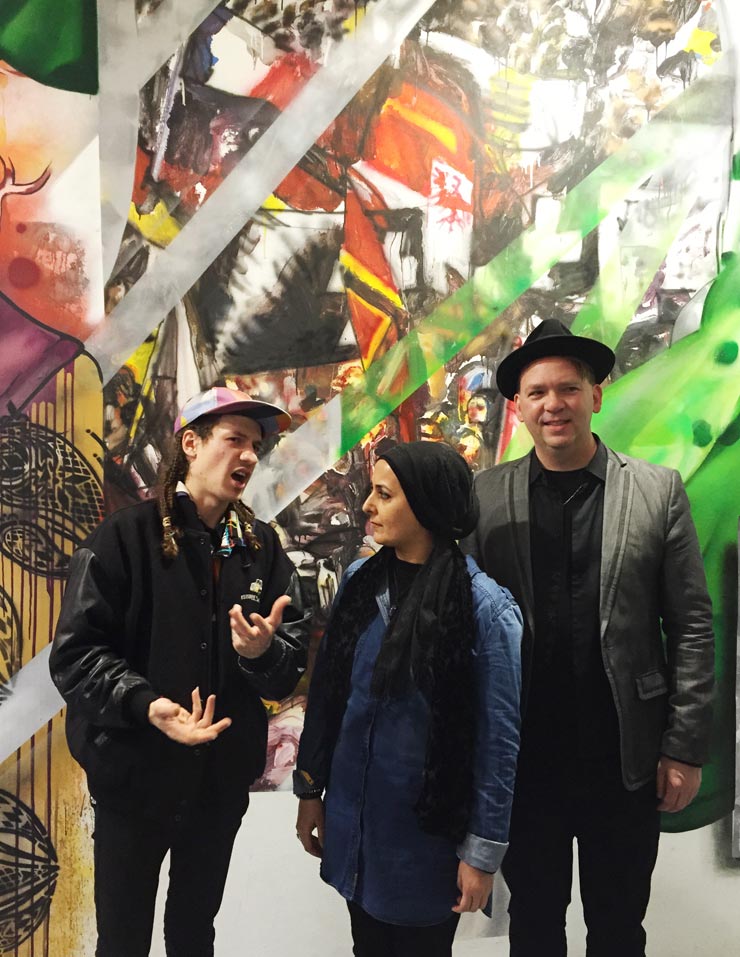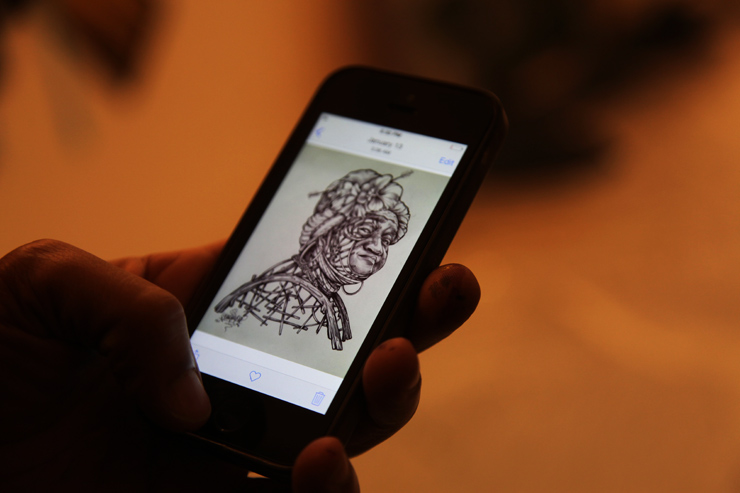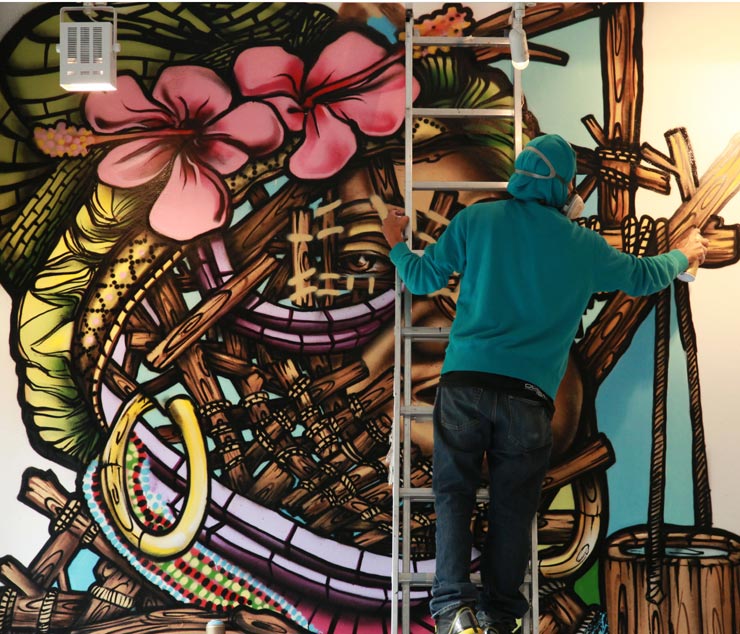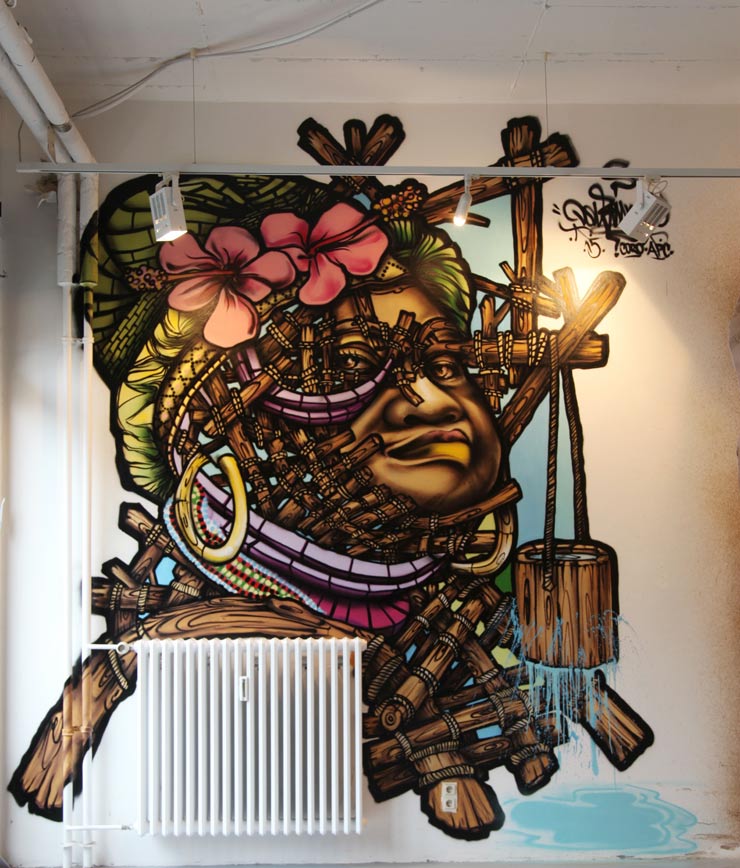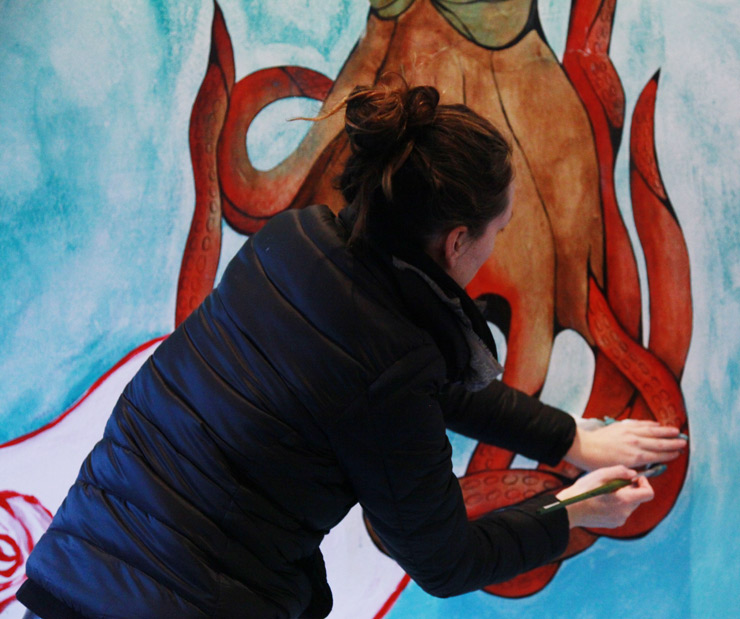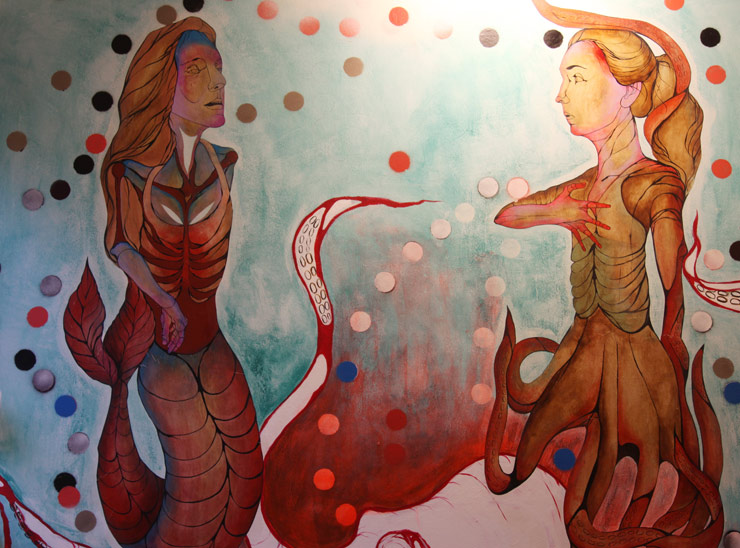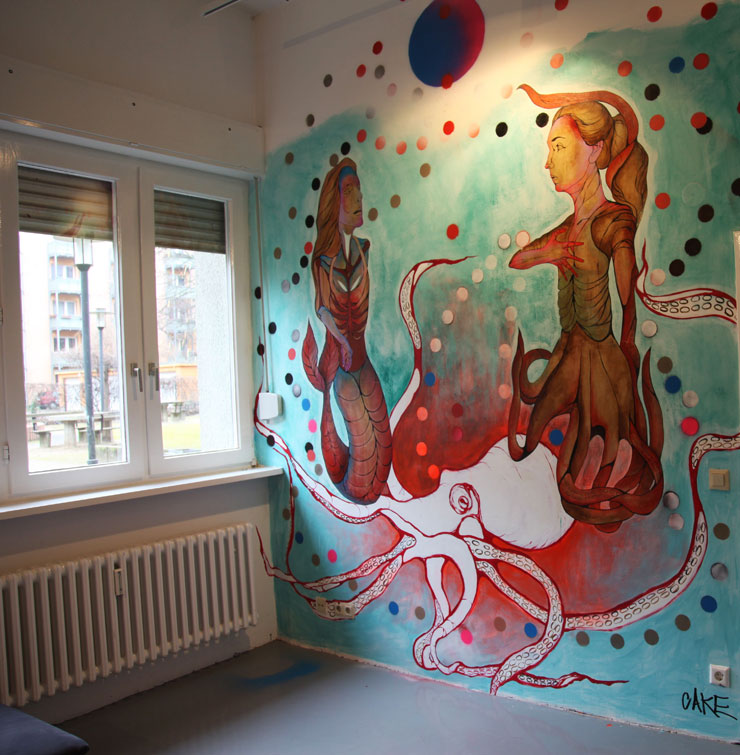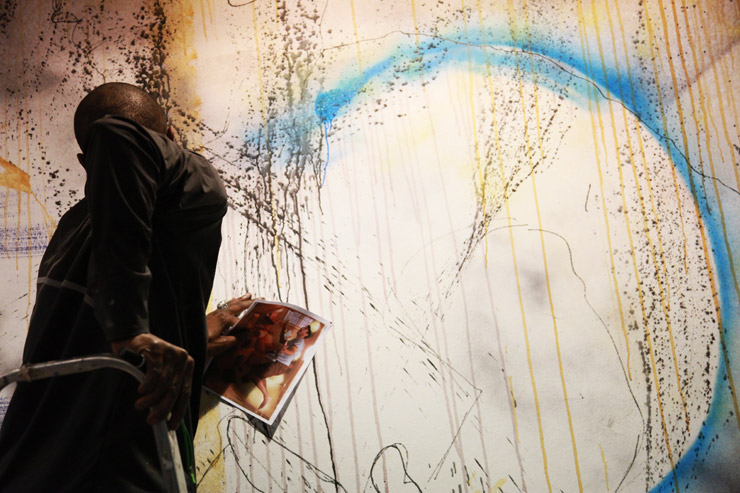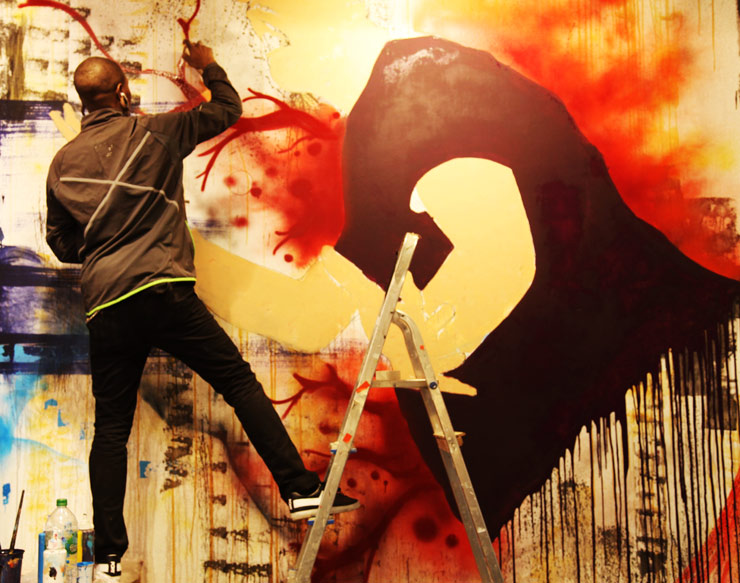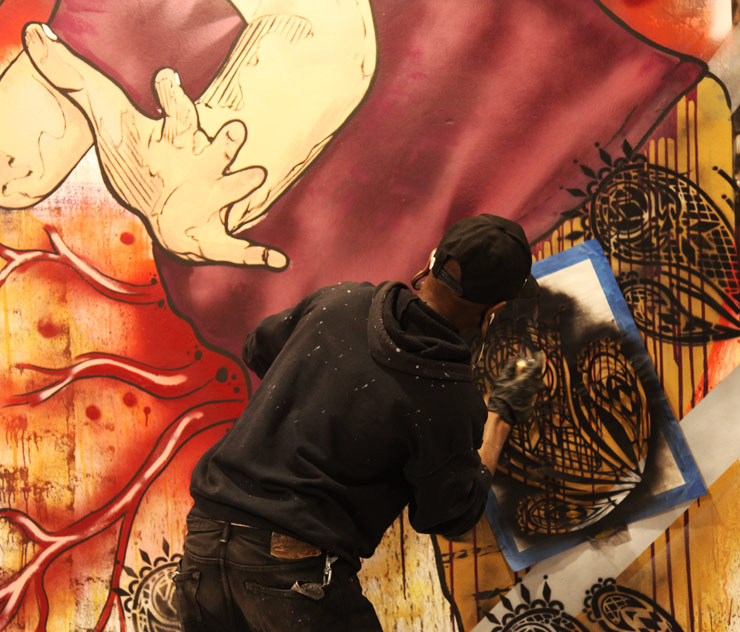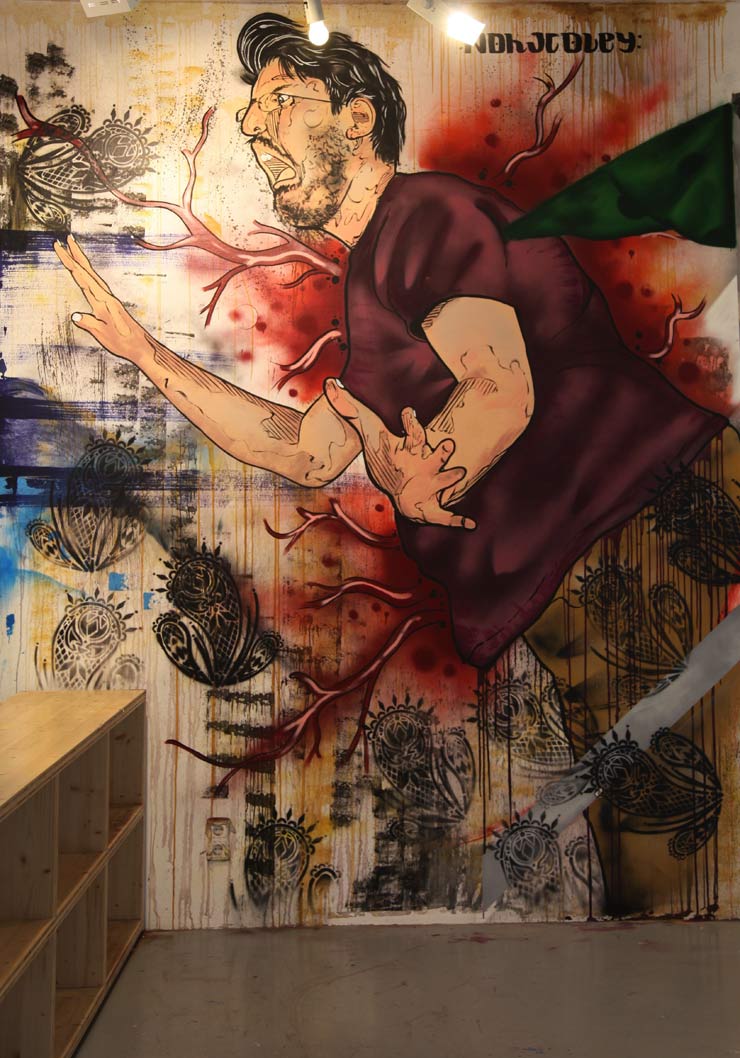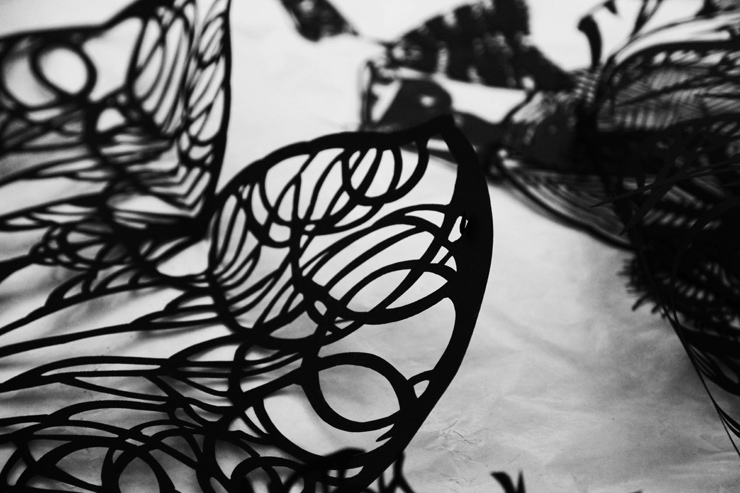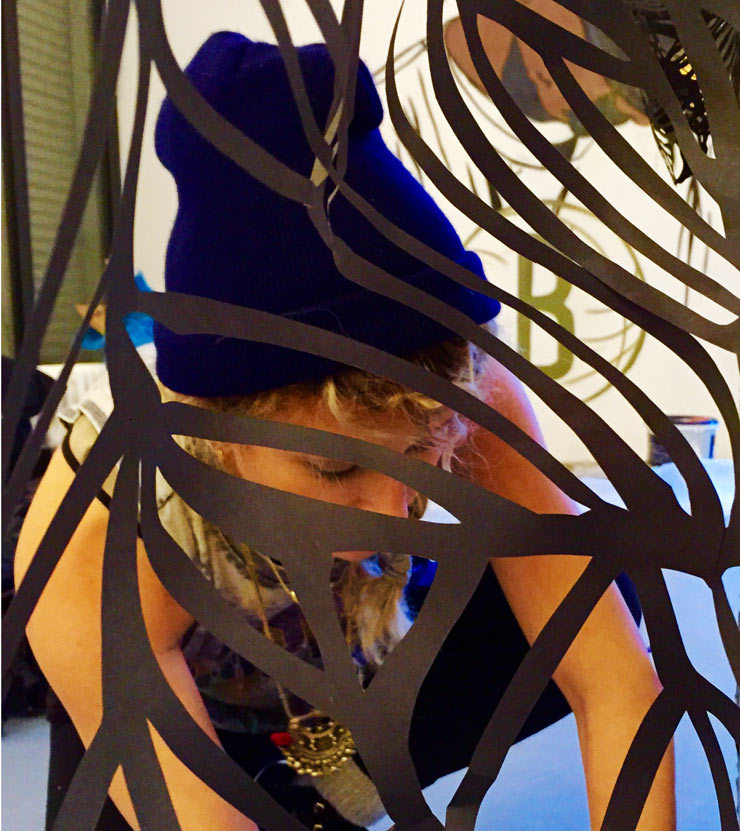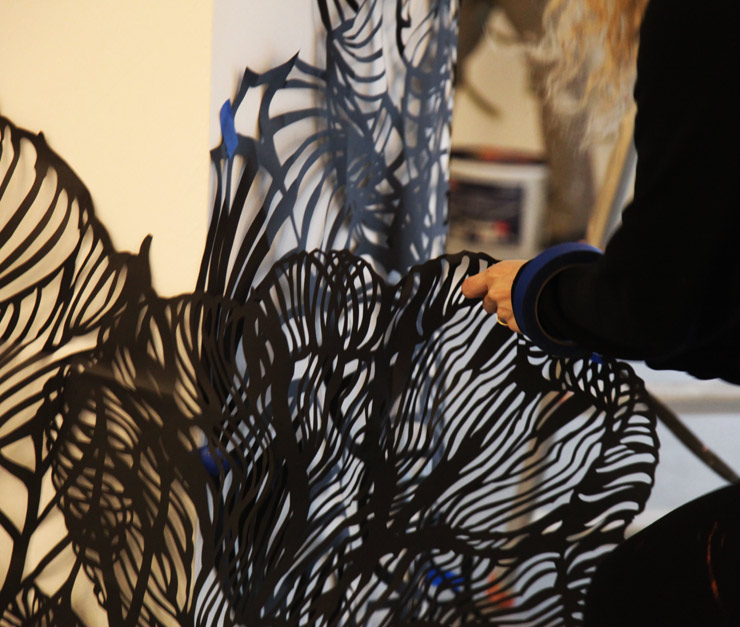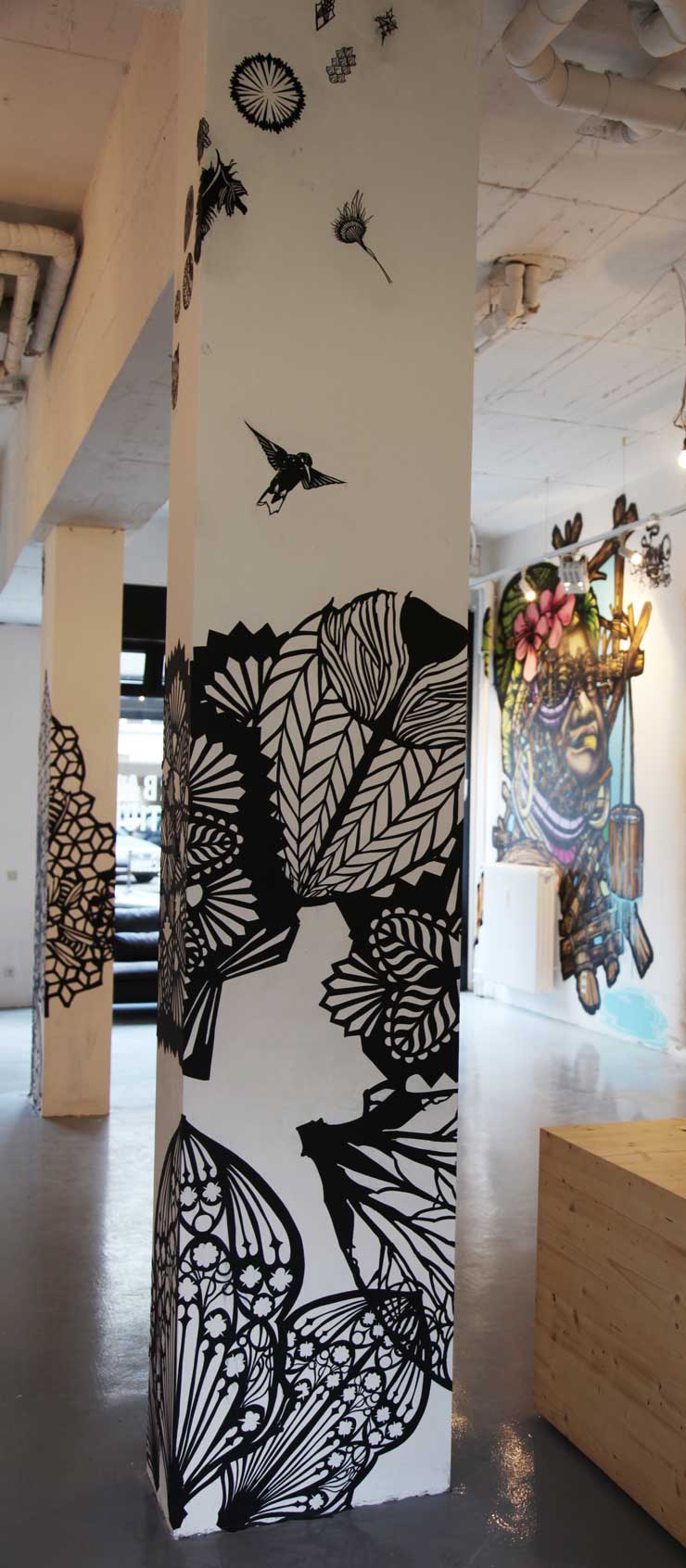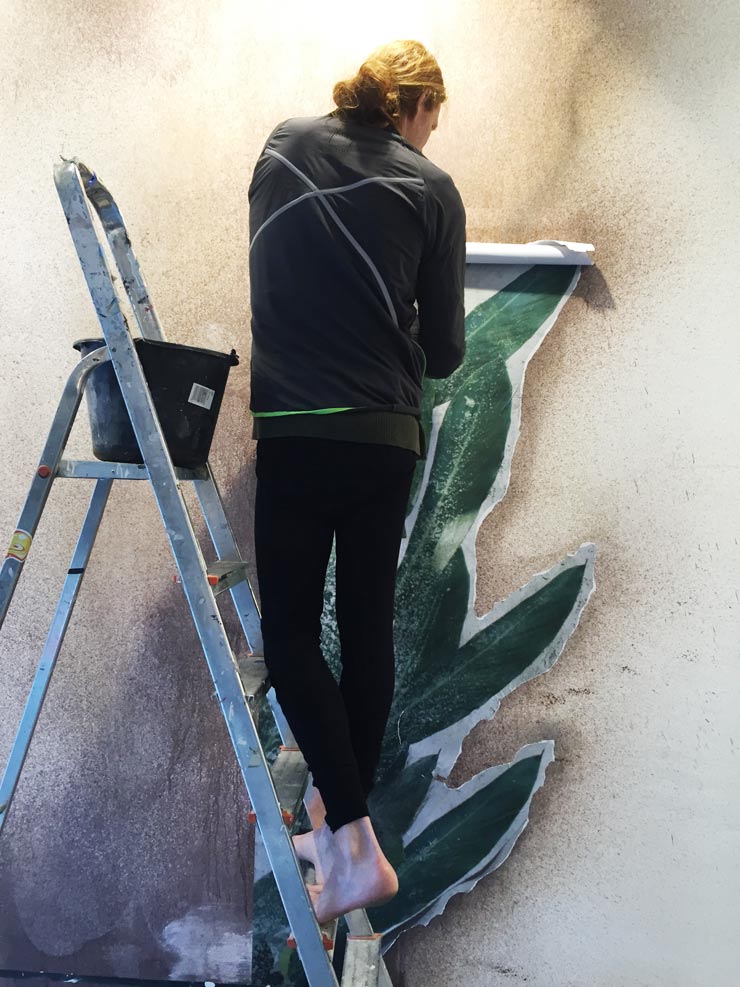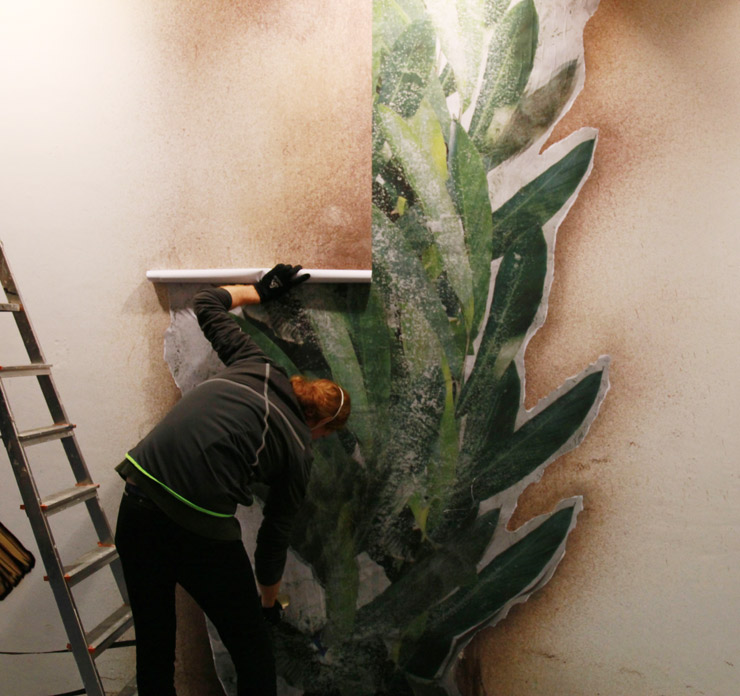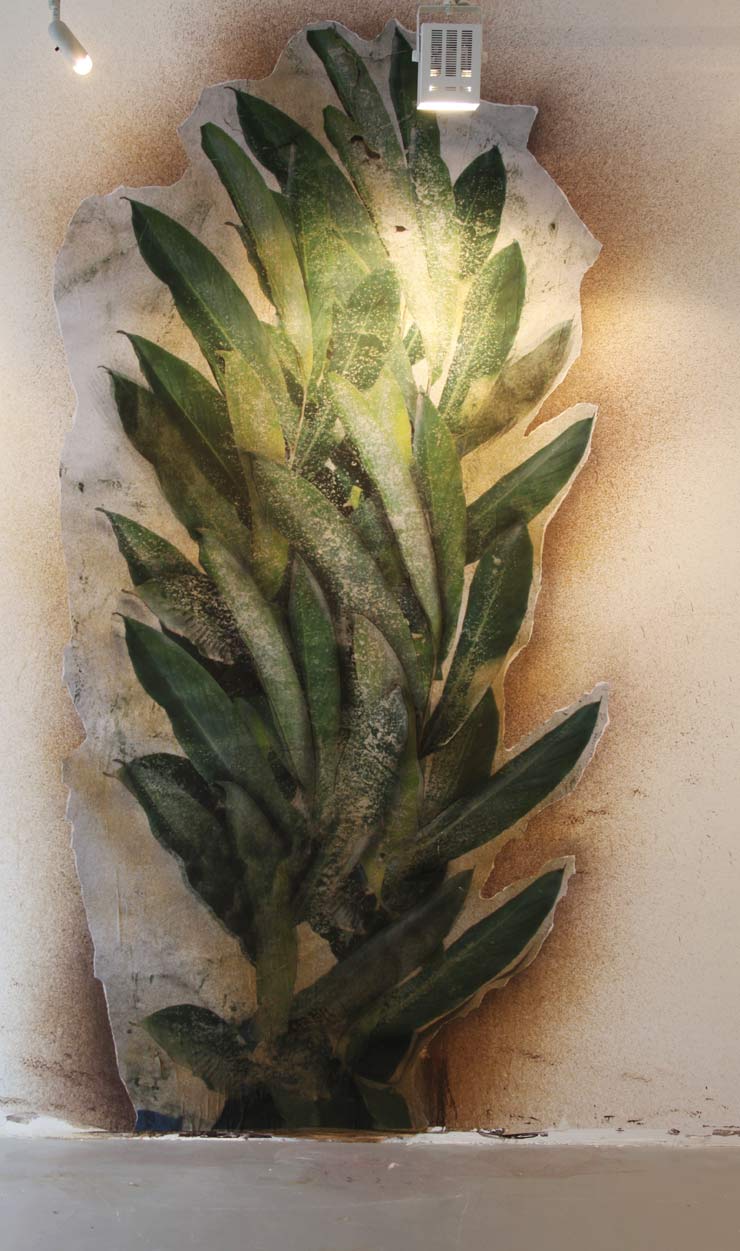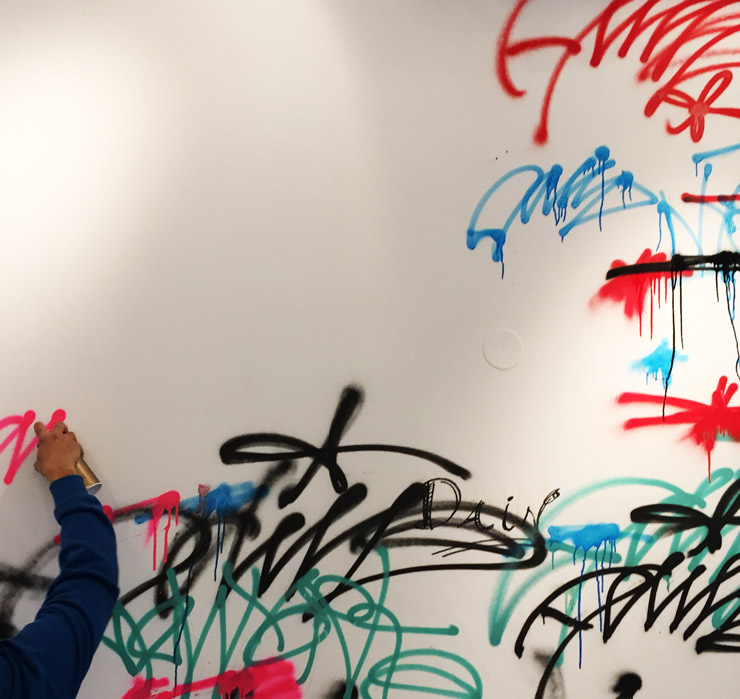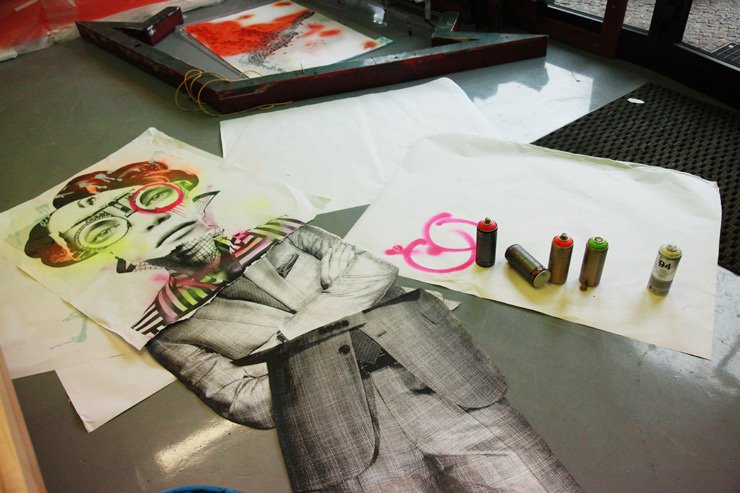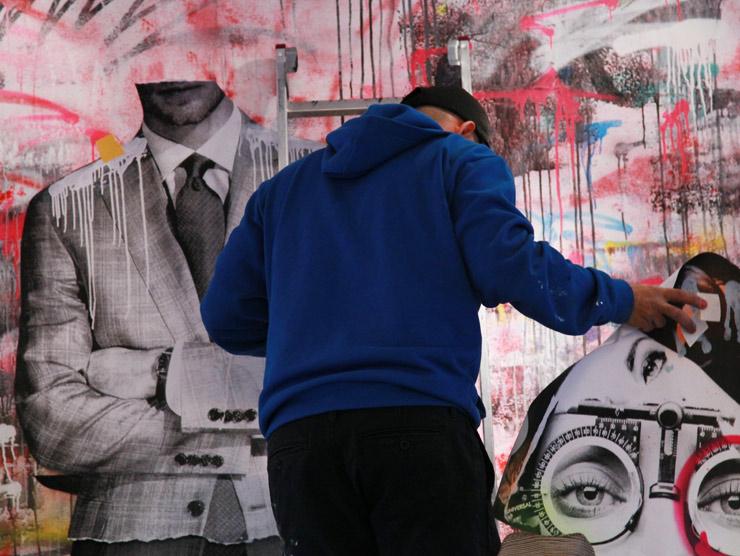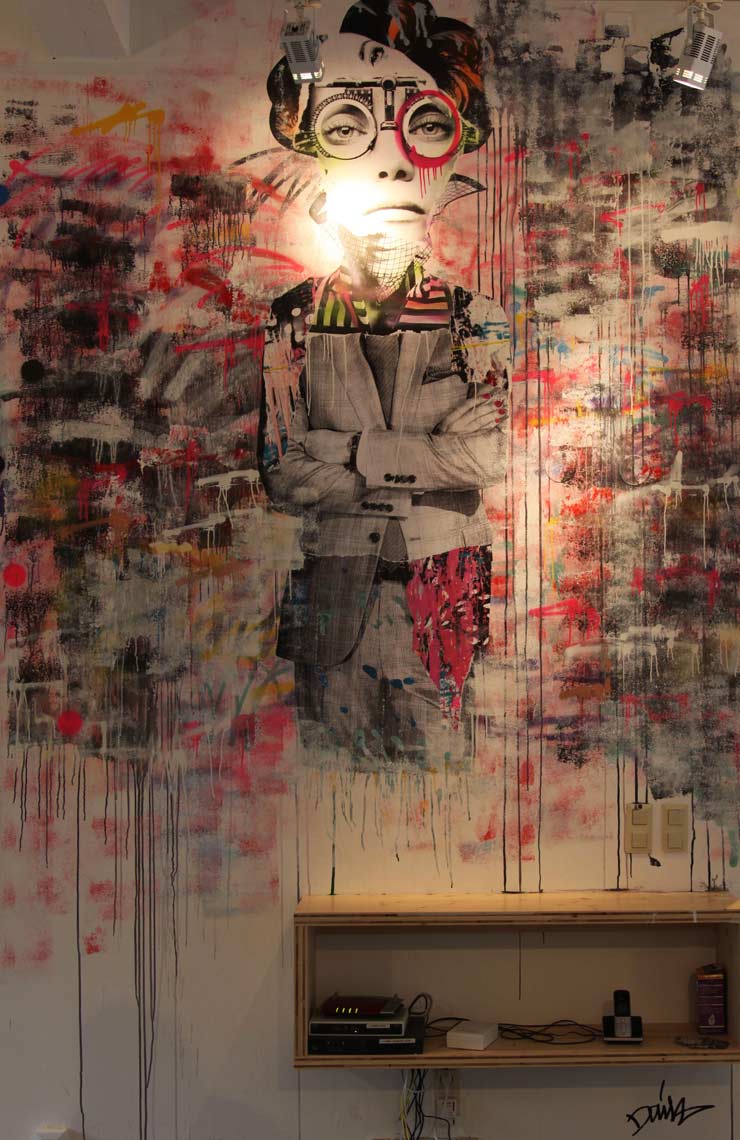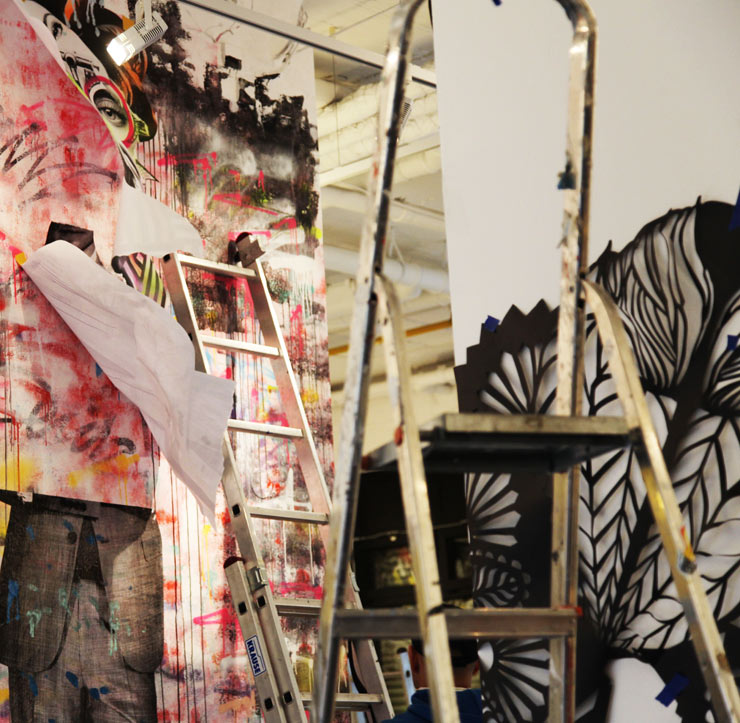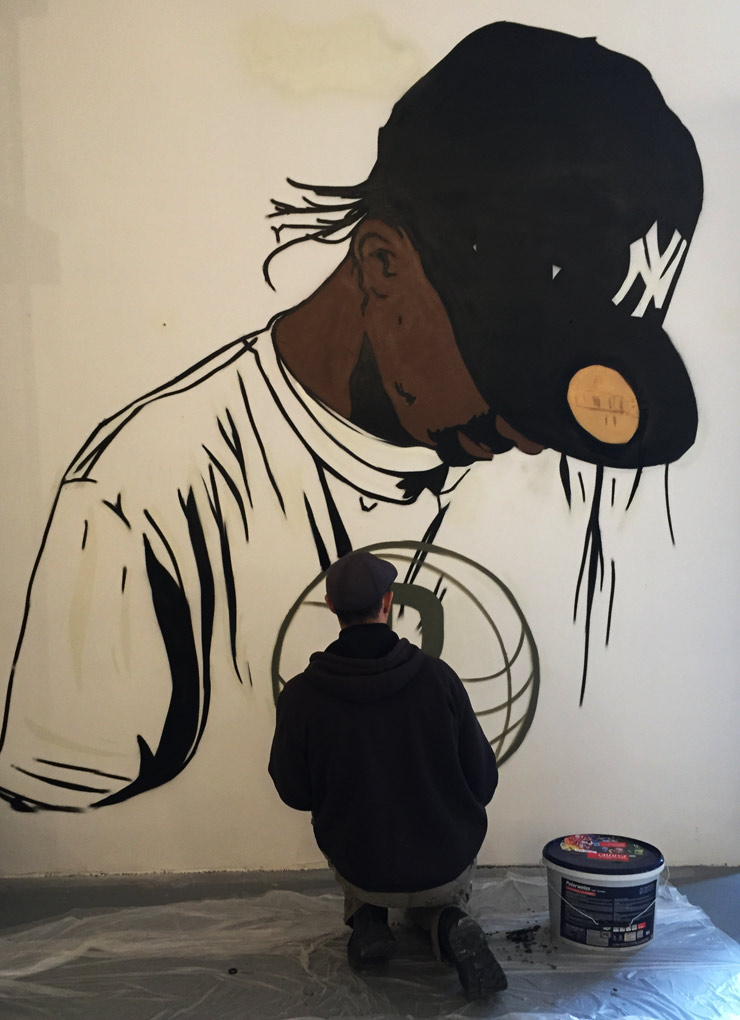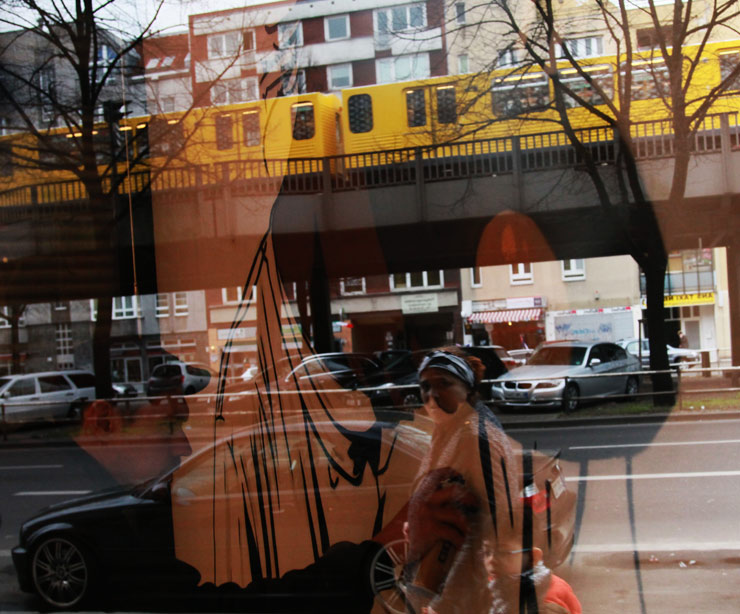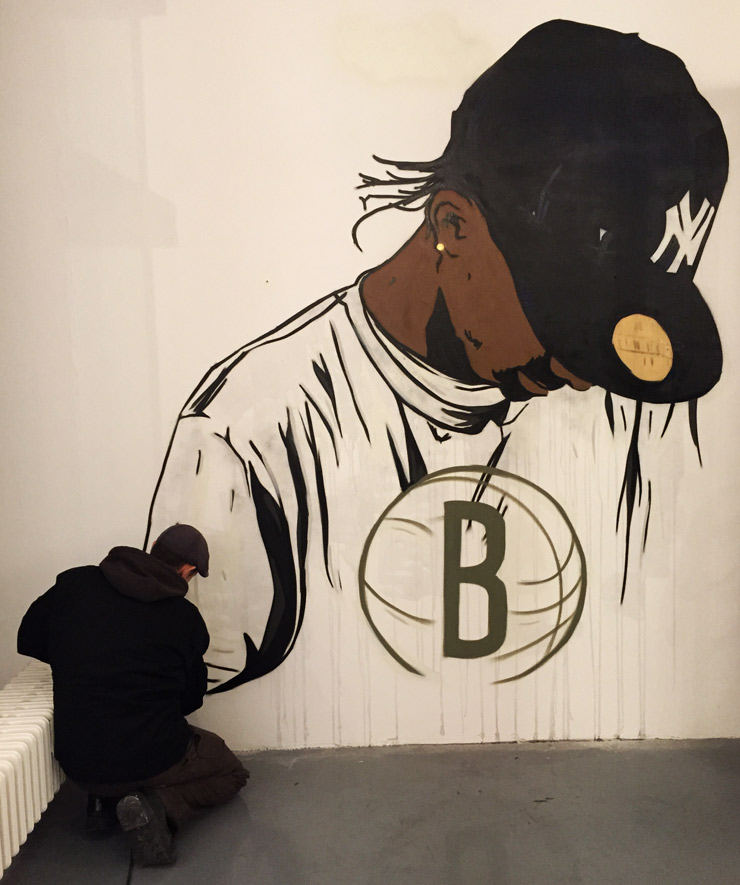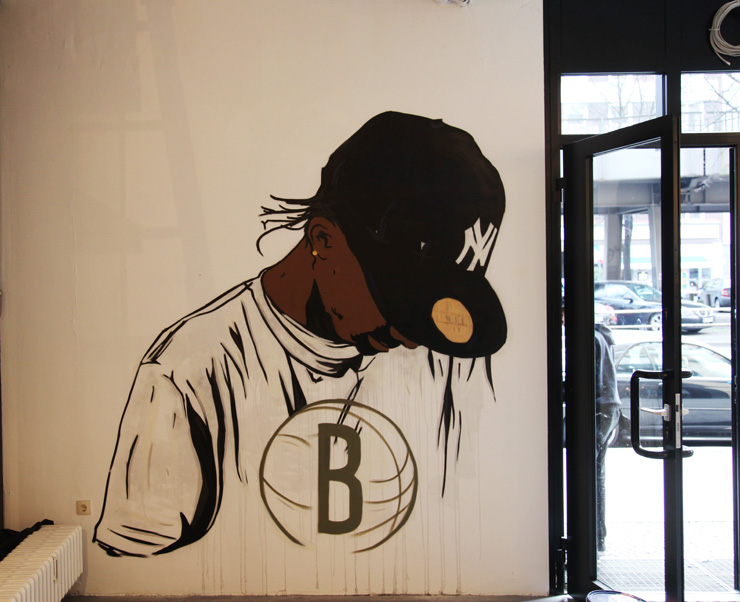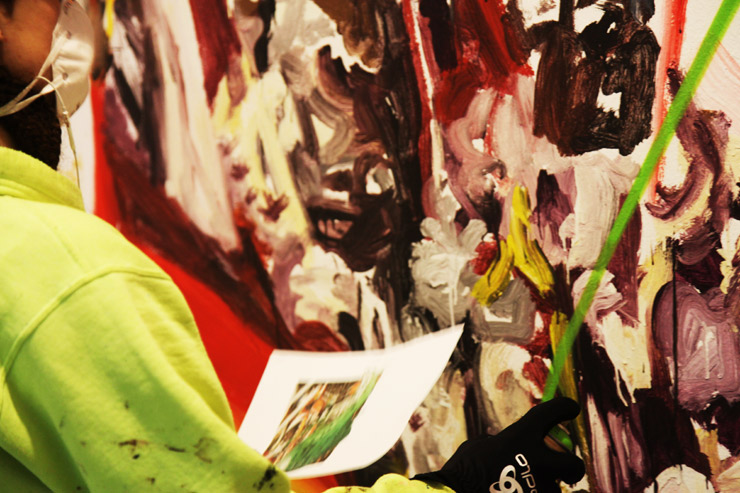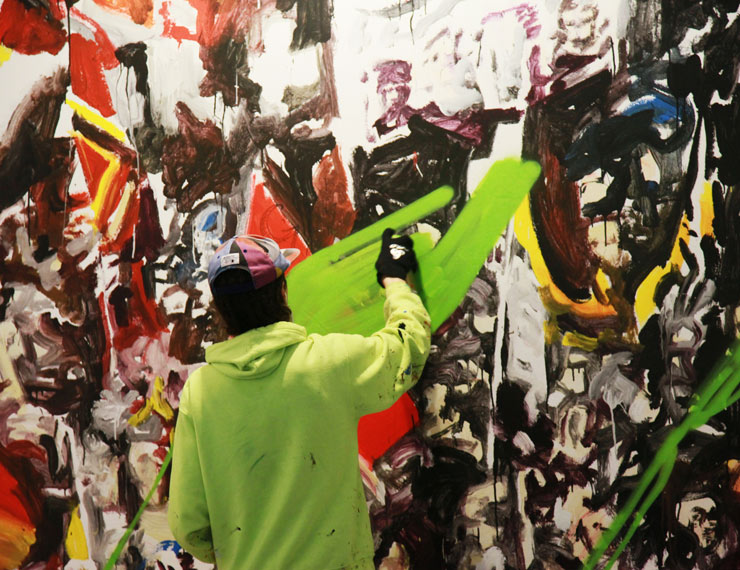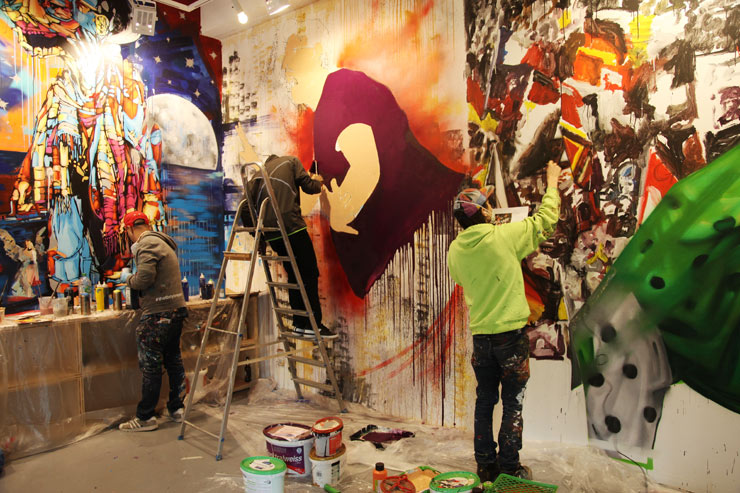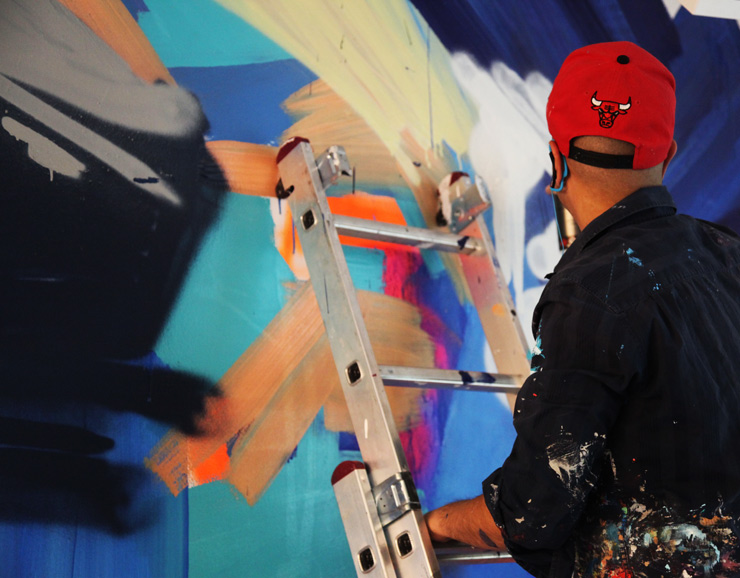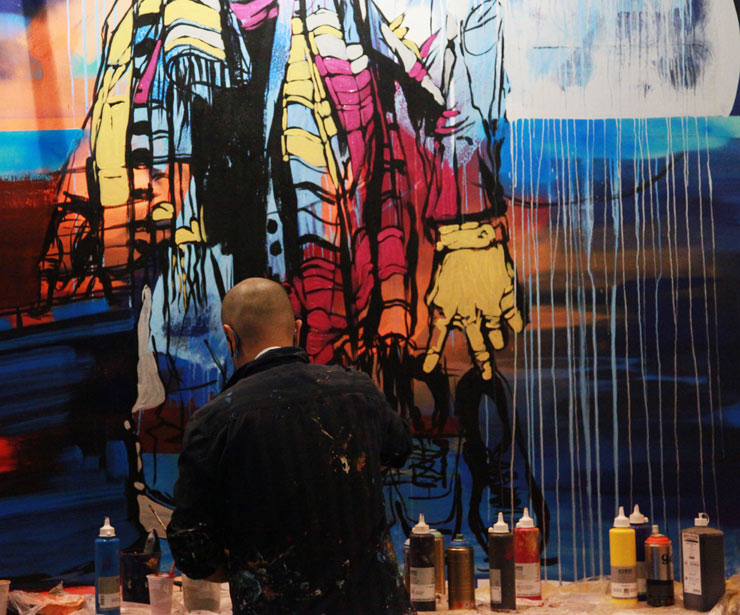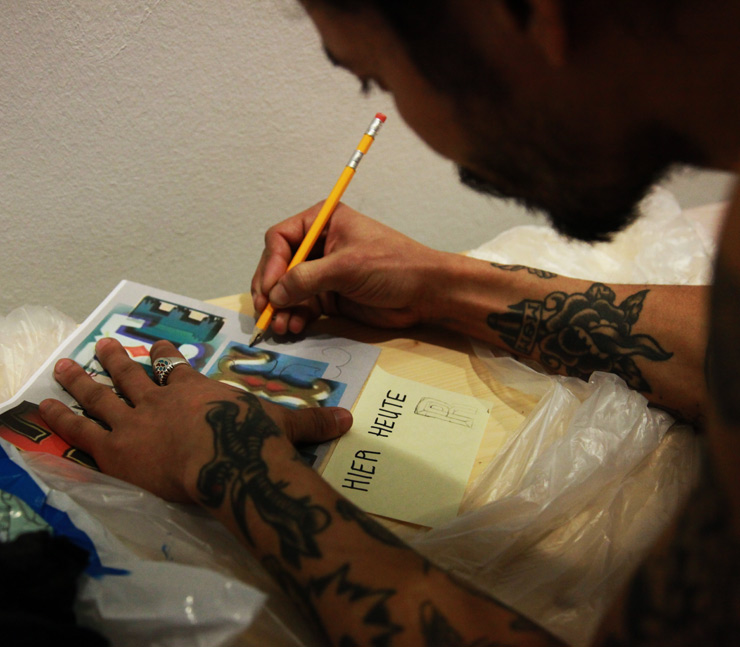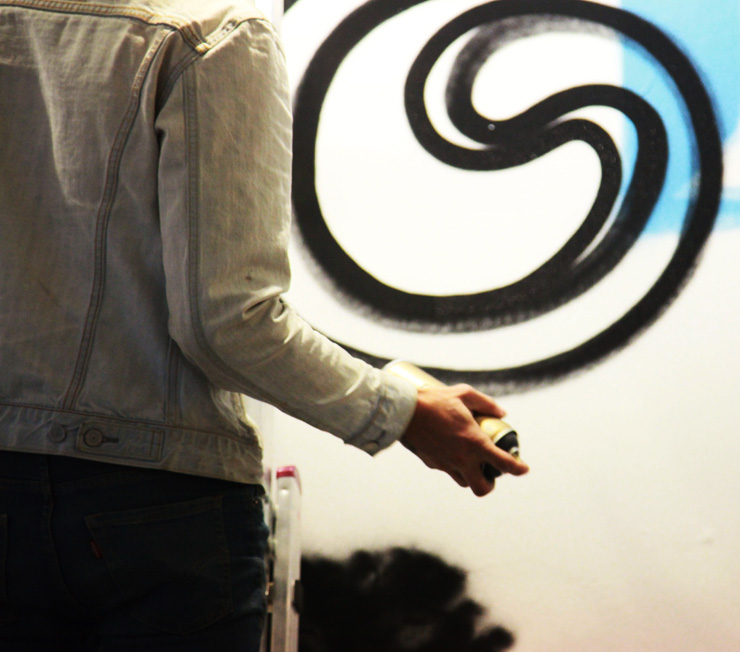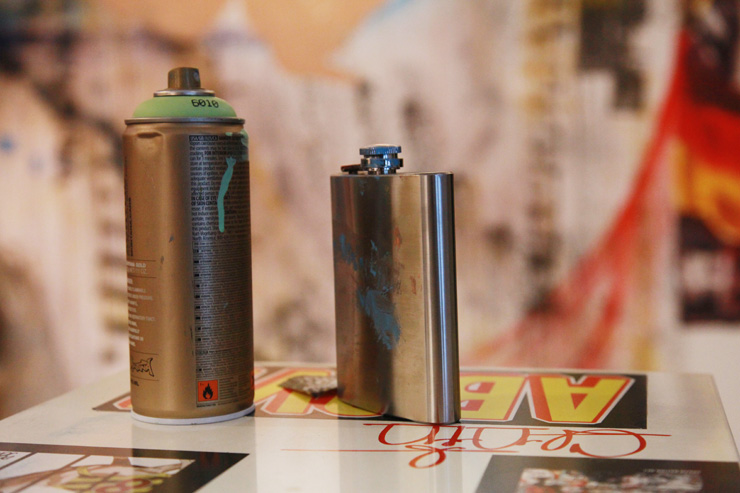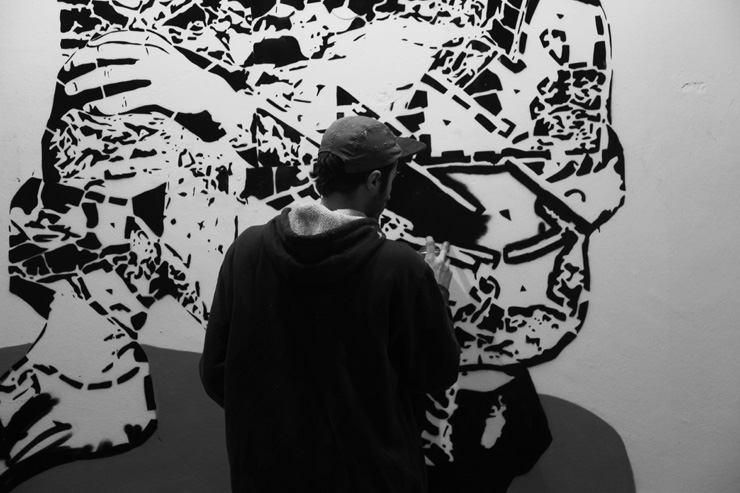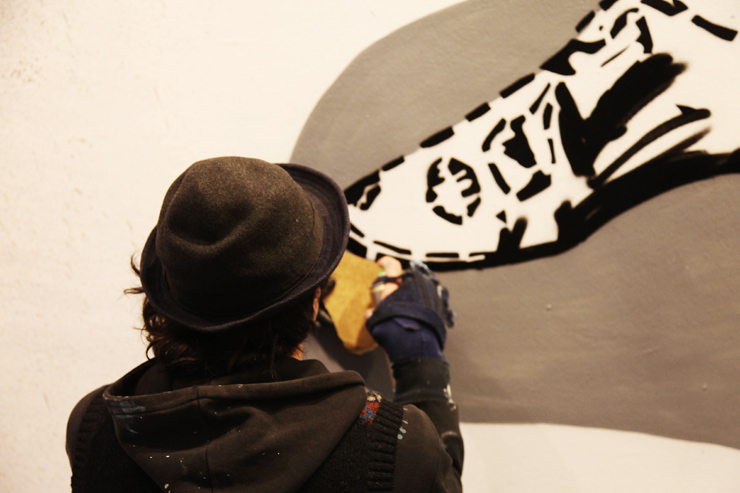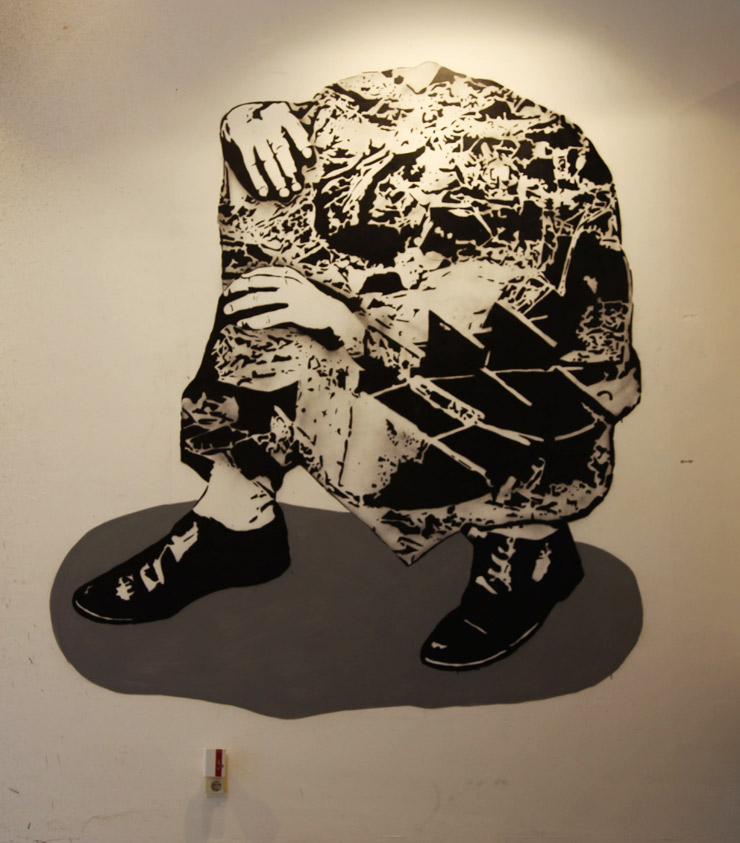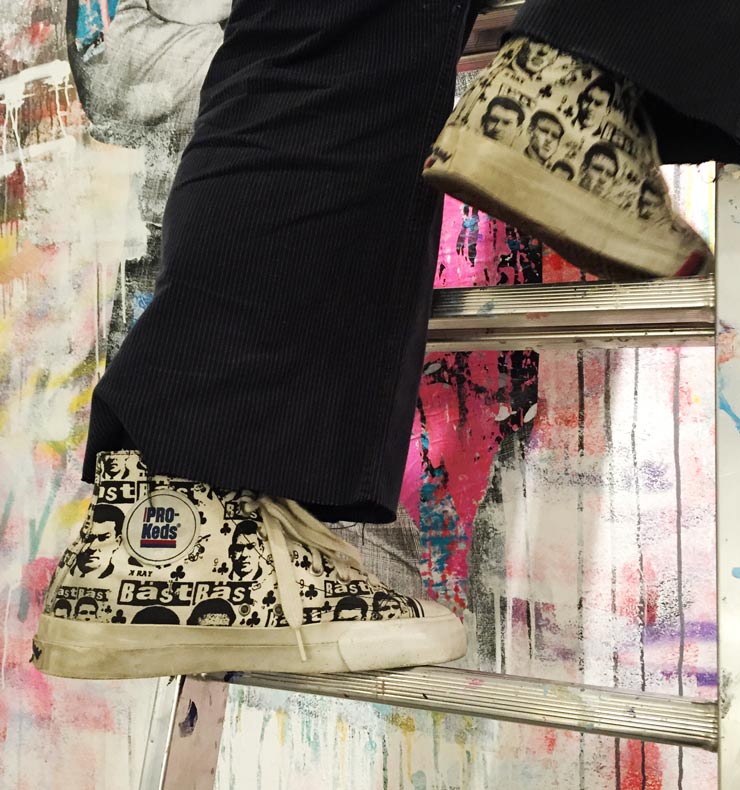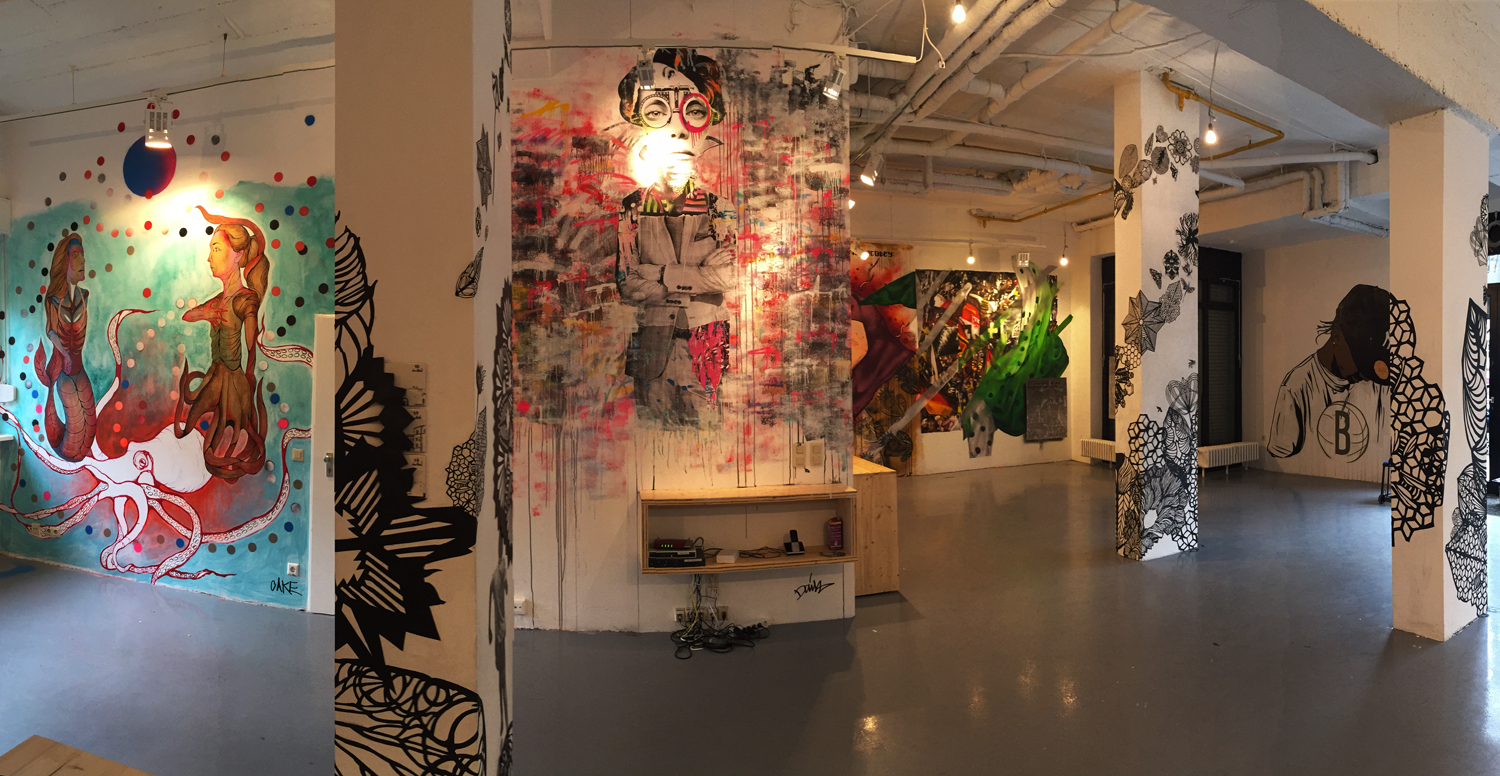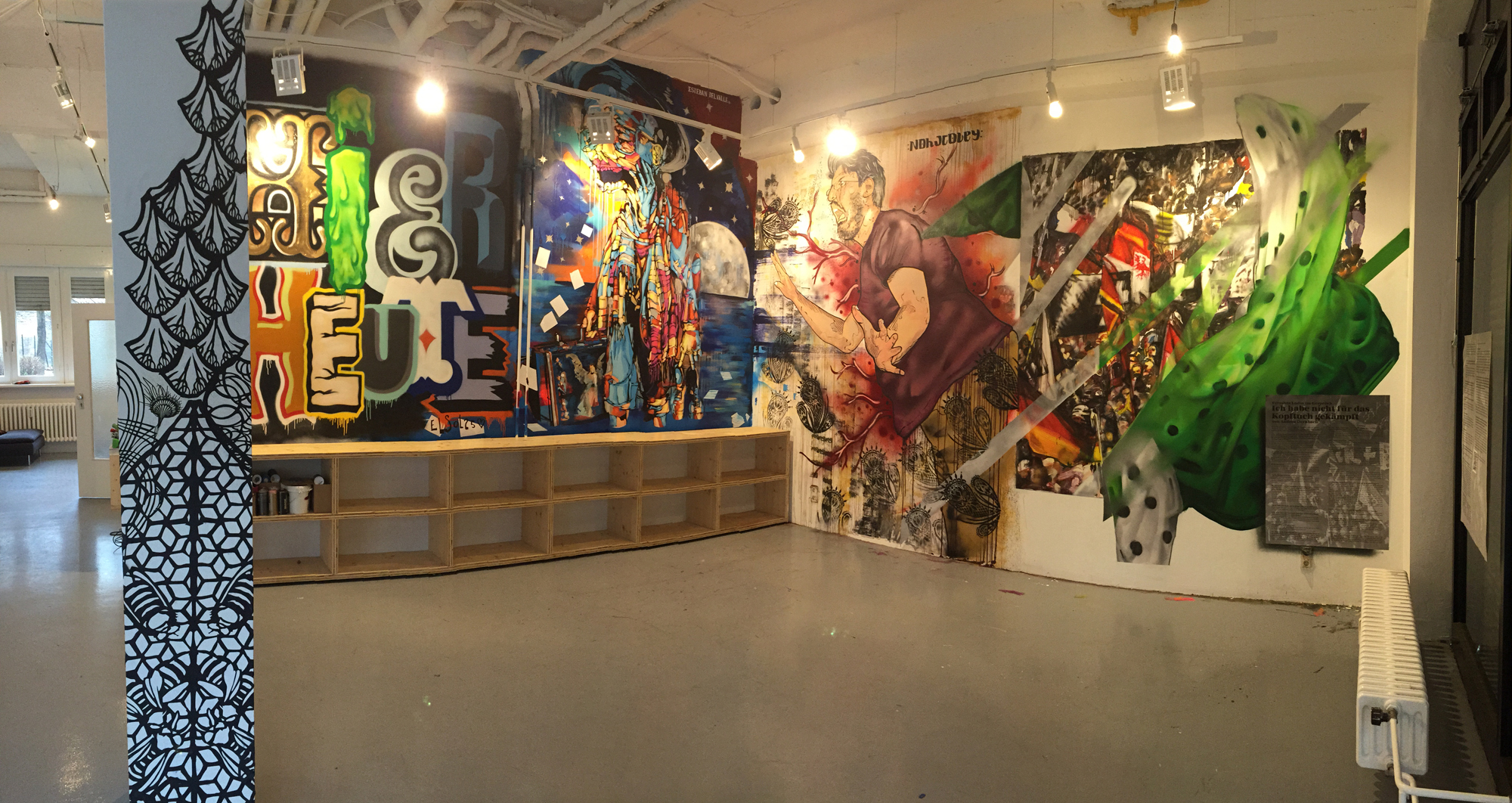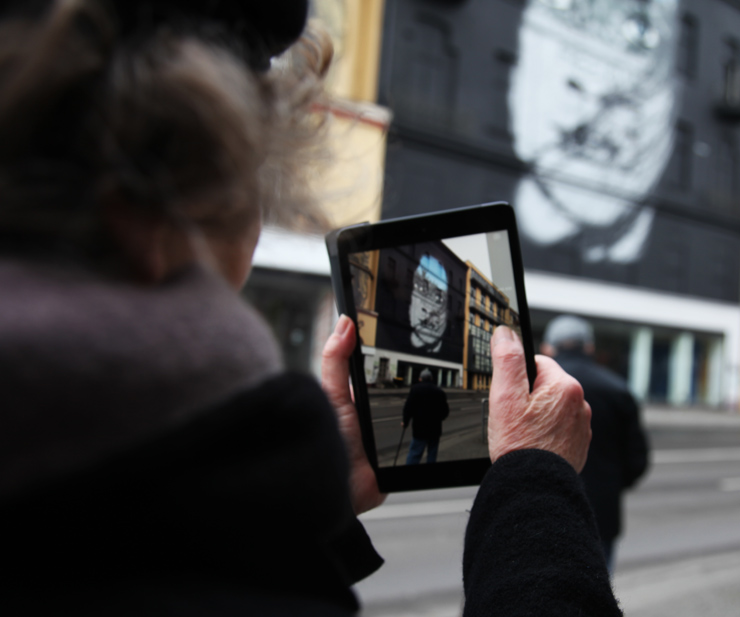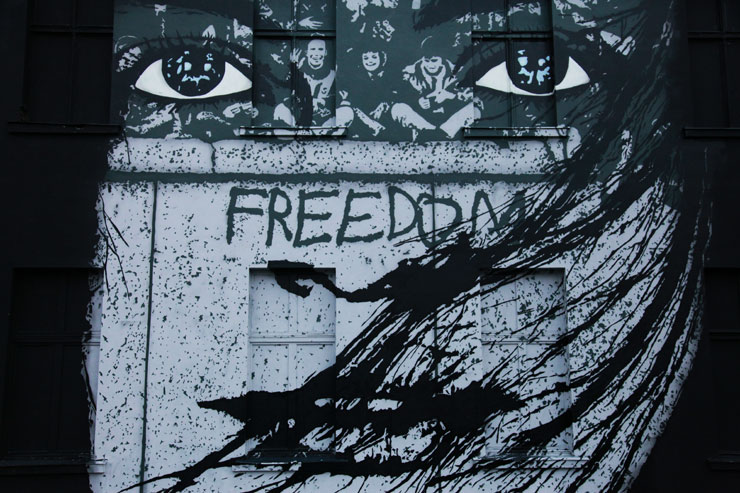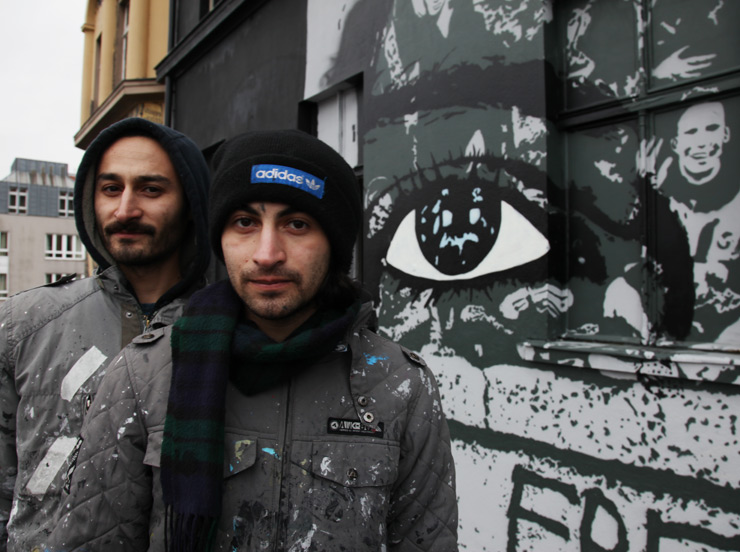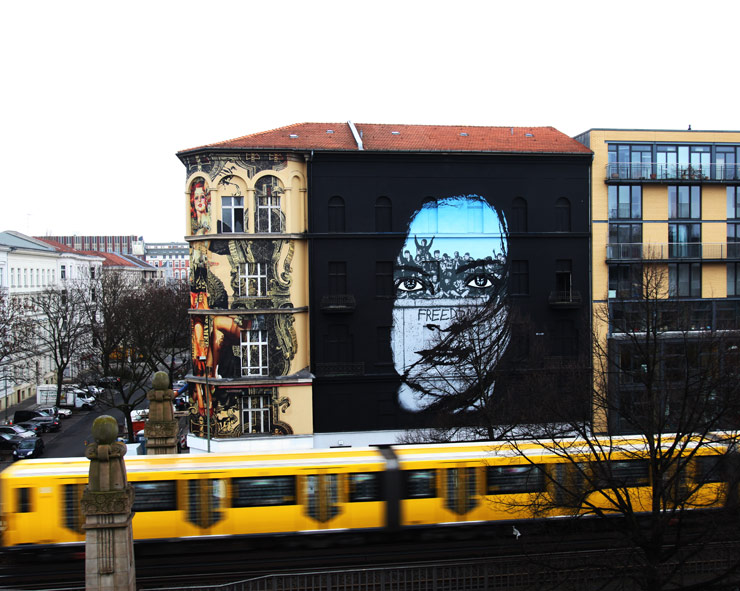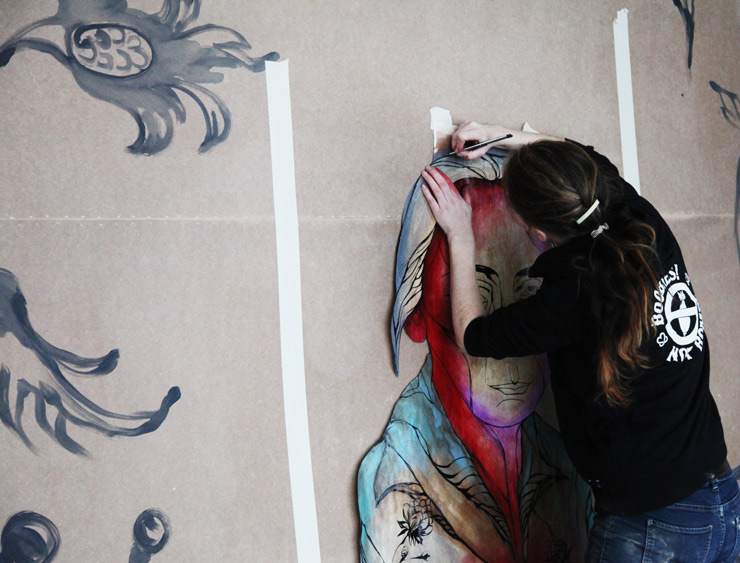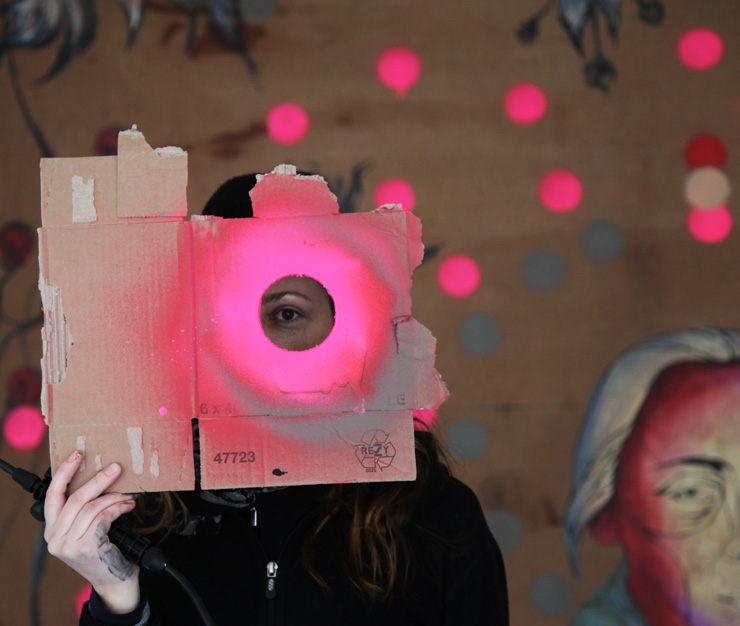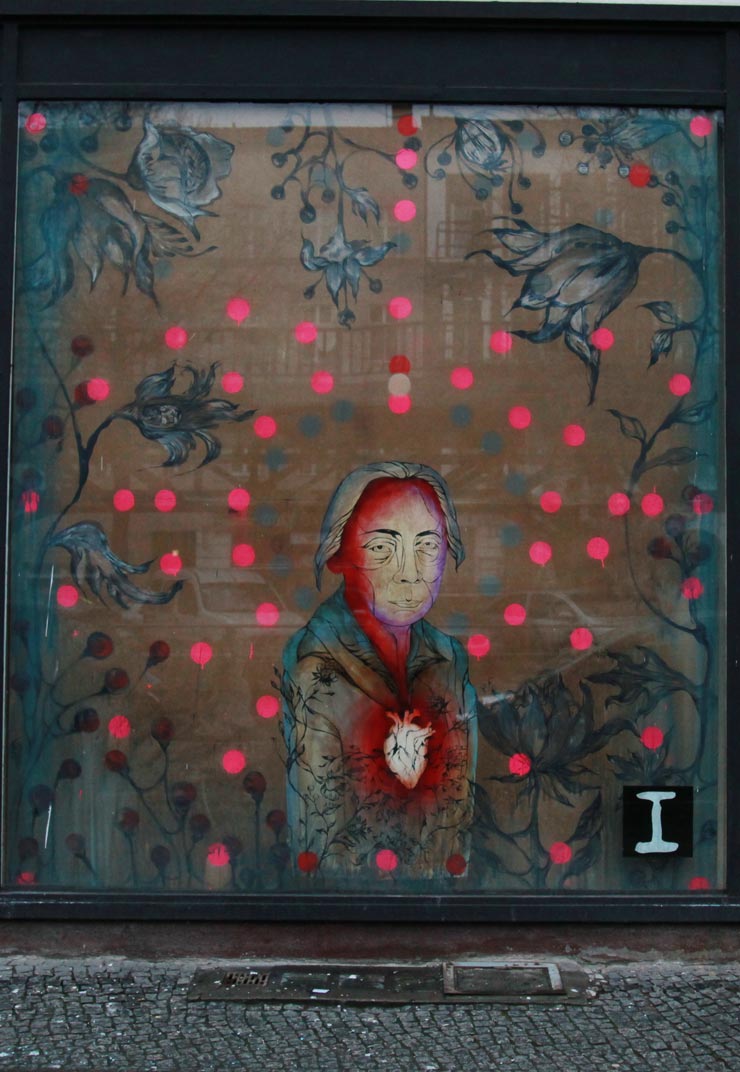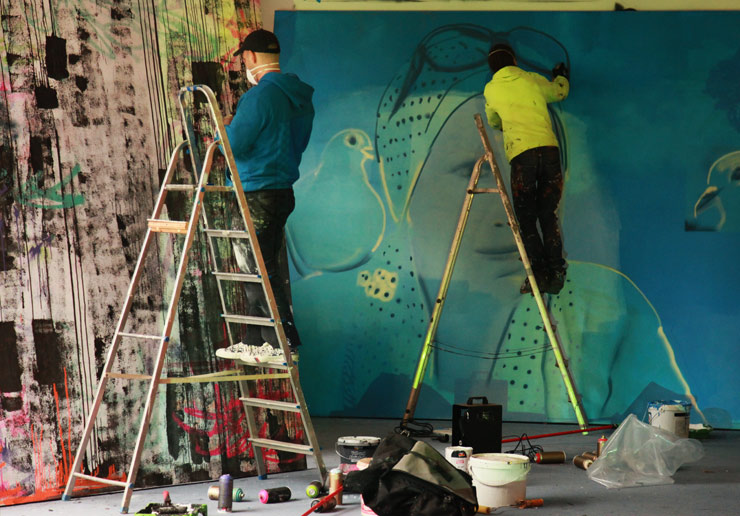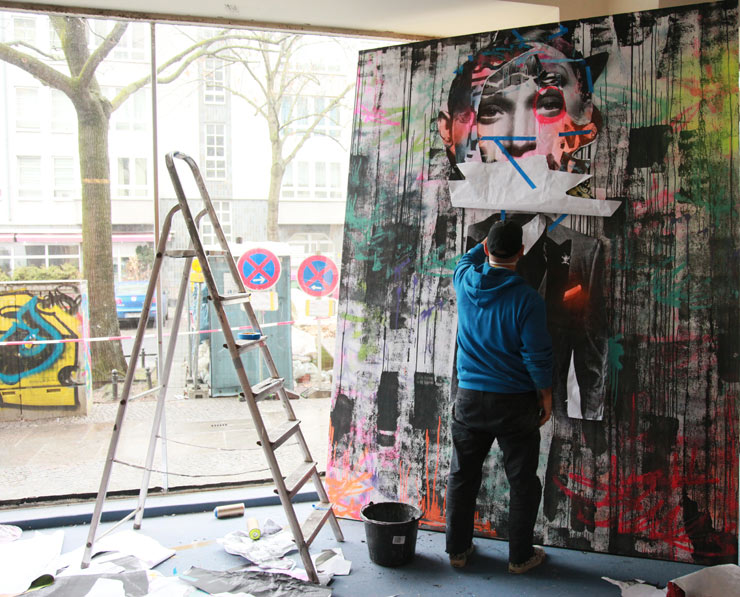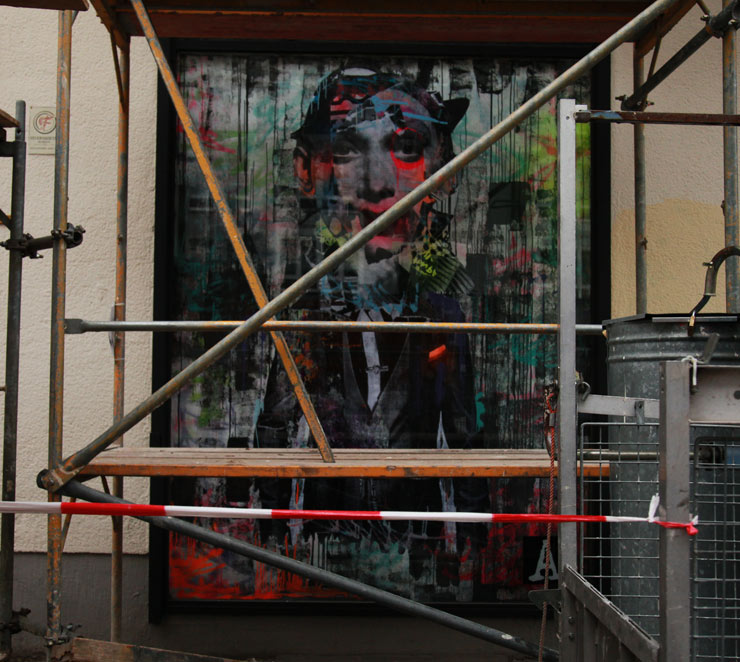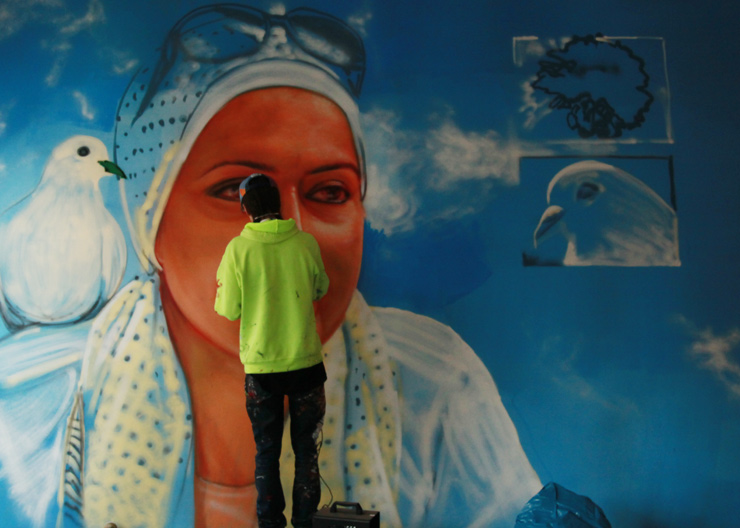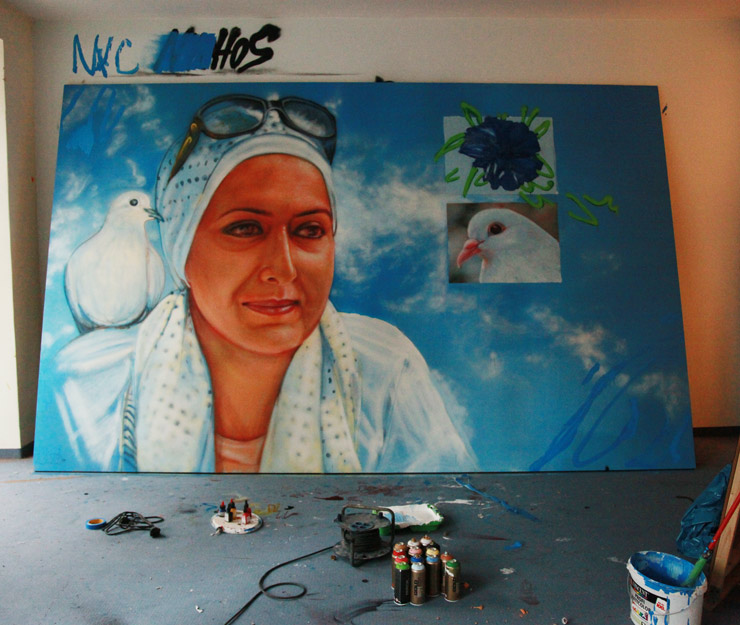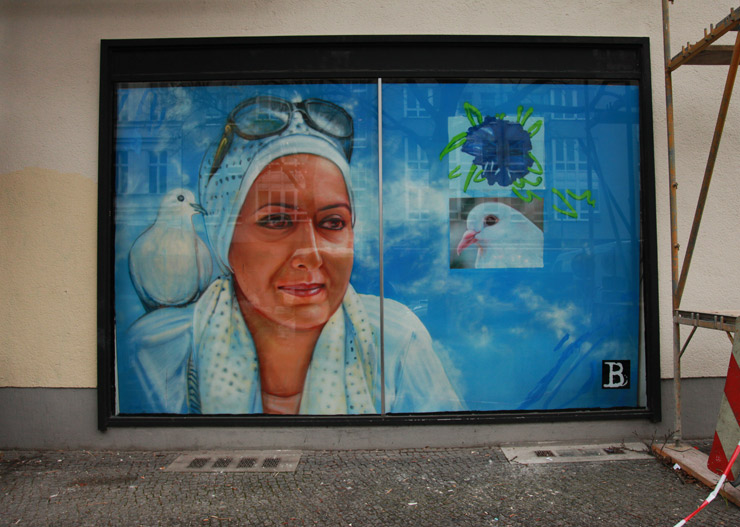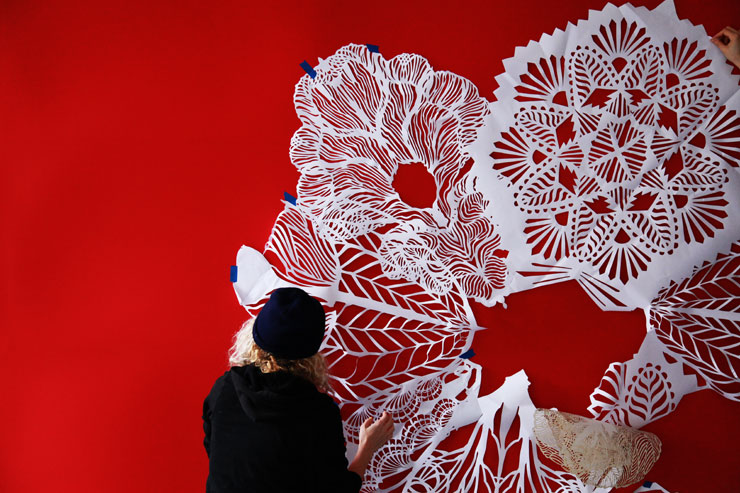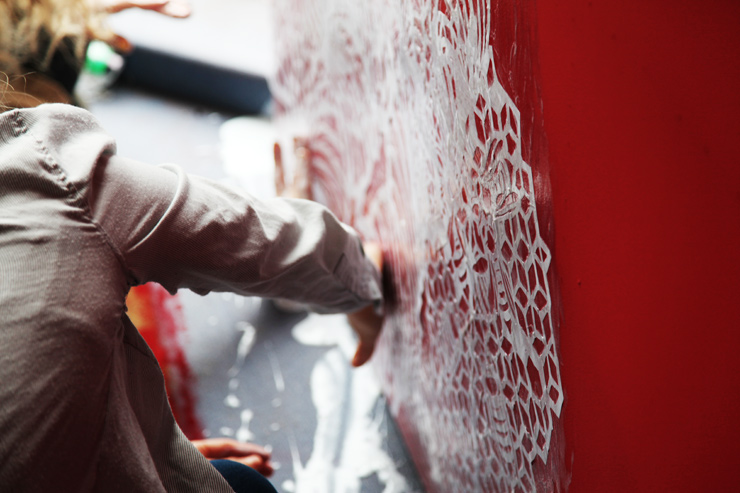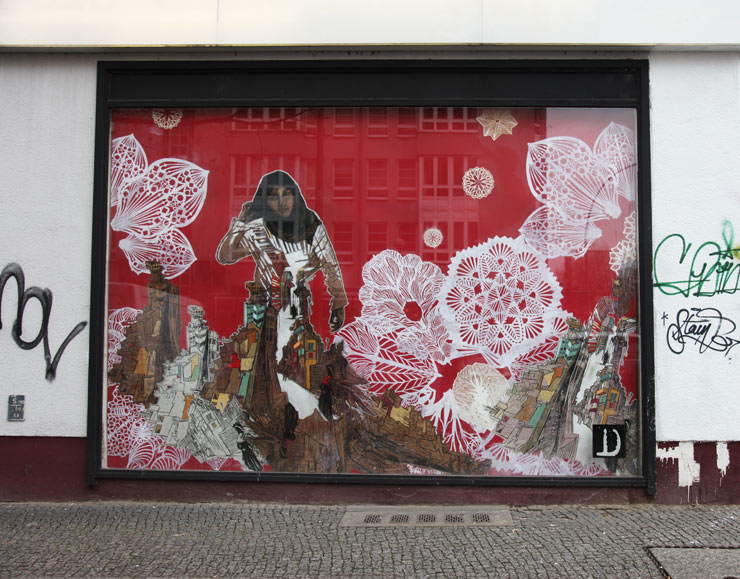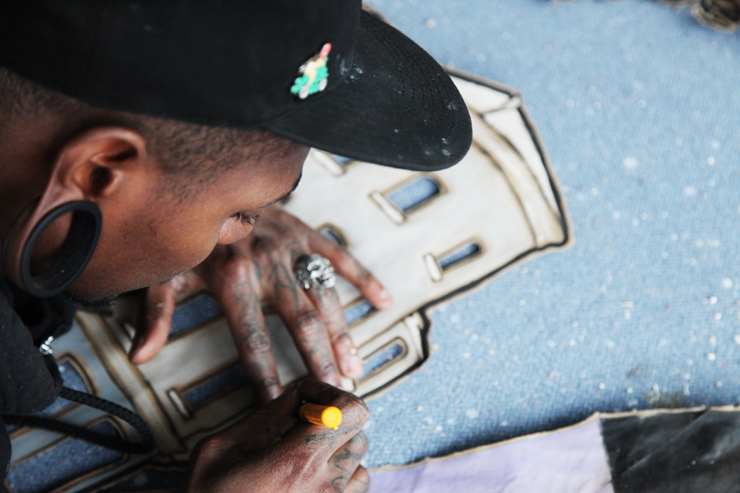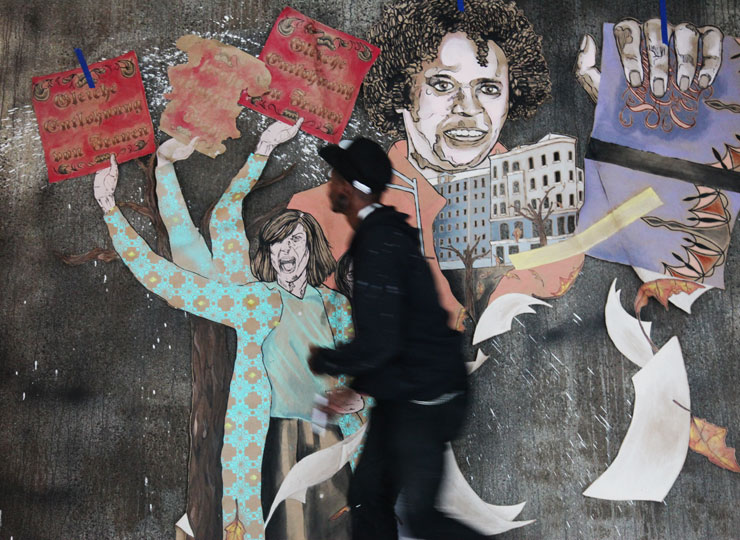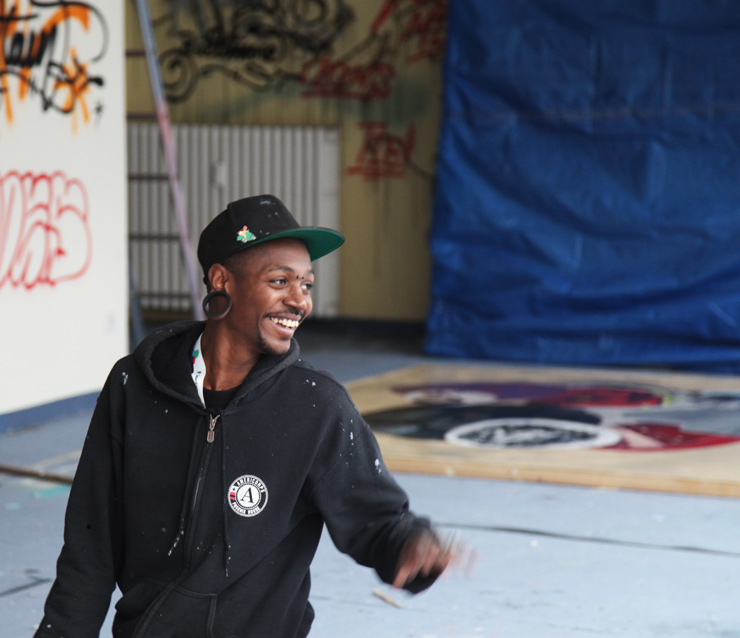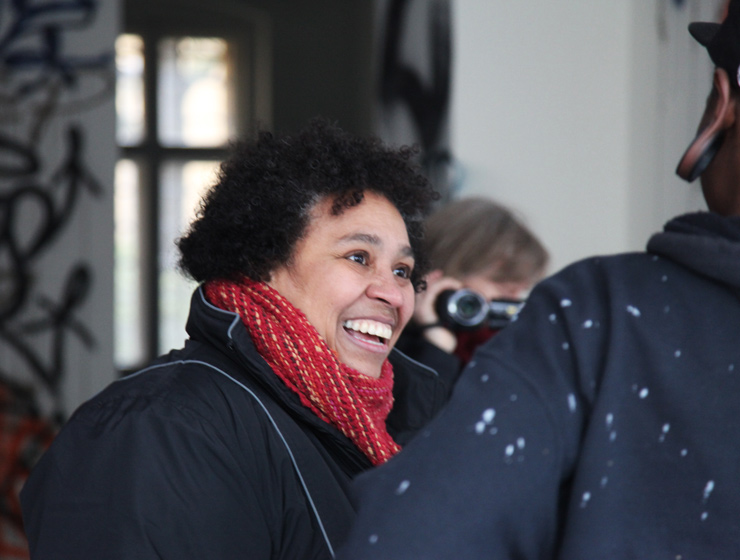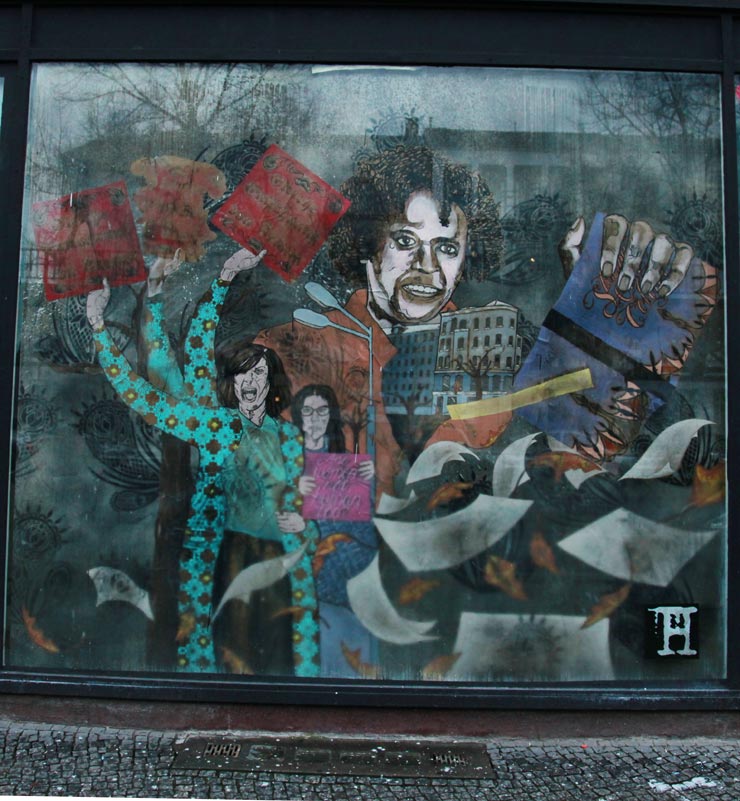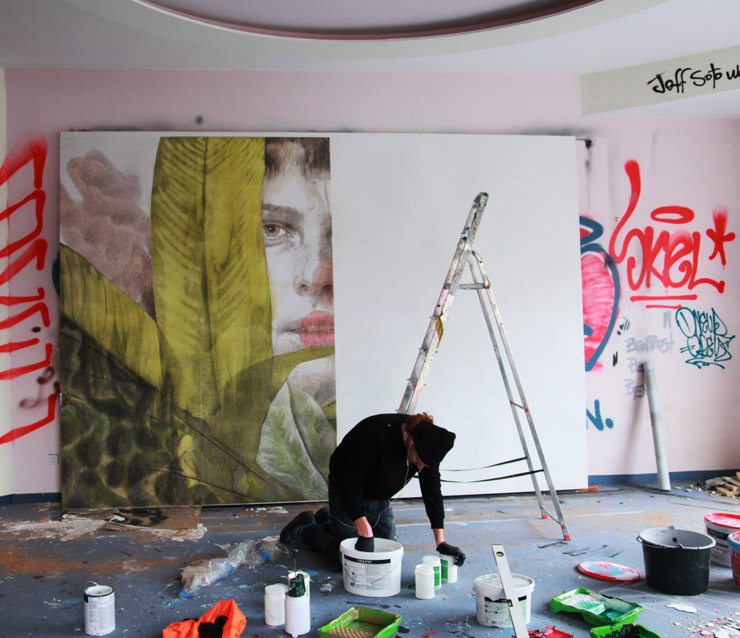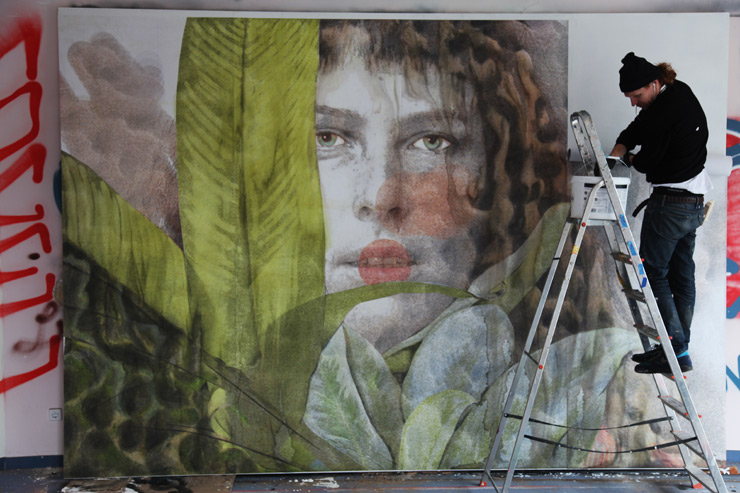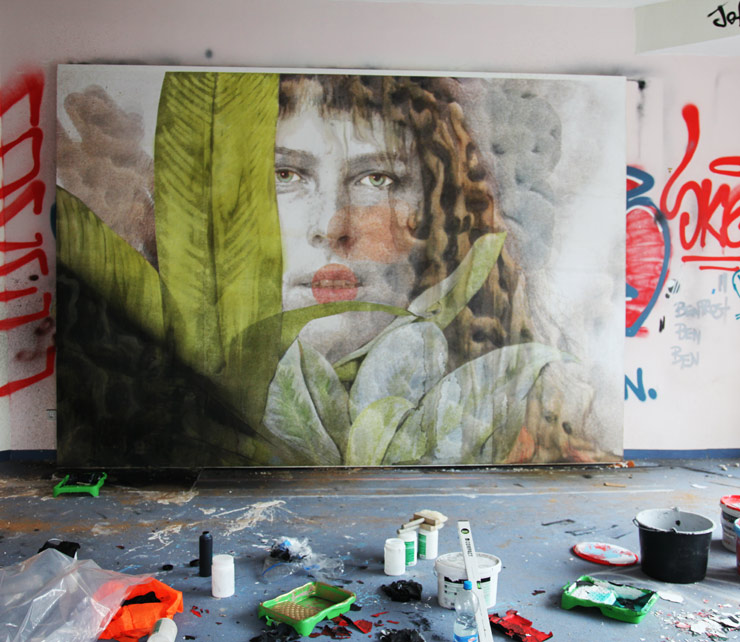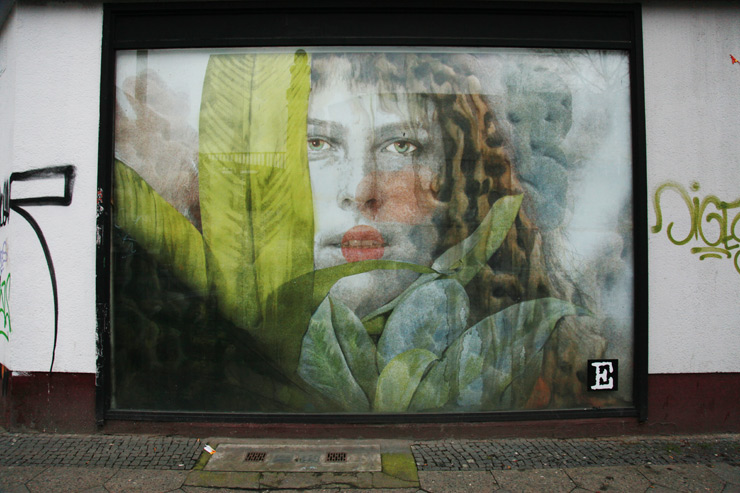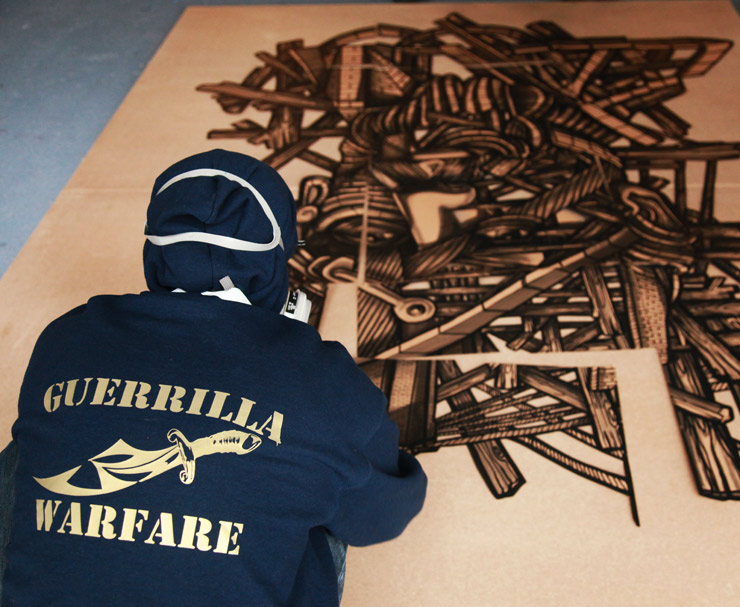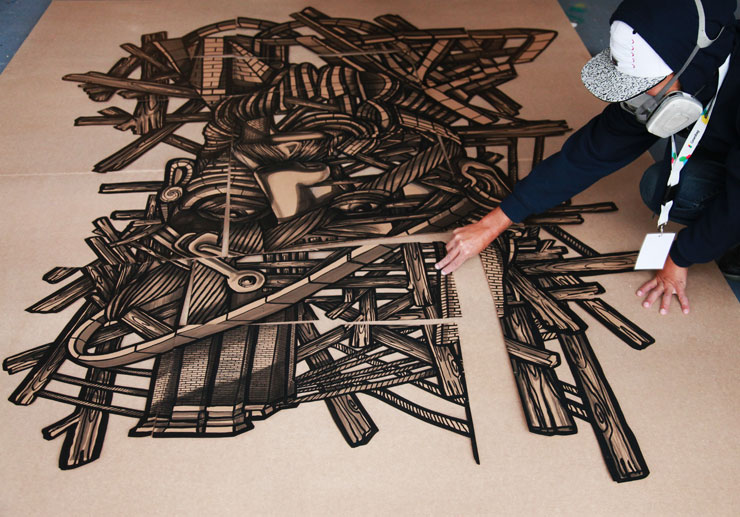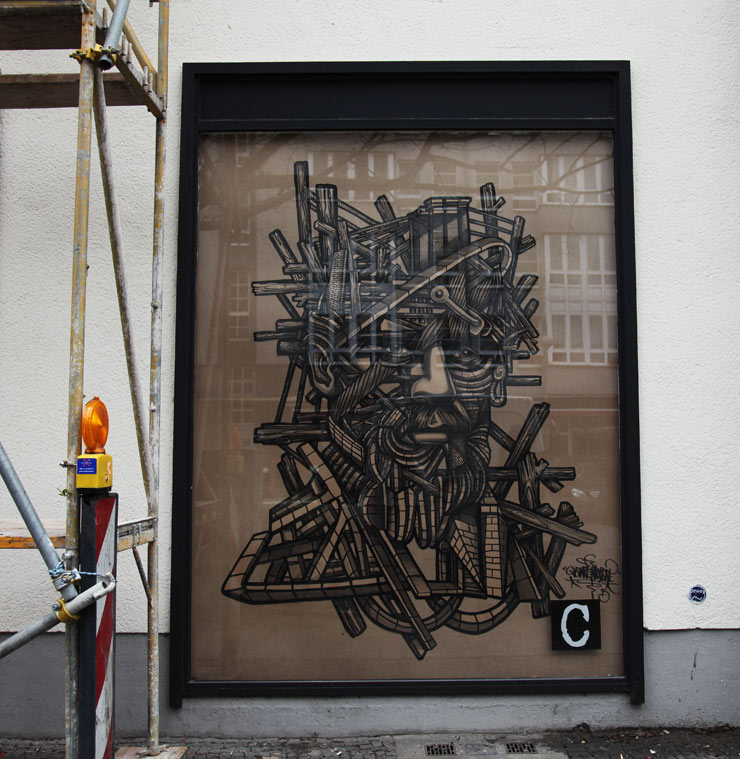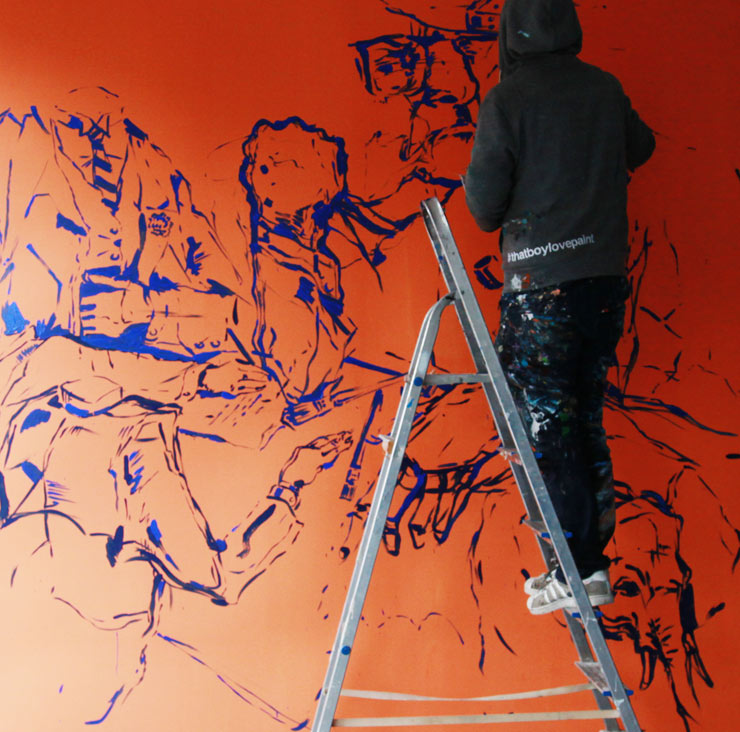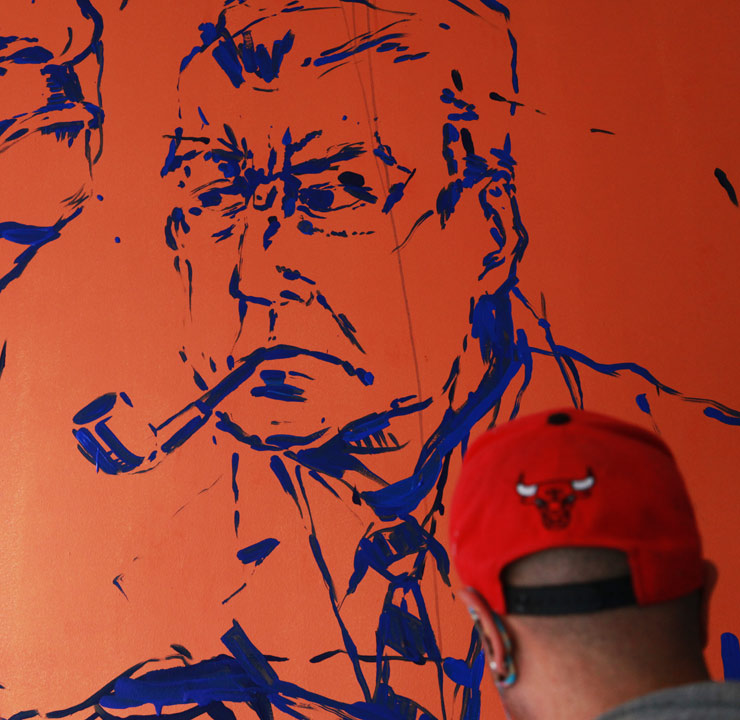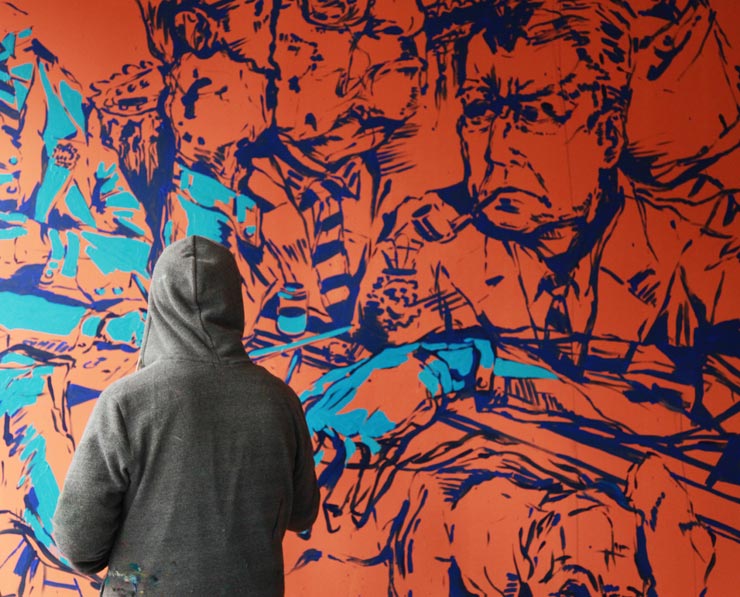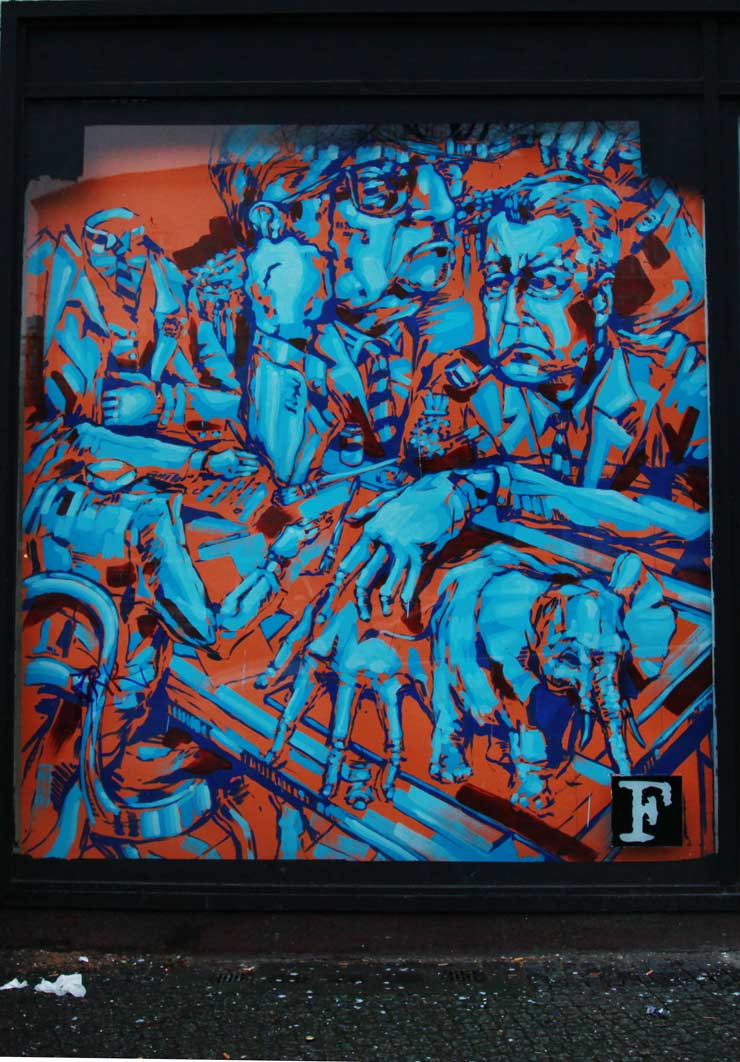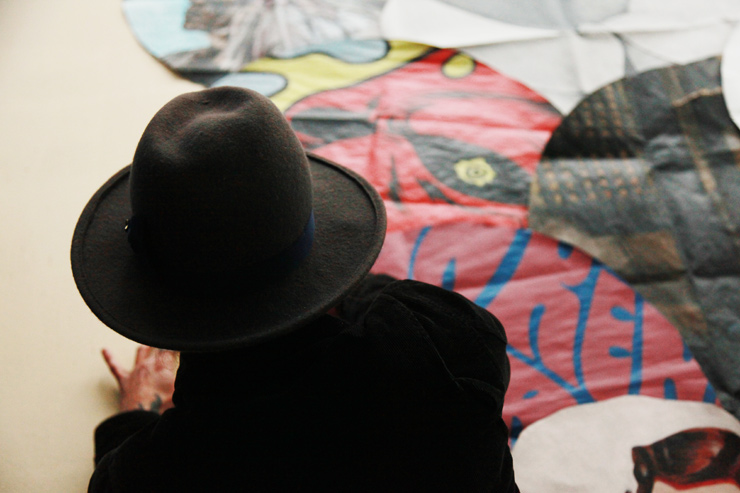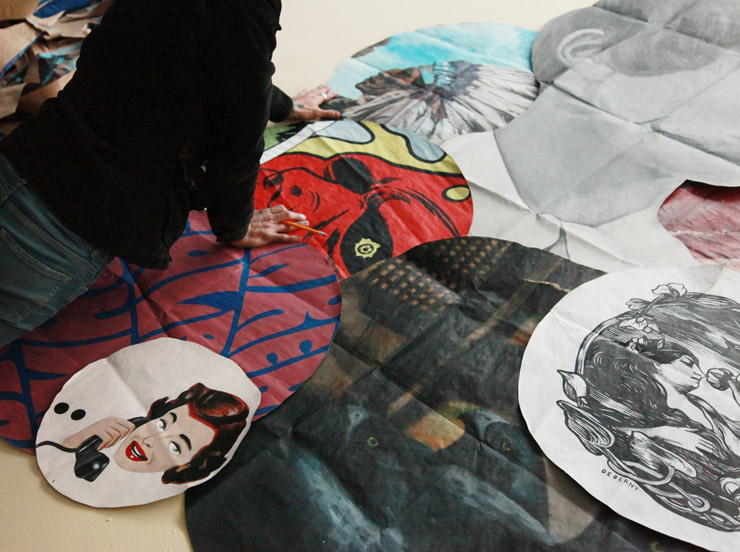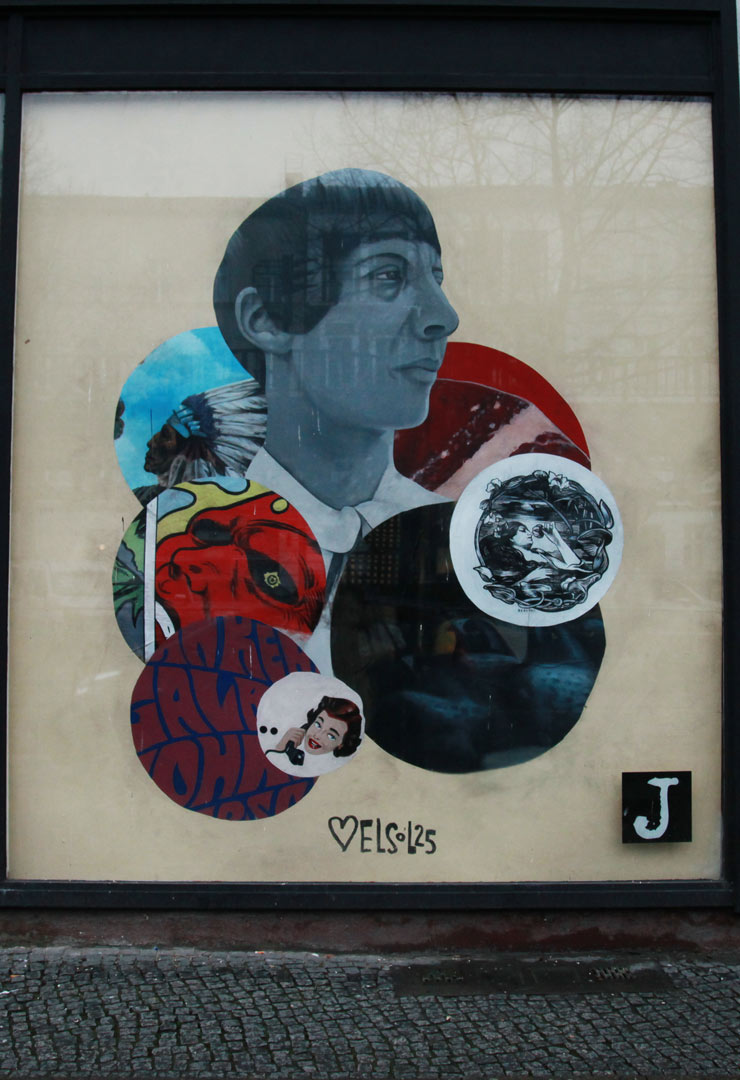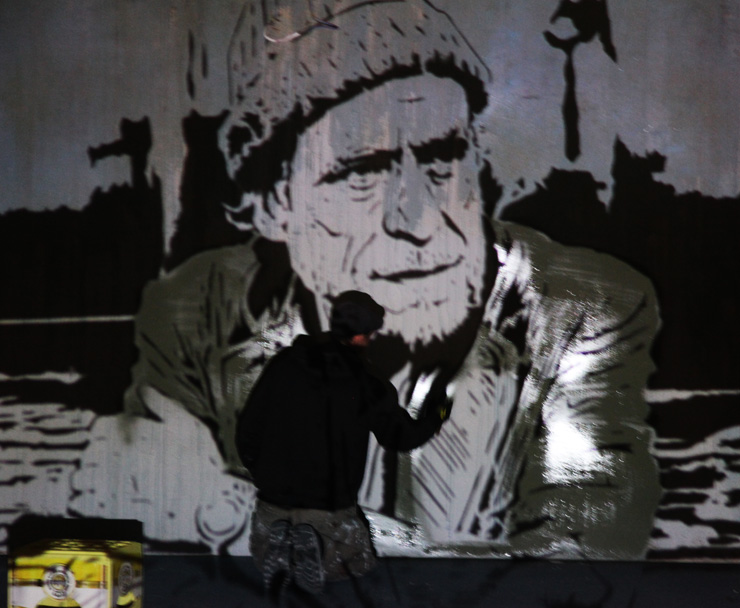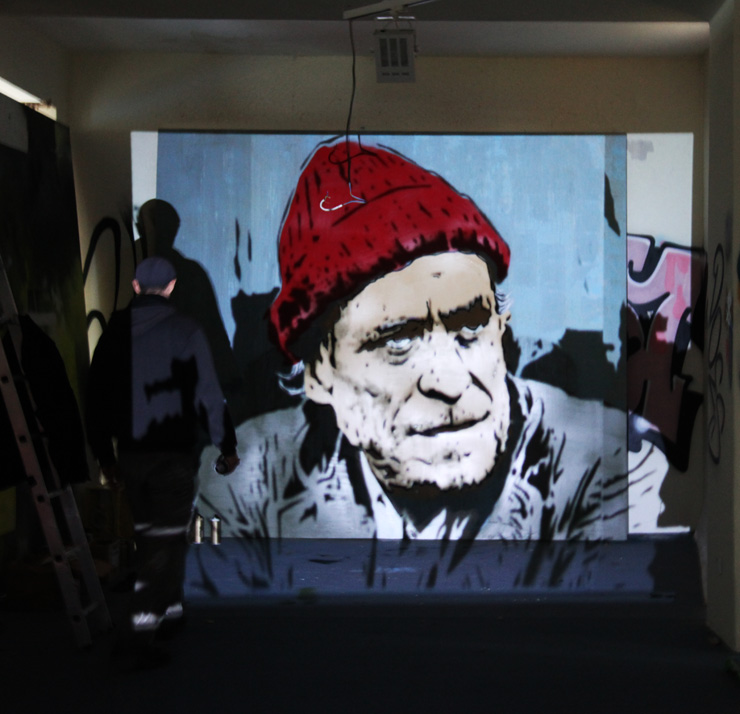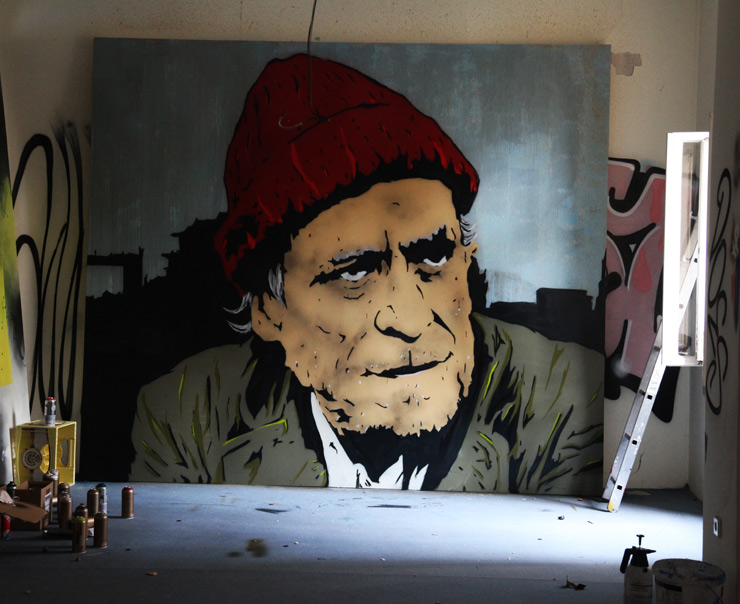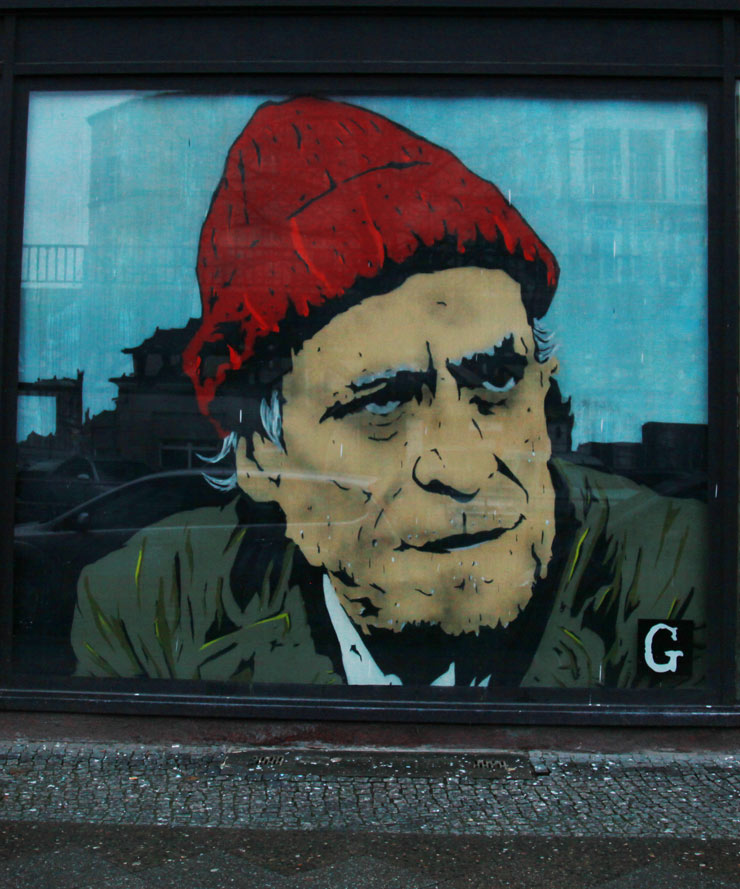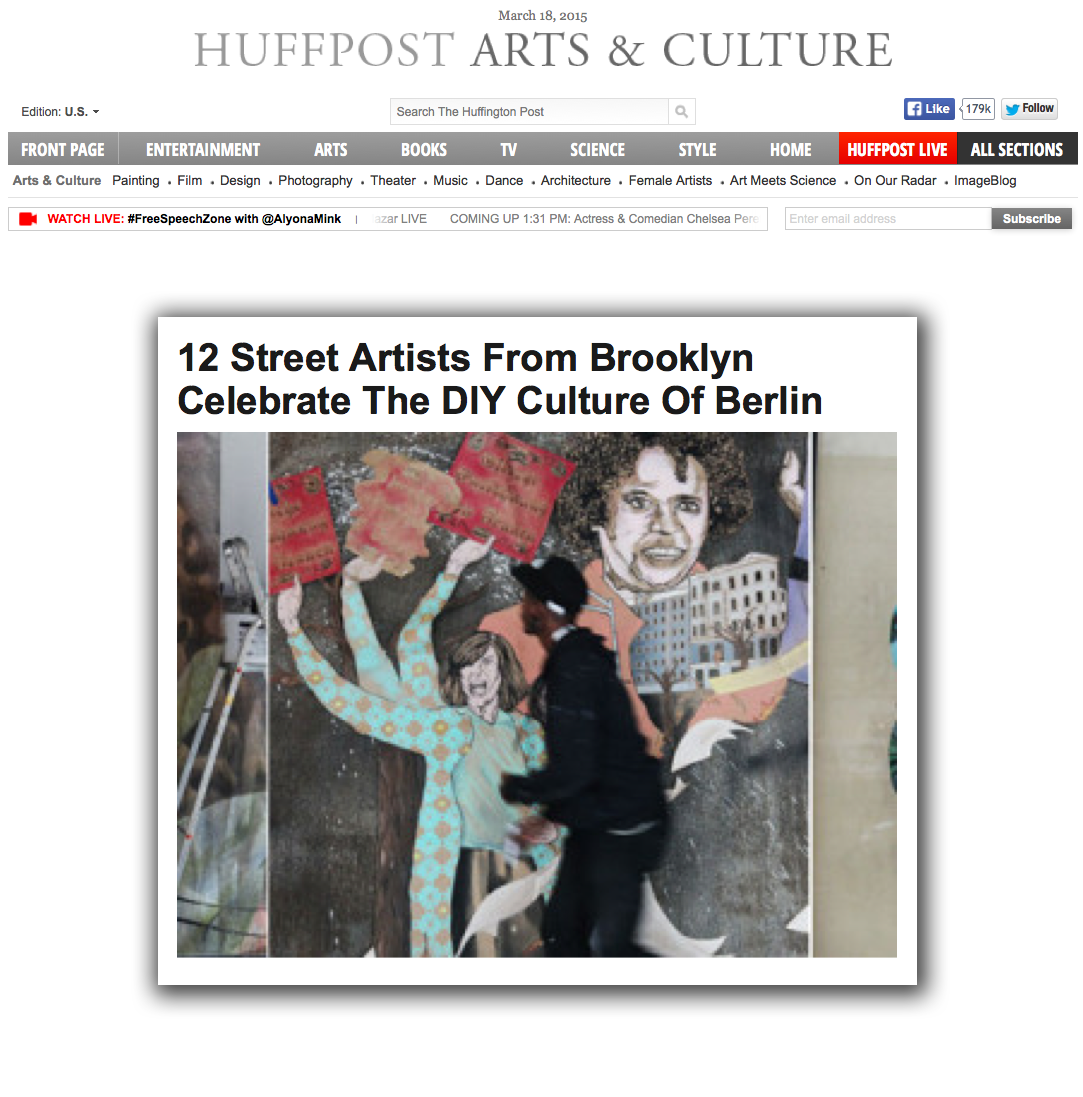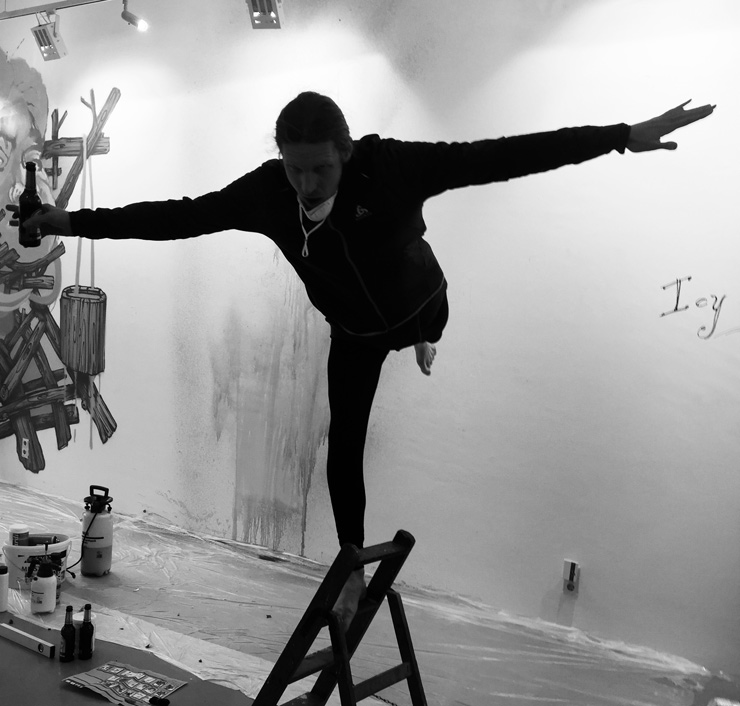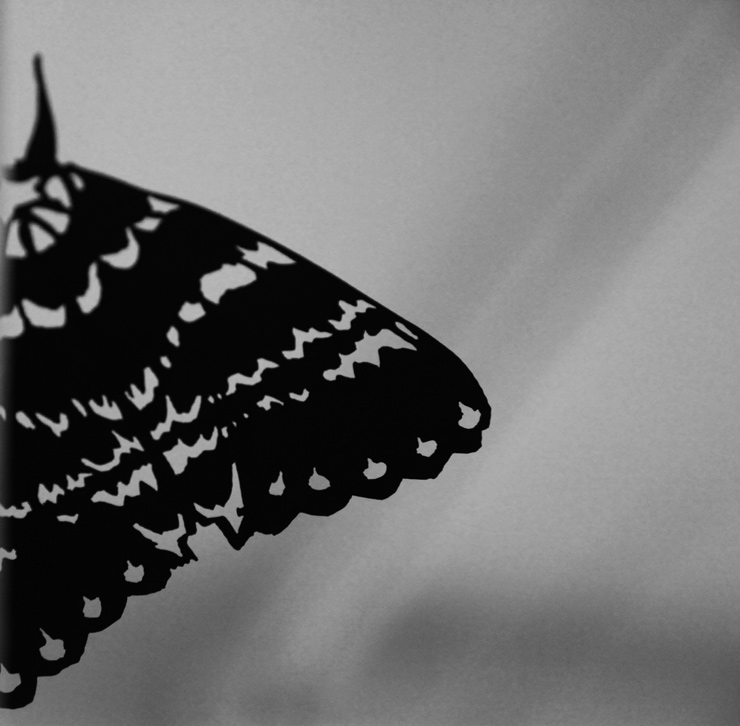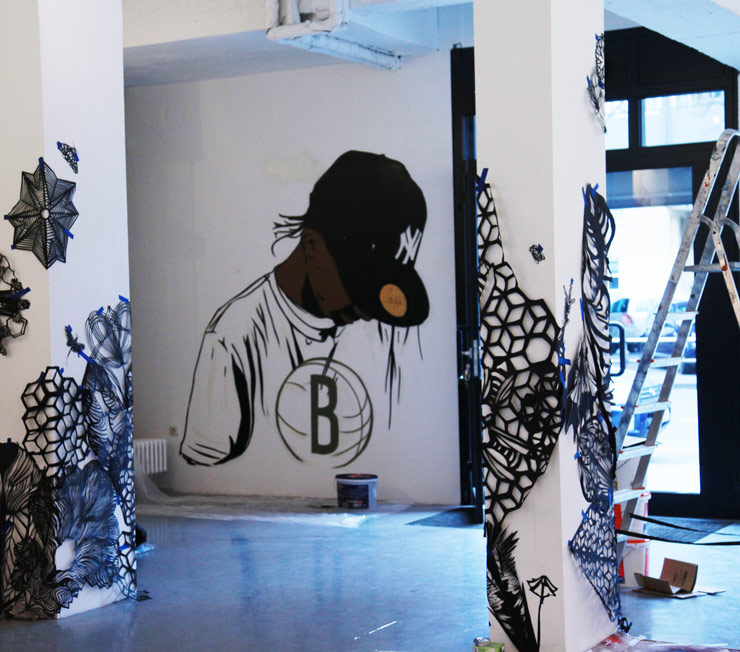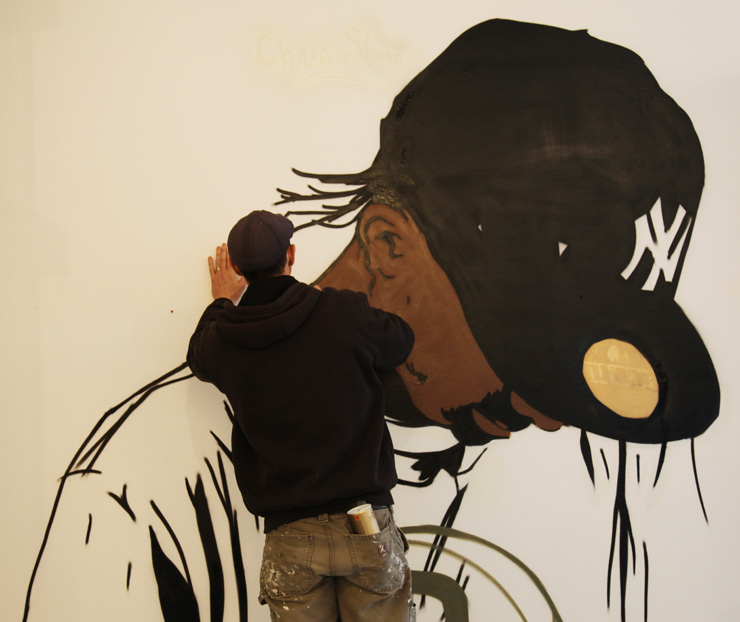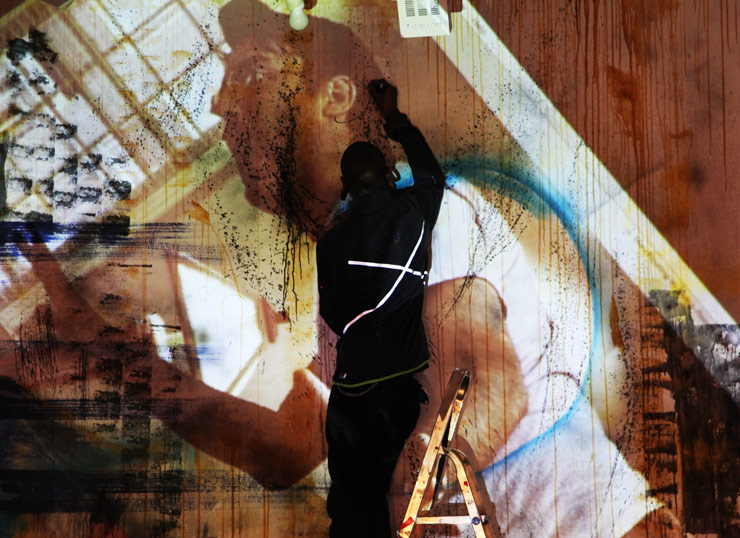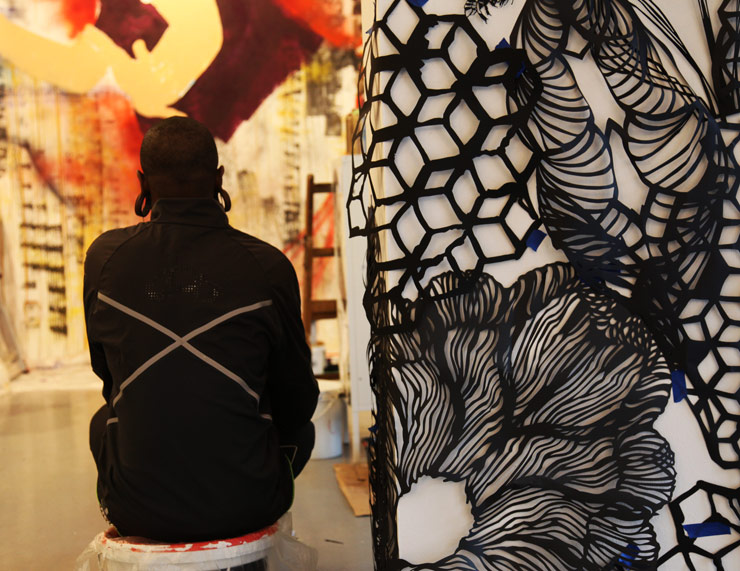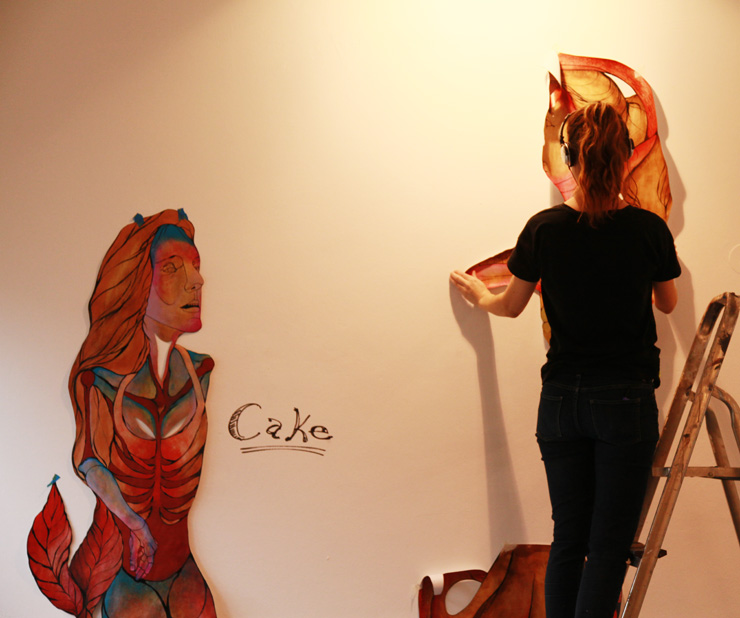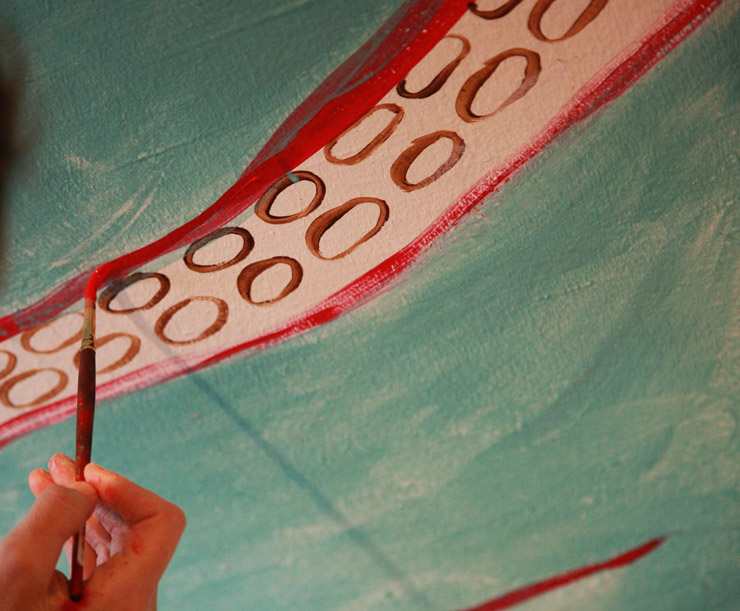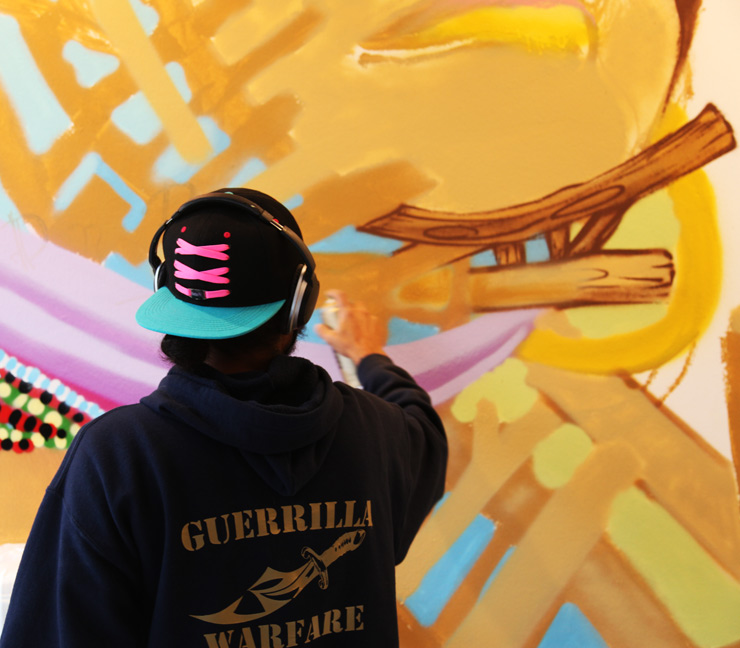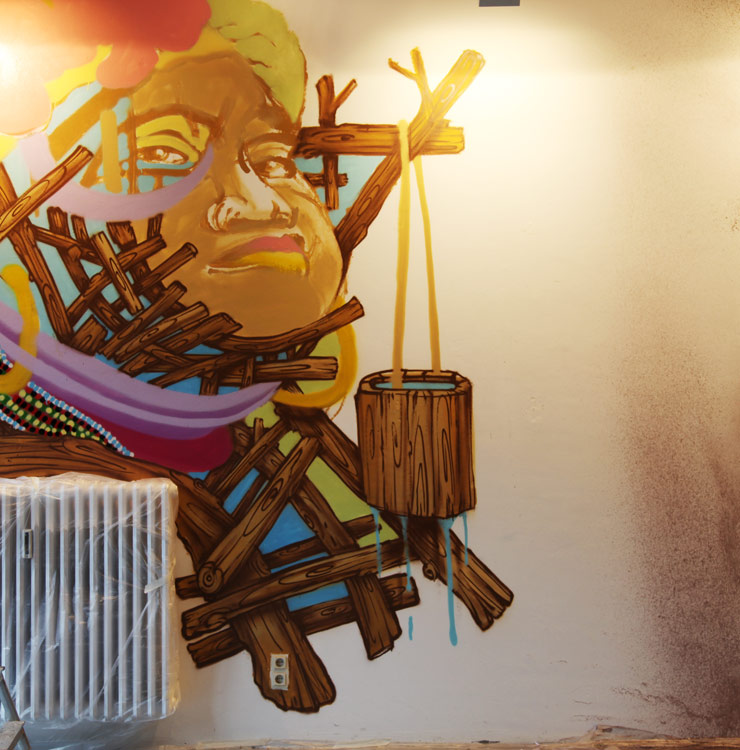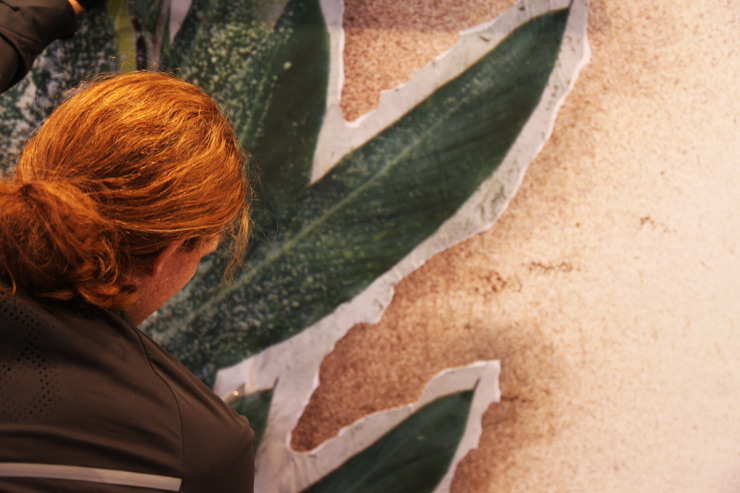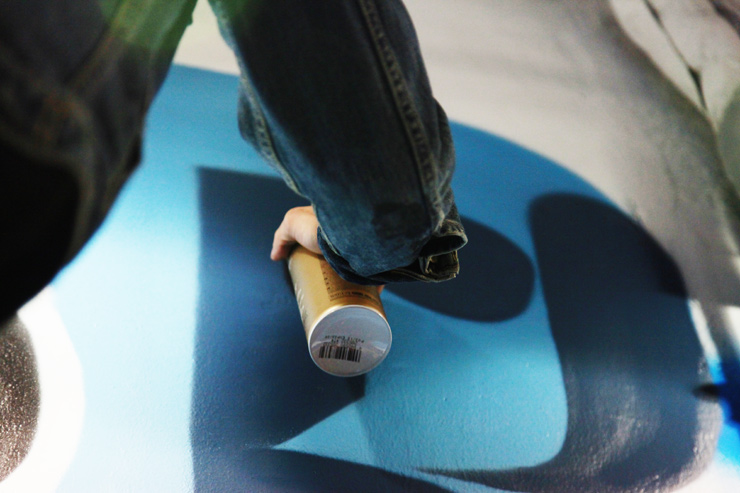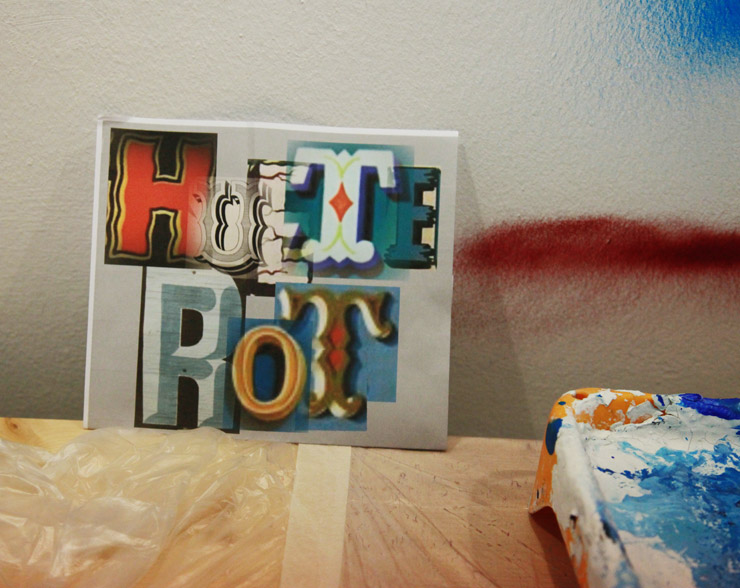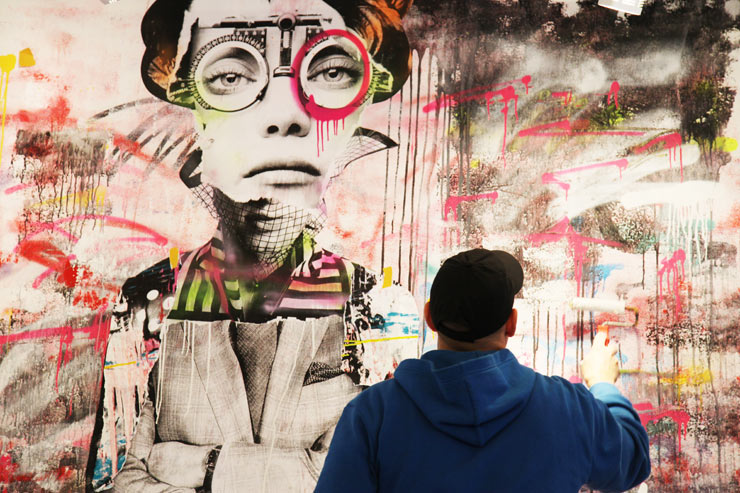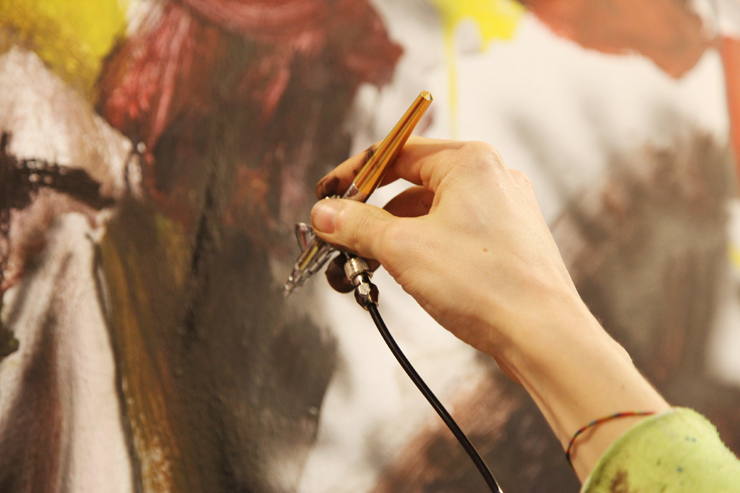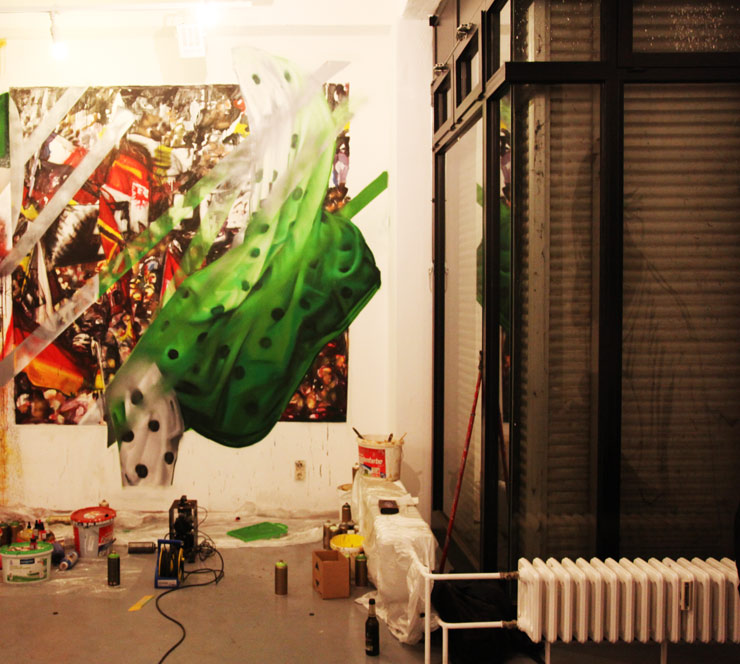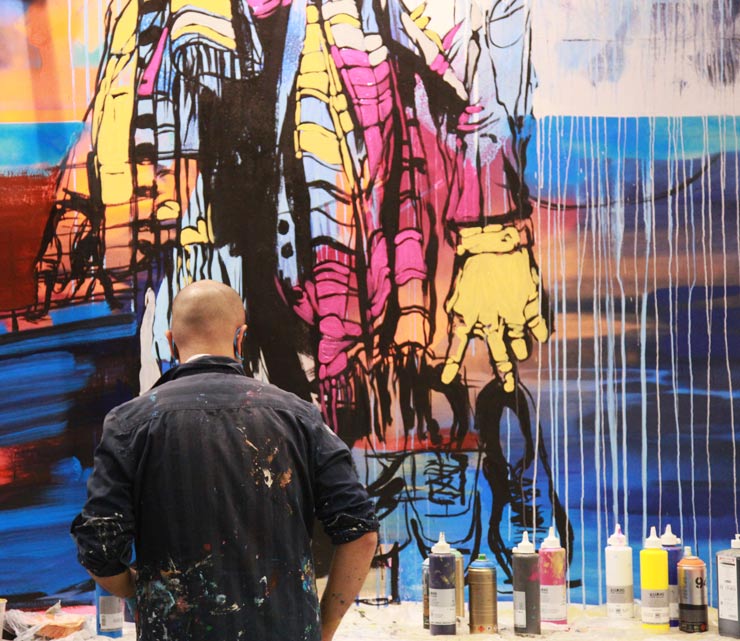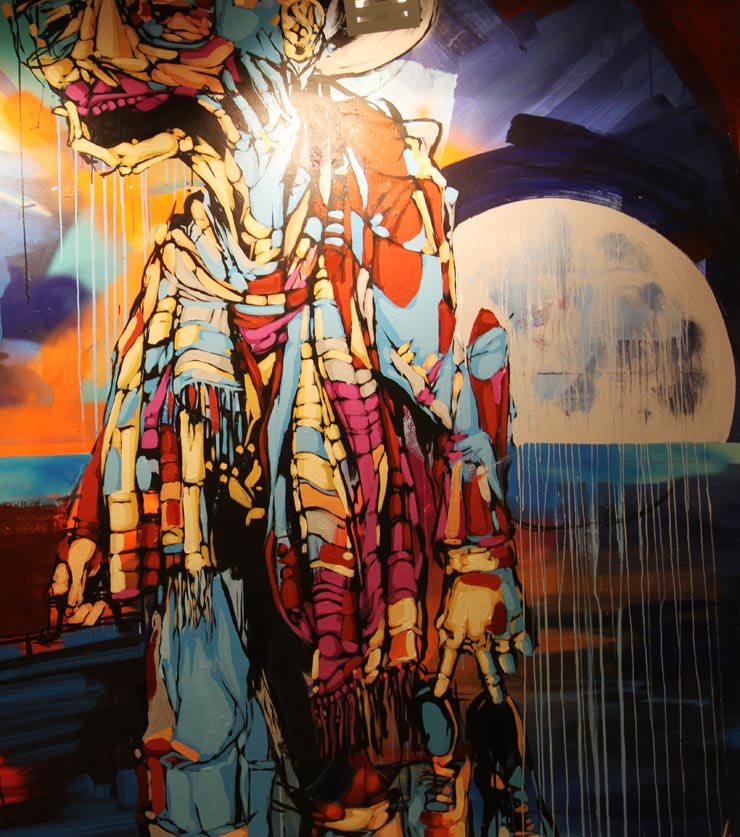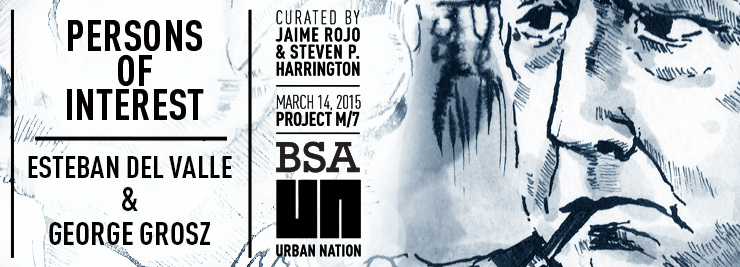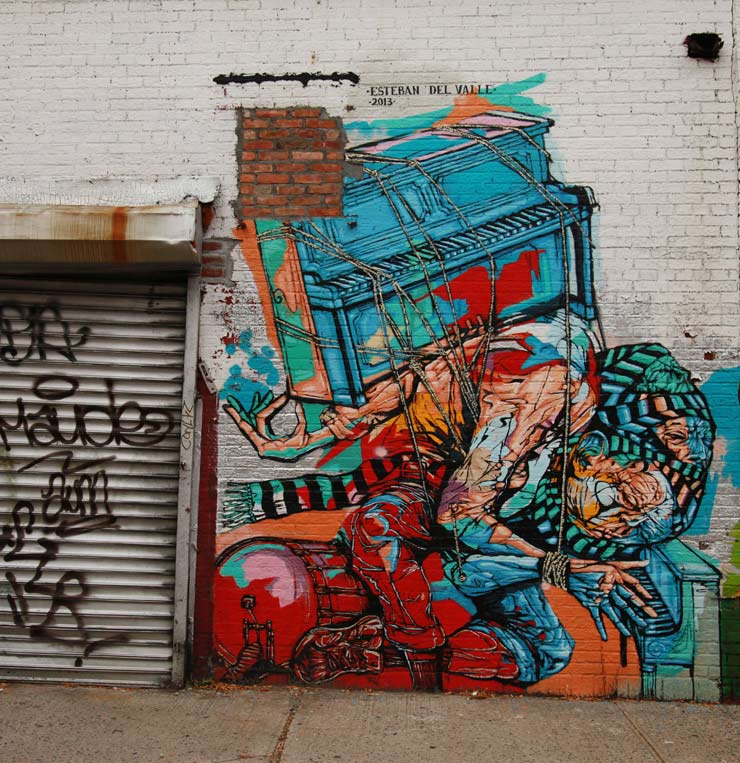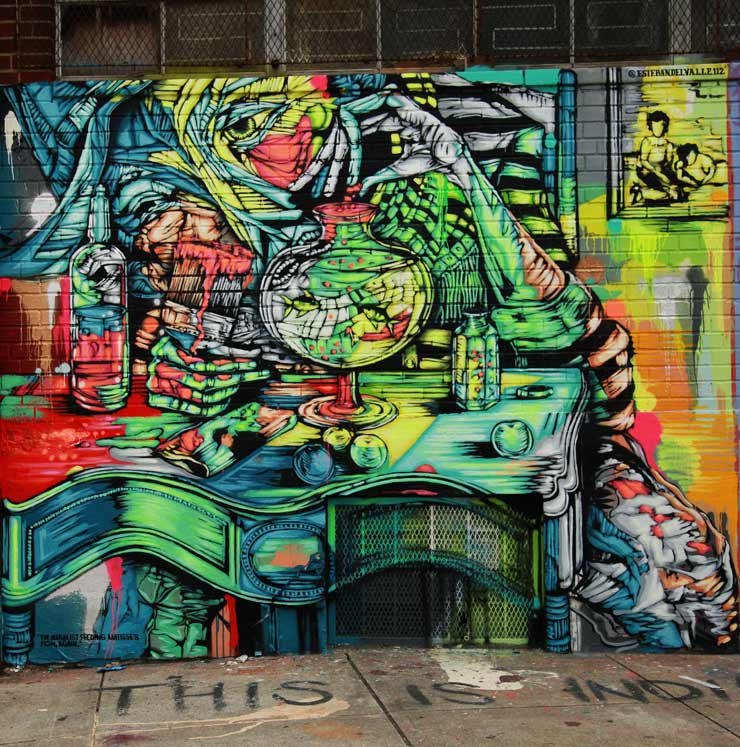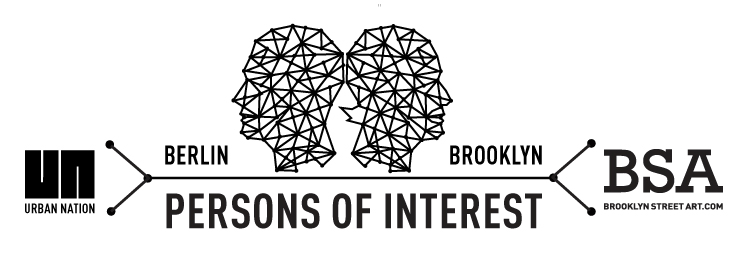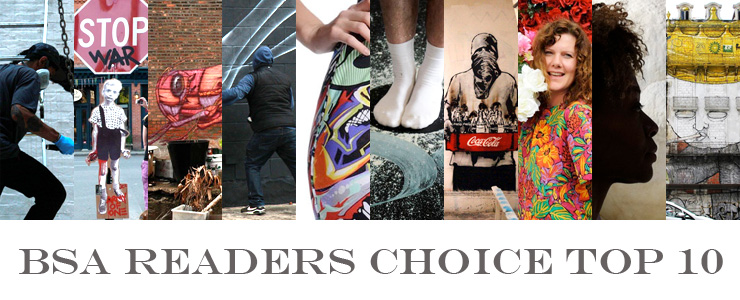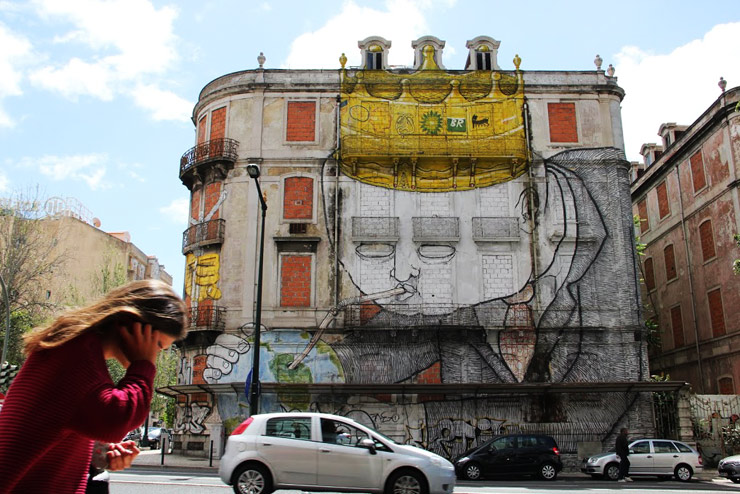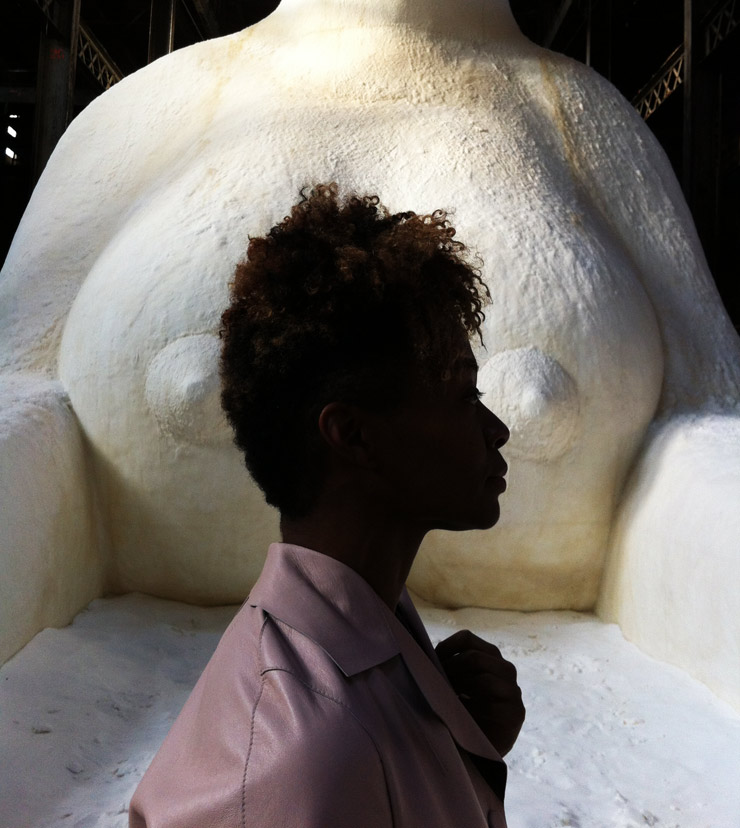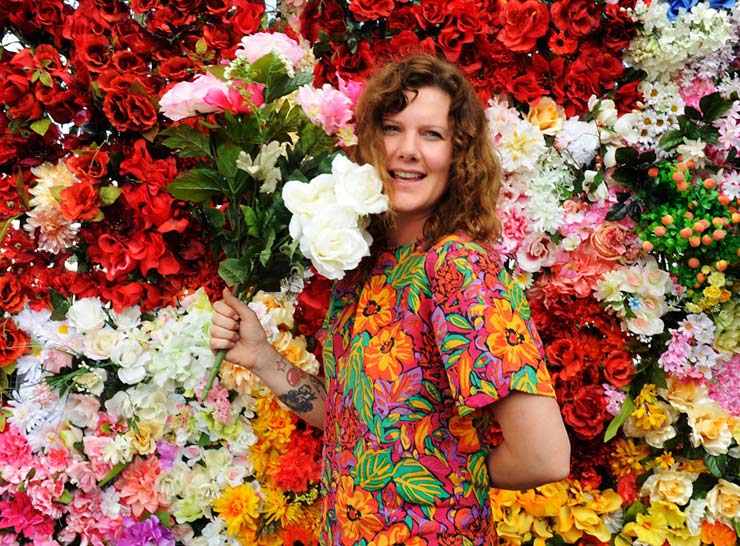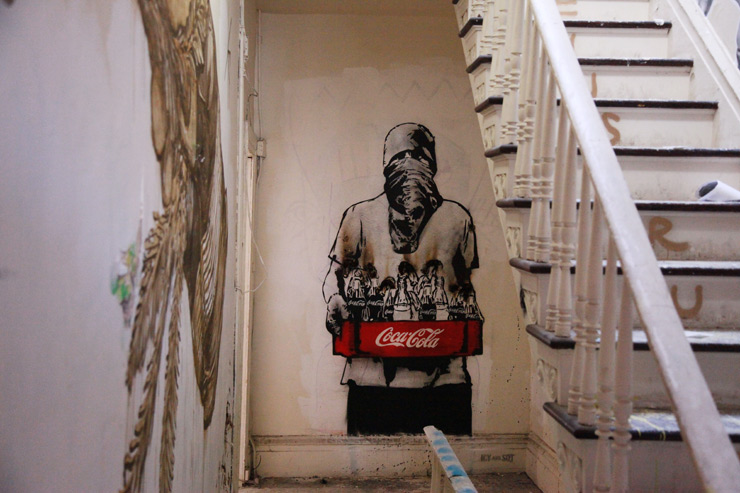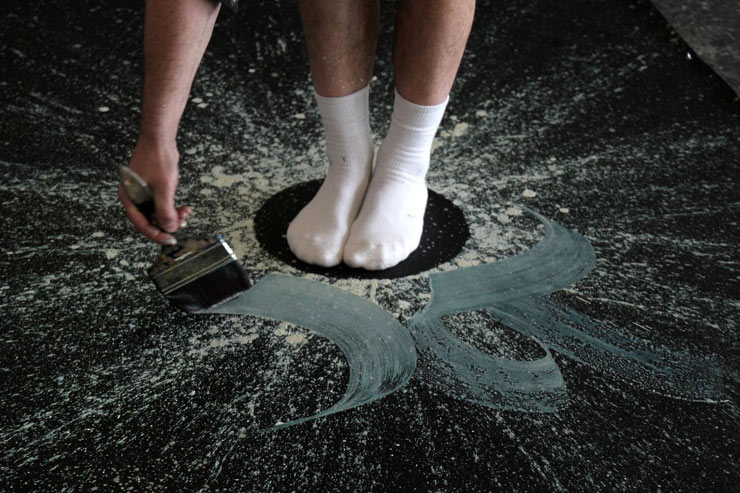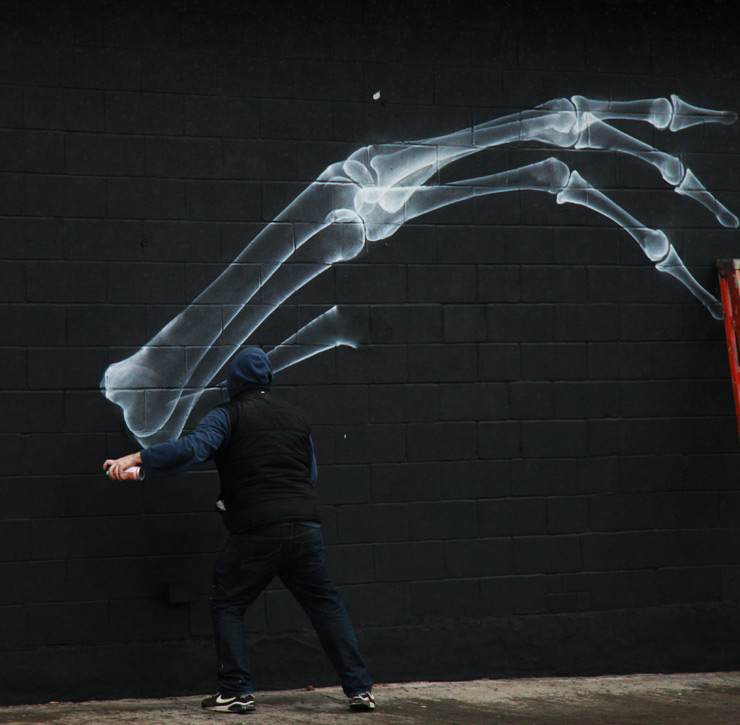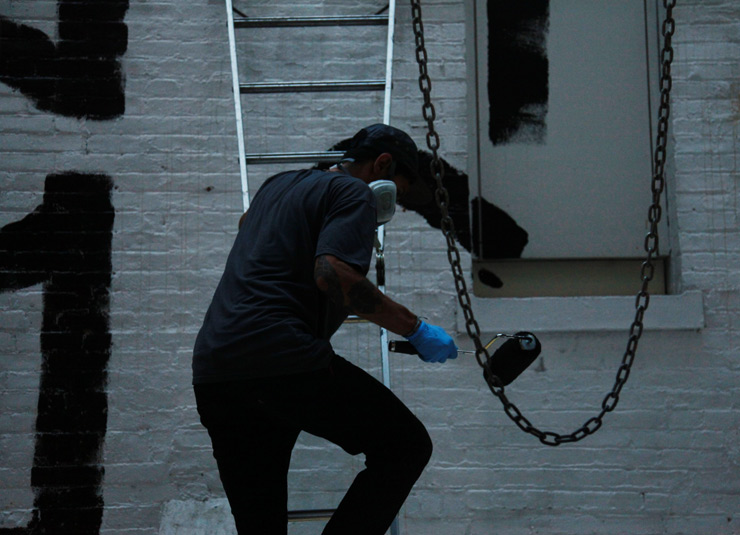Chicago born, Brooklyn-based street artist/fine artist Esteban del Valle is in LA for his first west coast solo show, “Displacing Waves,” and he tells us he is referring to the swelling, cresting, and breaking forces of gentrification that displace communities across the country – and he’s conflicted about it. Most of us think it’s a local story, confined to our own city, but as the middle class is hollowed out and collapsed in the US, del Valle tells us its national and his study of the topic has fueled these “painterly vignettes of contemporary colonialism”.
A student of history, sociology, and anthropology, it is his politically sharpened sense that slices beautifully, an exacting sarcasm that leaves hypocrisy freshly fanned out among the filleted meat selections displayed on canvas.
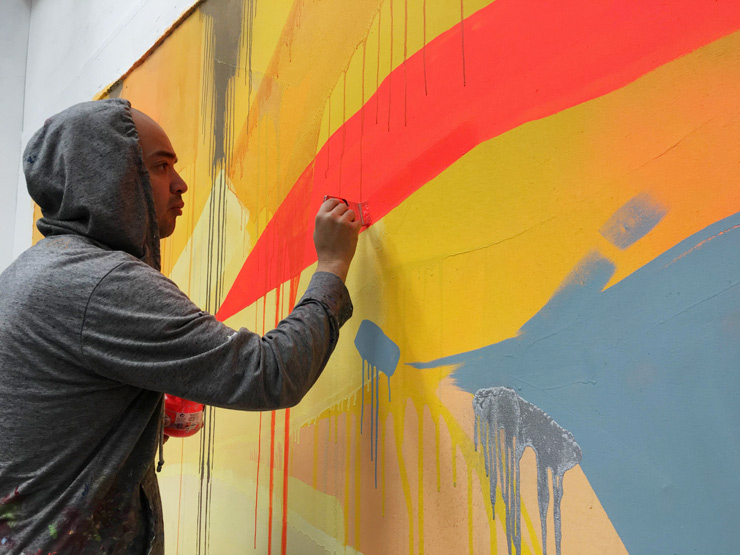
Esteban del Valle. Process shot working on a large piece for his show “Displacing Waves” (photo © courtesy of Esteban Del Valle)
He says the show’s theme evolved after “a culmination of seven months of traveling throughout the United States, from rural Alaska to New York, Miami, and Los Angeles”. The figures are rich, the dynamic styling and tensions ready to be read into.
His techniques of drawing, painting, ink, and wash are amply intermingled, giving layers of emotion and verve to the compositions, pushing personalities to sharp definition. The wet-into-wet wash watercolors and inks reveal layers of character and circumstance, the pladdling and blotting brushes of oil trigger associations, building volume and movement. This is multi-discipline, with a fair margin for rumination and discovery.
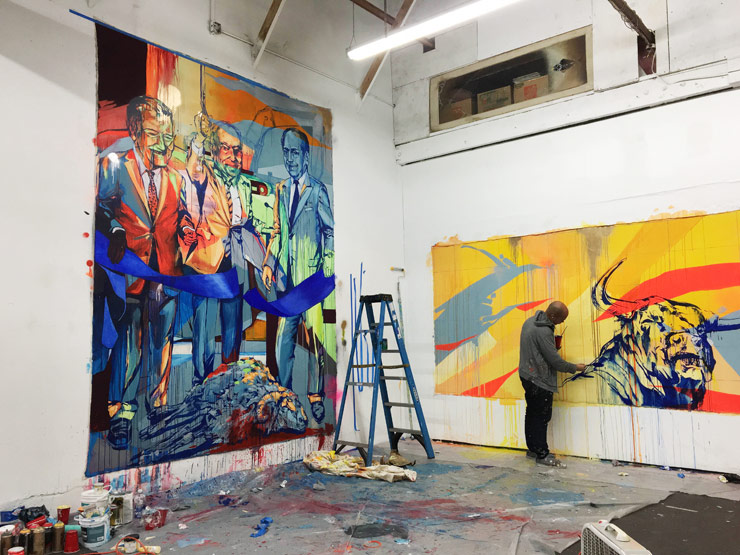
Esteban del Valle. Process shot working on a large piece for his show “Displacing Waves” (photo © courtesy of Esteban Del Valle)
Will these waves of del Valle creates displace the apathy of your average gentrifier? We spoke to him as he prepares for the opening of “Displacing Waves.”
Brooklyn Street Art: “Creative Class” has evolved into a loaded term of late; can you talk about how you are seeing it through a critical lens?
Esteban del Valle: I have been looking at the “creative class” as a group of creatively fluent individuals actively and willingly participating in a post industrial economy with the same capitalistic motivations connected to colonialist notions of “progress”. As much as I hate to admit it, I am a part of this problem; I am a formally educated artist with an advanced degree and I have consistently worked creative jobs using my skills to service the capitalist ambition of upward mobility. However, I am driven by the idea that creativity is at the core of consciousness and the impulse to acknowledge and question the presence of another. I feel like one of the consequences of contemporary “progress” is a tendency to strip creativity of its mystical powers and to view it as a space for material and technological innovation.
Through educational institutions and America’s career-centric culture, we have reserved creative energy for advancements in organizing and storage of measurable information. This has distanced us from the possibility of being open to something different, an expansion of the soul. The cruel twist is that while funding from the arts are being cut in schools, businesses are desperately looking for creative thinkers to help them enter the next phase of the economy. The desire for measurable outcomes is so strong that it bullies any form of thought into a predetermined container, a vessel labeled “progress”.
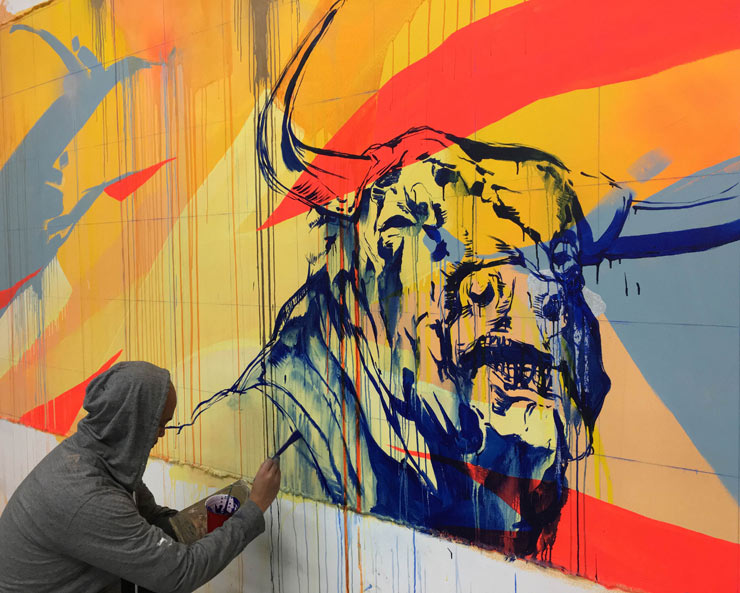
Esteban del Valle. Process shot working on a large piece for his show “Displacing Waves” (photo © courtesy of Esteban Del Valle)
This whole body of work really grew organically out of my travels. But the funny thing is, as much as I was seeing these issues of displacement everywhere I went from Alaska to Miami, the main thing that kept repeating was my anxiety about returning home to Brooklyn. I found myself looking to more affordable areas of Queens and I felt the conversation happening all over again. The conversation that was happening in Bed-Stuy when I first moved to New York and into a live/work art space near the Marcy Houses. I started to think about how my arrival in a neighborhood could be a reflection of the same gentrification that I found so upsetting. This went hand in hand with my feelings about certain practices in the Street Art movement that were not sitting right with me, such as being used by developers to set the groundwork for displacement.
I began to think about how murals function over time, like how a WPA mural changes in its function and meaning as we move into and increasingly technological economy with out-sourced labor. It occurred to me that I could create my own paintings with a sense of historical distance. So an image of a young man drinking coffee could become a loaded subject when placed in a larger context. This correlation interested me because it reflects my relationship to the seemingly innocent acts of the creative class itself when it is engaged in “progress”. David Foster Wallace once described it as us viewing ourselves as emperors of our own skull sized kingdom. We begin to view the world as an extension of ourselves, while seeing our objective of personal fulfillment and entertainment as seemingly innocent and unrelated to larger injustices.
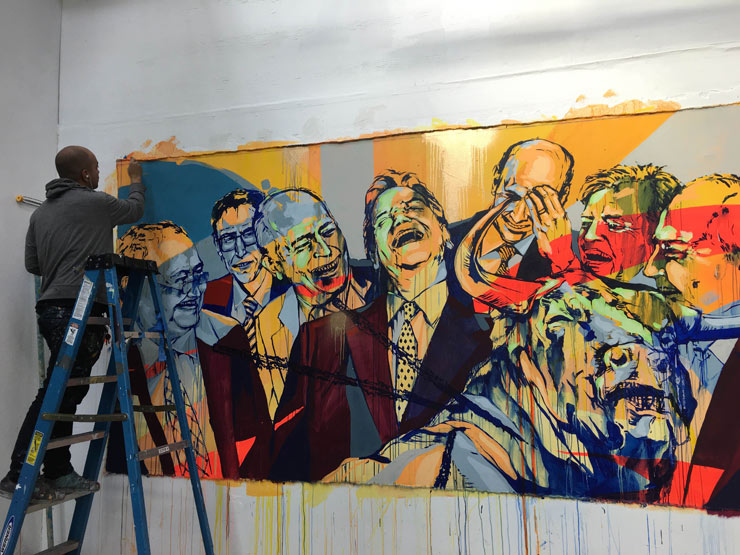
Esteban del Valle. Process shot working on a large piece for his show “Displacing Waves” (photo © courtesy of Esteban Del Valle)
Brooklyn Street Art: Can you talk about the variety of personalities that you capture with your line-work? Are you rendering an opinion of the individuals or are you capturing them dispassionately?
Esteban del Valle: This show is the first stage of my reaction to the issues. I think it’s a mixture of anger and a sense of futility as a self-assigned voyeur. There are only a few pieces that outright attack the issues violently, most can be glossed over as attractive with a tinge of irony. I recently heard the saying, “irony is the song of a bird that has come to love its cage.” I think that’s what I felt implicated in. I wanted to show how an image can seem innocent and even glamorous. The beautiful renovations, improvements in the neighborhood, the bustling shops, all seem to be an image of “progress”. So my goal was to couple that surface interaction with hints of conflict and place them next to blatant conflict. This tension between the “attractive” and the “difficult” is the main interest behind my color choice as well. I cannot separate myself from the accountability, which is one reason why several of the pieces are portraits of friends or direct criticism of my self as an artist.
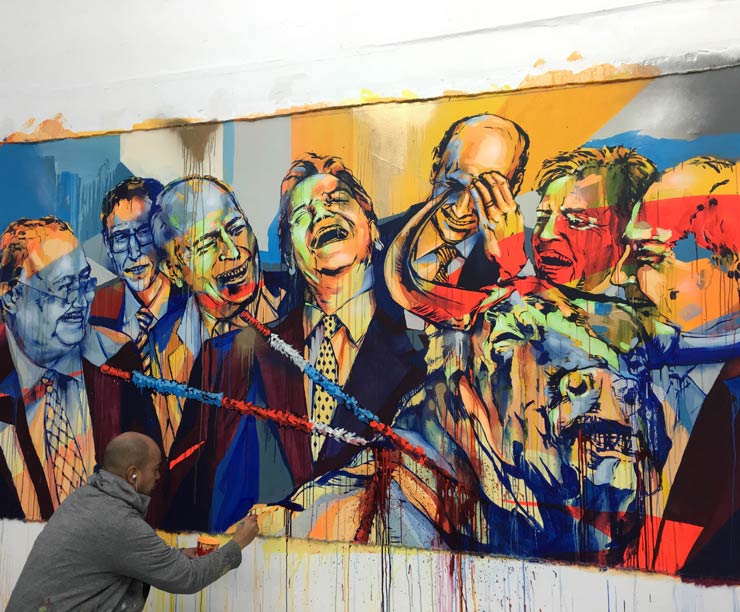
Esteban del Valle. Process shot working on a large piece for his show “Displacing Waves” (photo © courtesy of Esteban Del Valle)
Brooklyn Street Art: For your selections of techniques – staining, masking, washes, dry-brush, granulation – how do you decide what comes next? Does the composition tell you? Do you discover it? Are you using a cognitive process or an emotional one?
Esteban del Valle: I begin with an abstract base and I draw on top of it, but I have always viewed my process as a sort of call and response, an exchange between painting and drawing. Illustration is historically a communicative medium while painting has evolved to abstract communication. But the evolution of both seems to be the rooted in the same intention. Abstraction seems to aim at abandoning spoken language to create a mood and maximize its audience.
That being said, we have found ways to categorize and contextualize arbitrary marks, record them in a historical perspective, and create an information-based language, which is the foundation of many institutions. Illustration has often served the purpose of conveying literal information as it priority with the same goal of maximizing its audience. My personal project has been to dance between these two spaces. At the moment, I don’t feel like I am discovering as much as learning from the problems each painting creates, both in regards to form and content. In that way I think it is both cognitive and emotional.
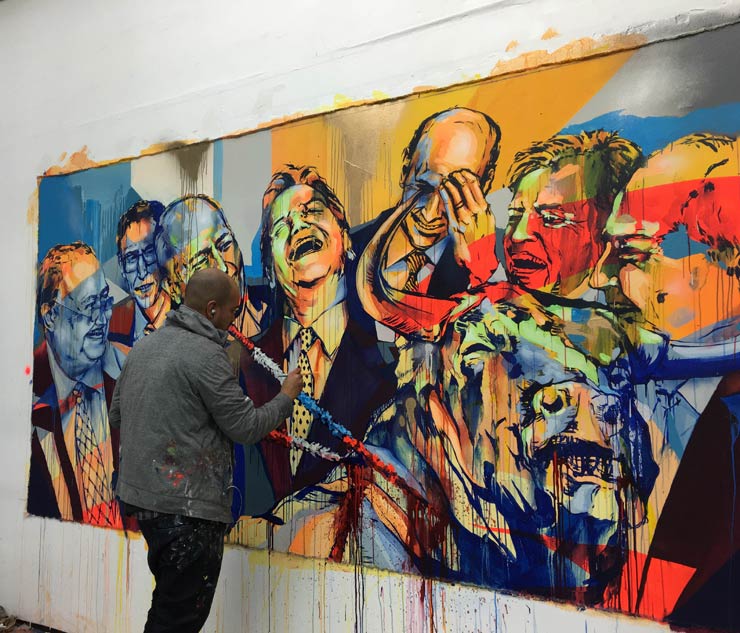
Esteban del Valle. Process shot working on a large piece for his show “Displacing Waves” (photo © courtesy of Esteban Del Valle)
Brooklyn Street Art: These people are often in groupings. How important are the relationships between them?
Esteban del Valle: Very important. The figures provide tension between each other and different elements of their respective narrative. They are used to depict a moment of a story which hopefully leads to questions from the viewer as to what, how, and why they ended up in this space.
Brooklyn Street Art: Would you give us a little background on the theme of “Displacing Waves” – are these political waves, energetic waves, historical/cyclical ebbs and flows?
Esteban del Valle: All of the above. It began as a thought regarding the pushing and pulling of gestures between the backgrounds and foregrounds of my paintings, allowing the abstraction to impose itself back on top of the illustration. I found that when this happened, I couldn’t help but read the arbitrary gestures as having a narrative function. They became clouds, fire, waves, etc. This reflected my feelings regarding the content as I tried to understand my role in it all. What did it mean to be displaced and/or being an agent of displacement, which sometimes occurs simultaneously. I began to think about oppression as a byproduct of power grabs, like ripples from a splash. It struck me as a terrifyingly poetic image, something like a person trying to use force to posses a single wave in an ocean.
Brooklyn Street Art: You’ve painted outside and in studio a number of times over the last year. How is your work affected by the presence of an audience as contrasted with the solitude of the studio?
Esteban del Valle: I think I carry the “public” audience with me even in the studio, almost like a phantom limb left over from painting outdoors. But I will say that when I am alone in the studio, I try to push myself to find something new and uncomfortable. I take risks and see where they lead me, but I often do so with the idea that I am preparing the next stage of my work for public space. I think it’s important for artists to find time away from an audience to try to find the closest thing to their intuition, a voice less bothered by the suggestions and opinion of others. Then you reveal it to the world as a way of destroying it, leaving you to start all over and rediscover your differences.
********************************************************
Esteban del Valle Displacing Waves will open this Saturday, January 9th at Superchief Gallery in Los Angeles. Click HERE for more details.
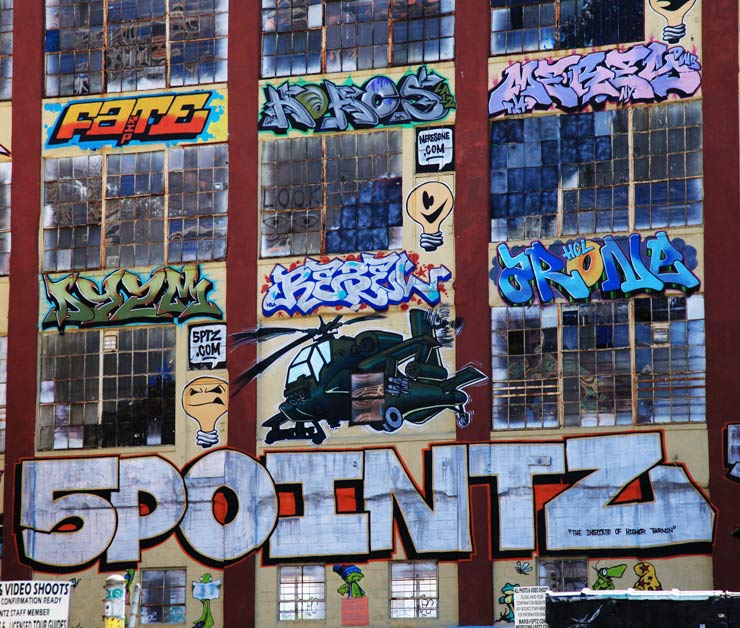
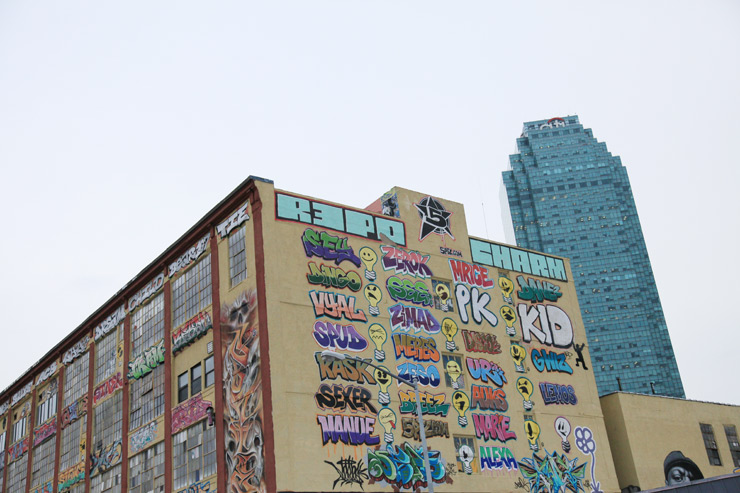
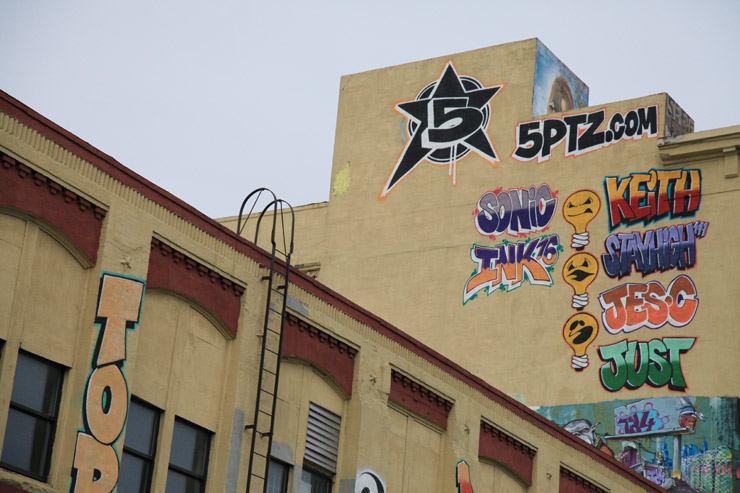
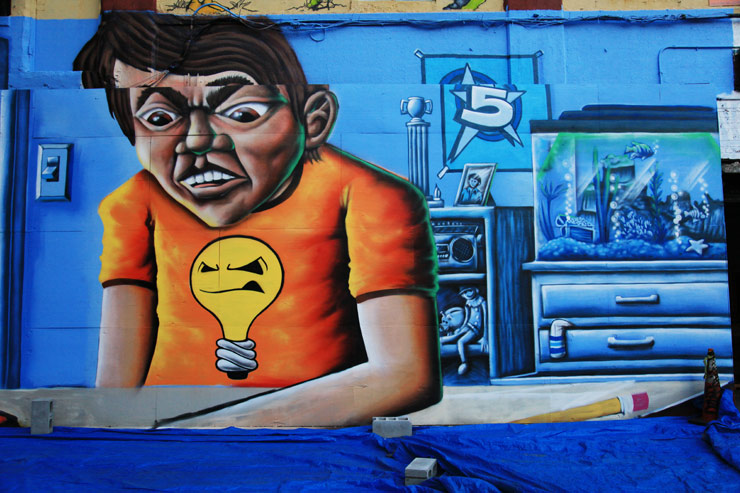
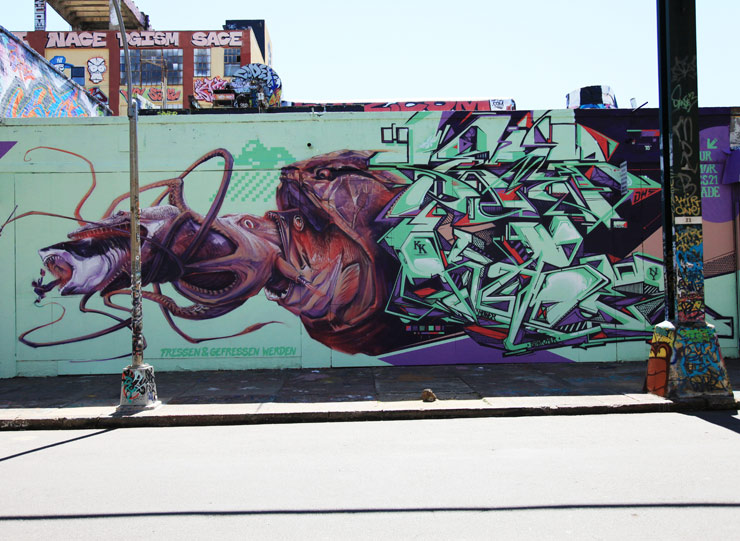
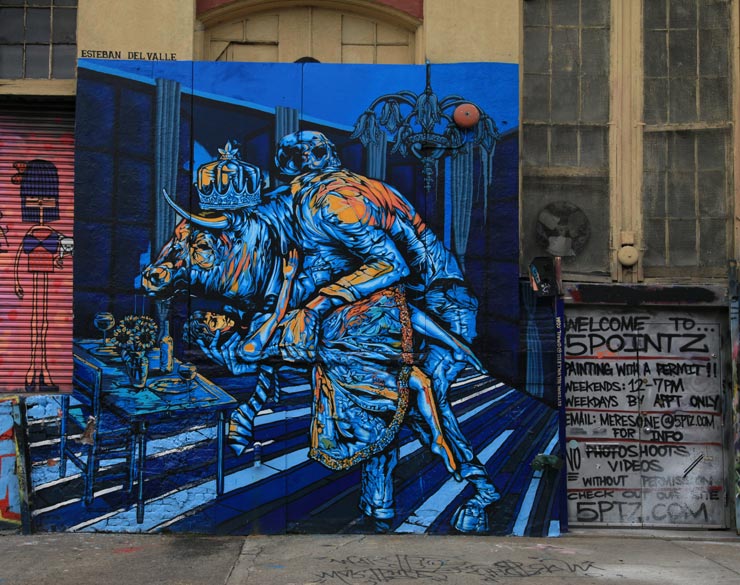
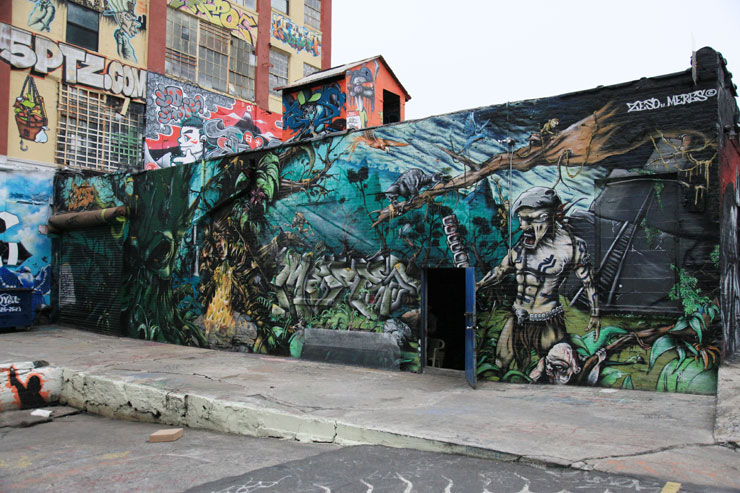

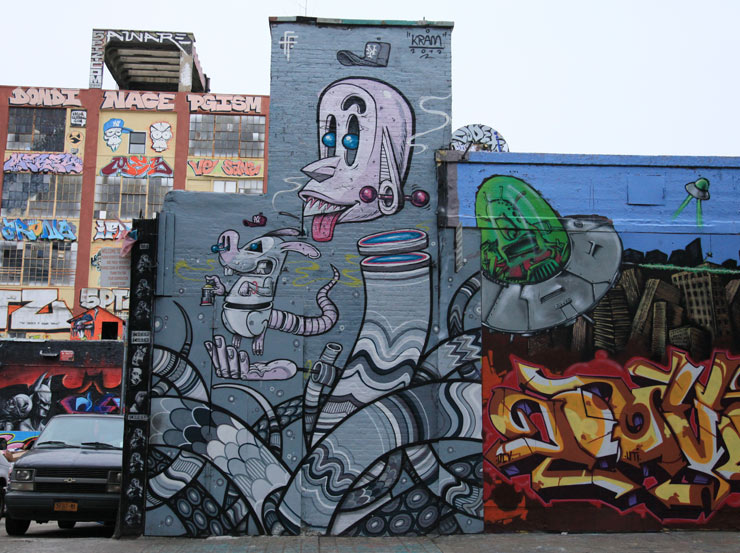
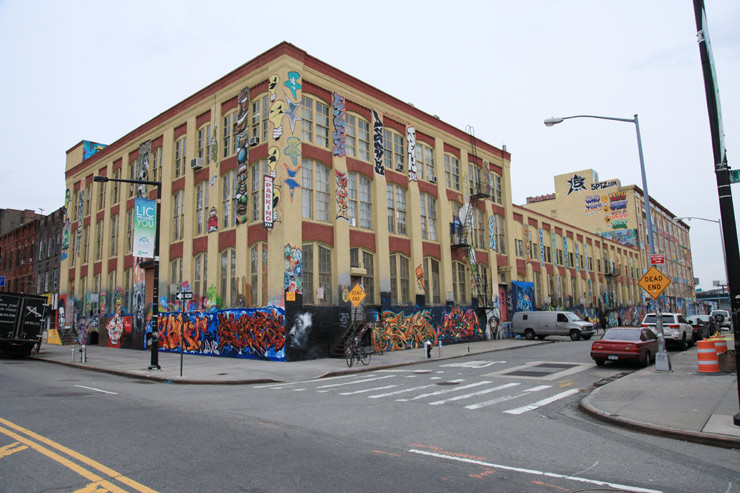
 BROOKLYN STREET ART LOVES YOU MORE EVERY DAY
BROOKLYN STREET ART LOVES YOU MORE EVERY DAY
